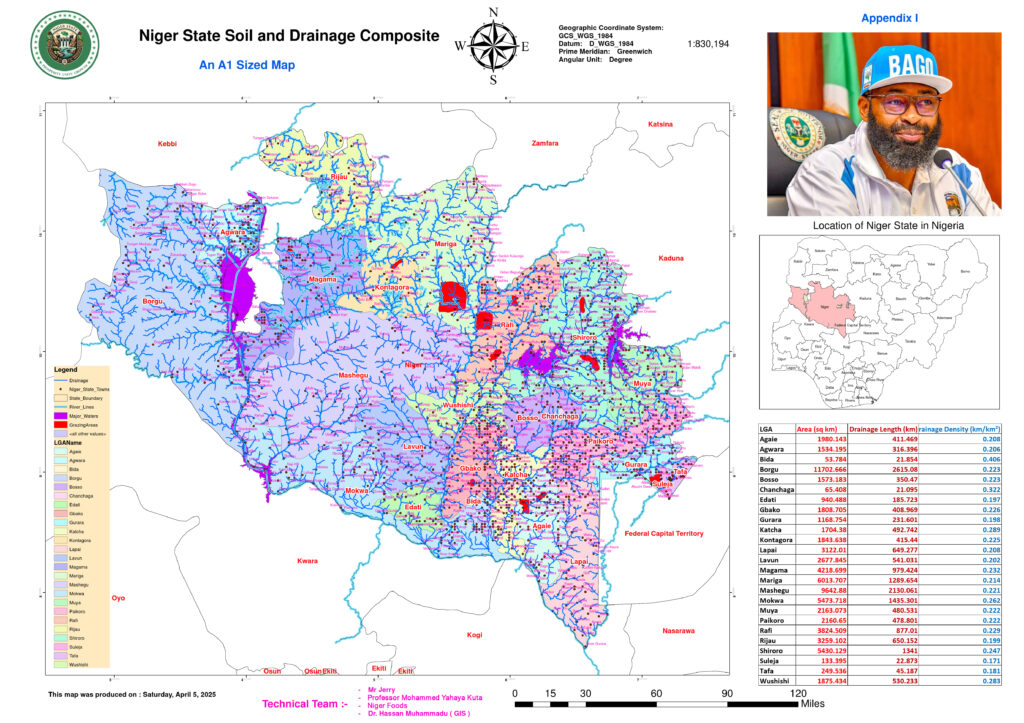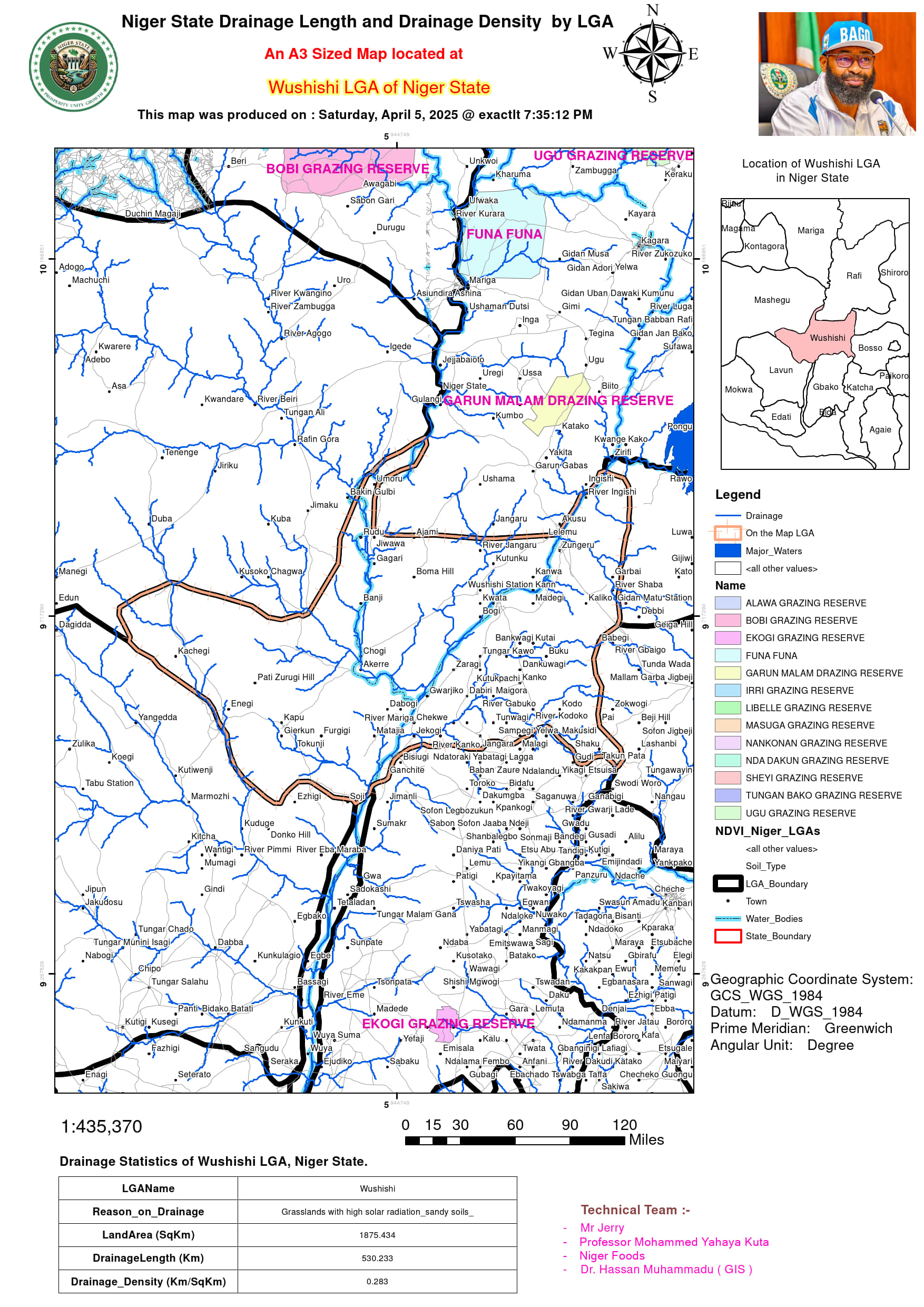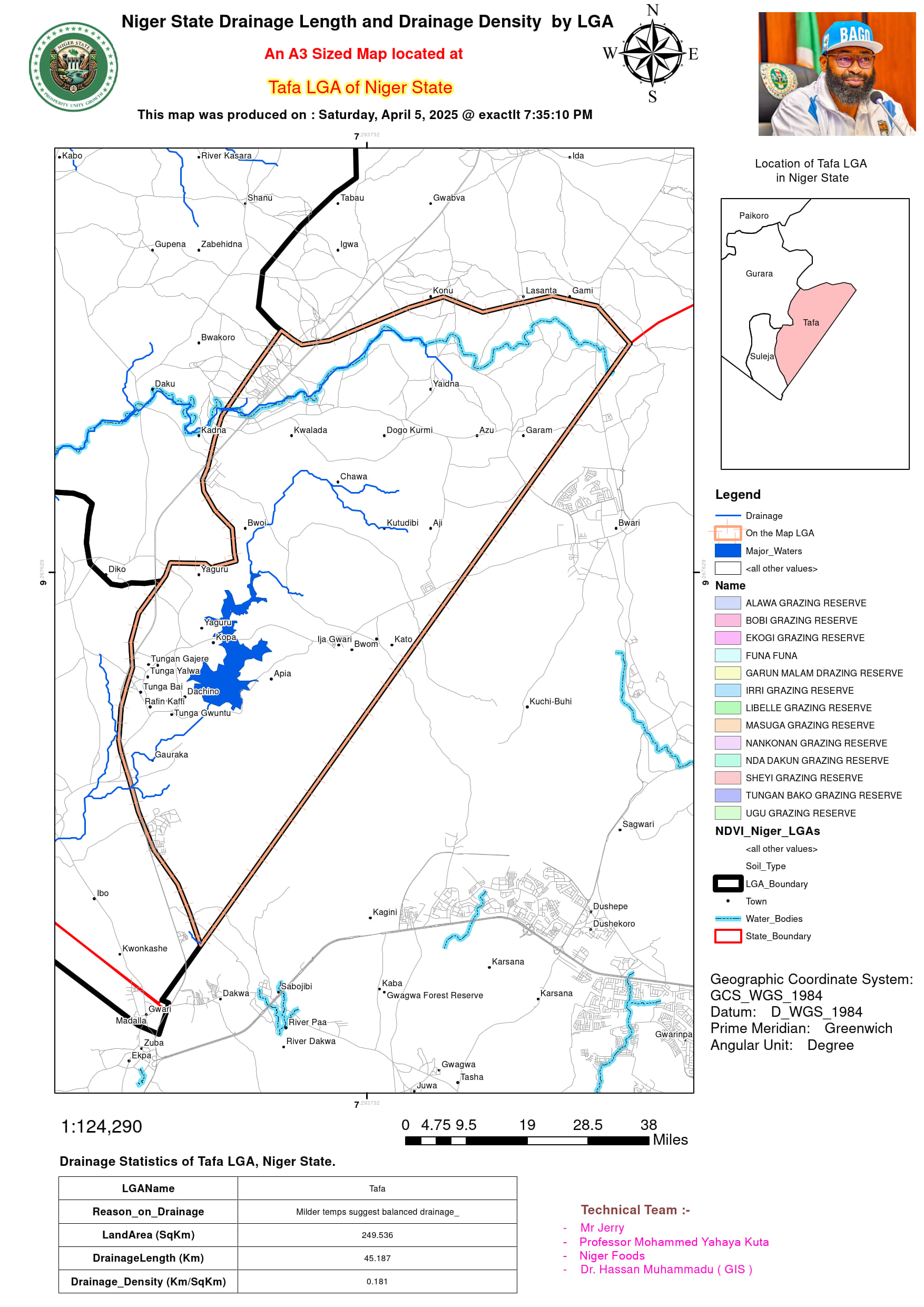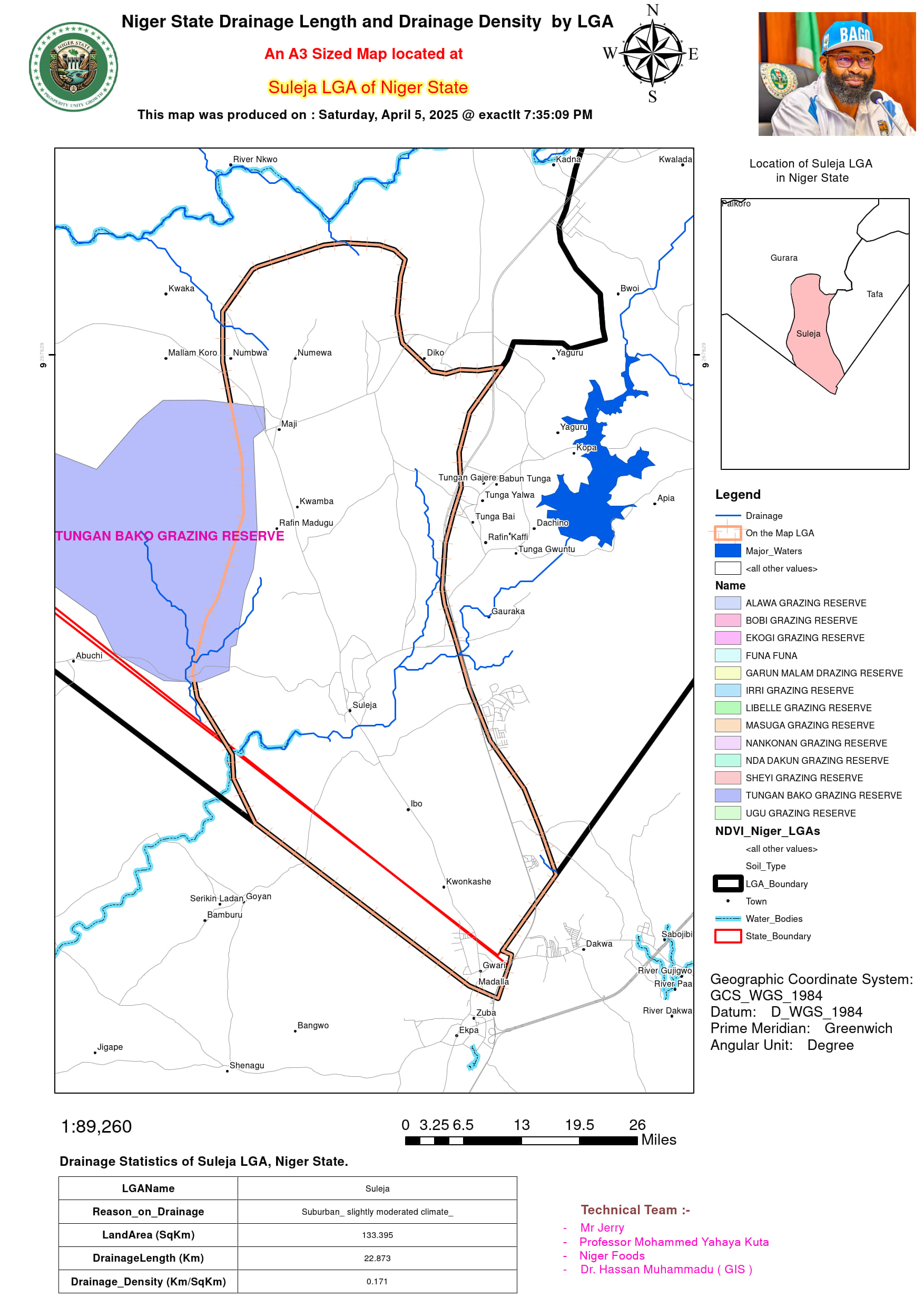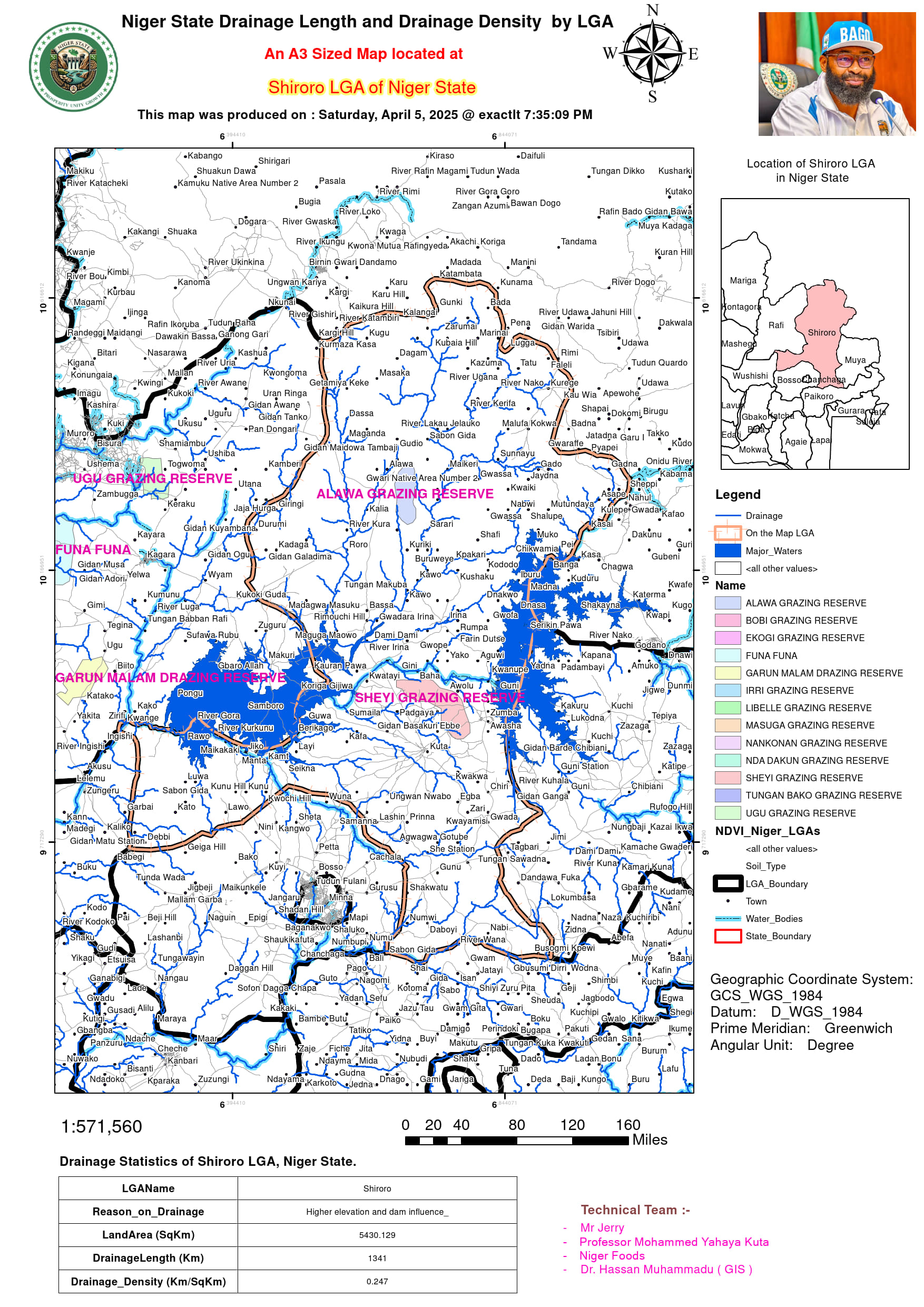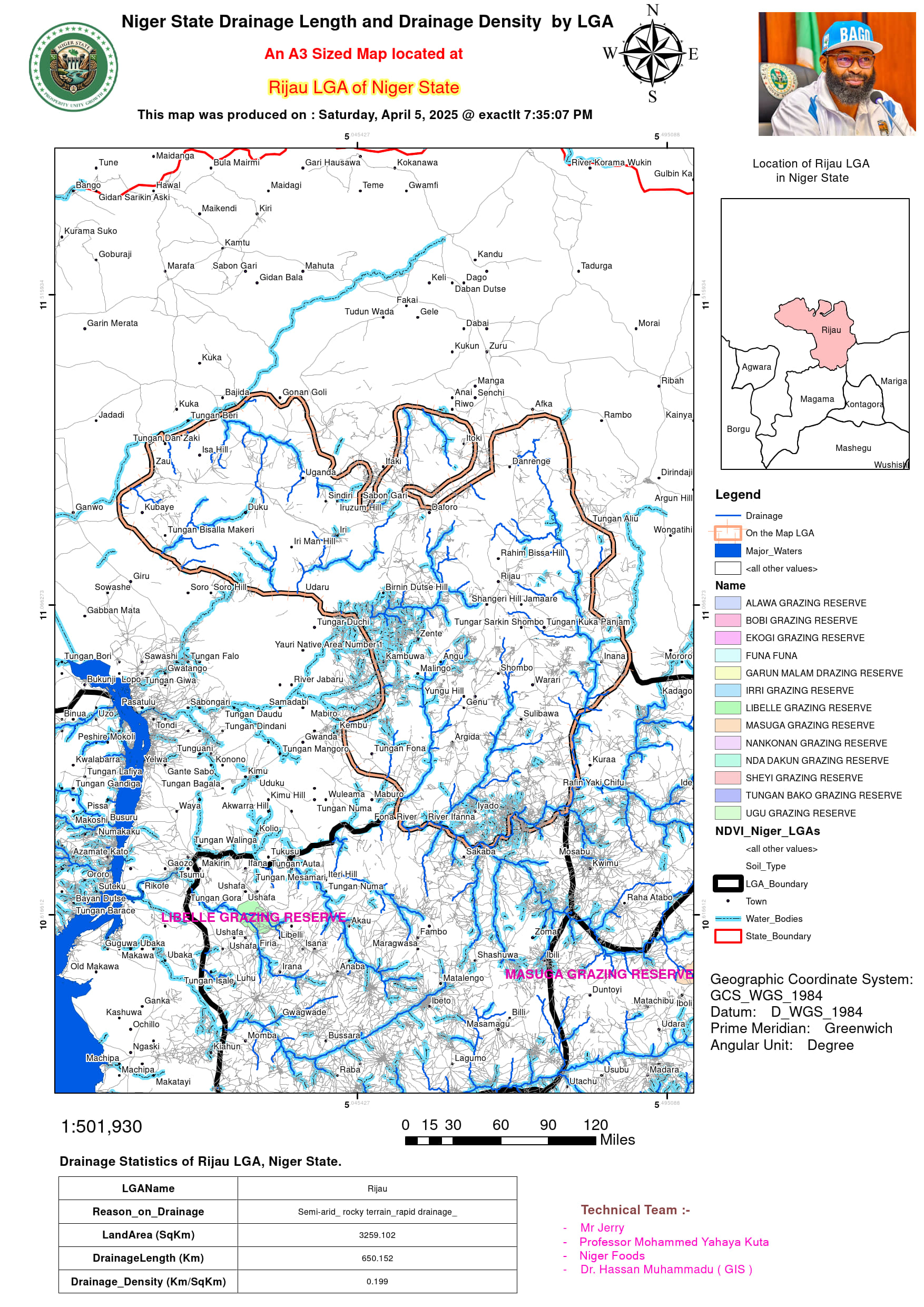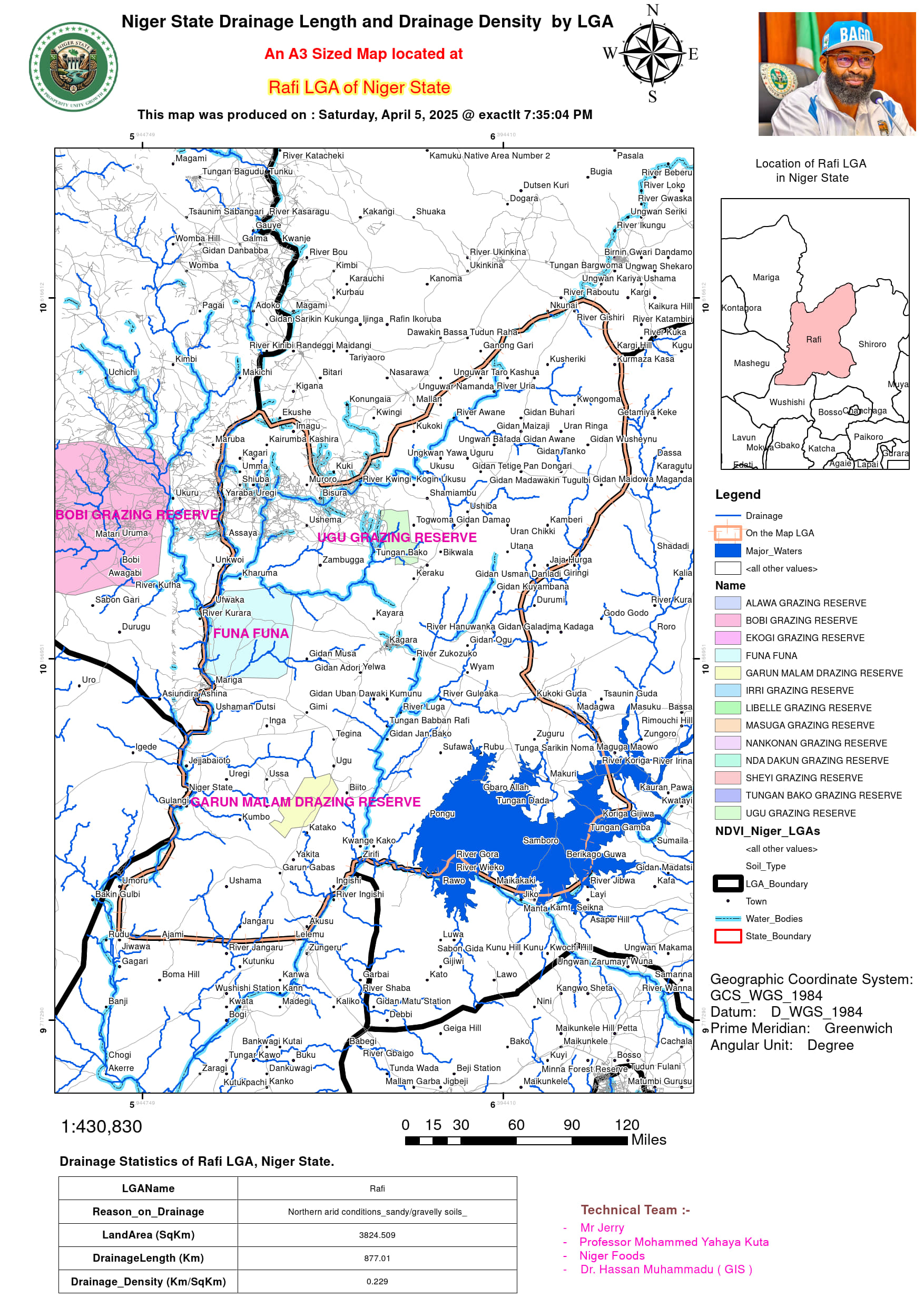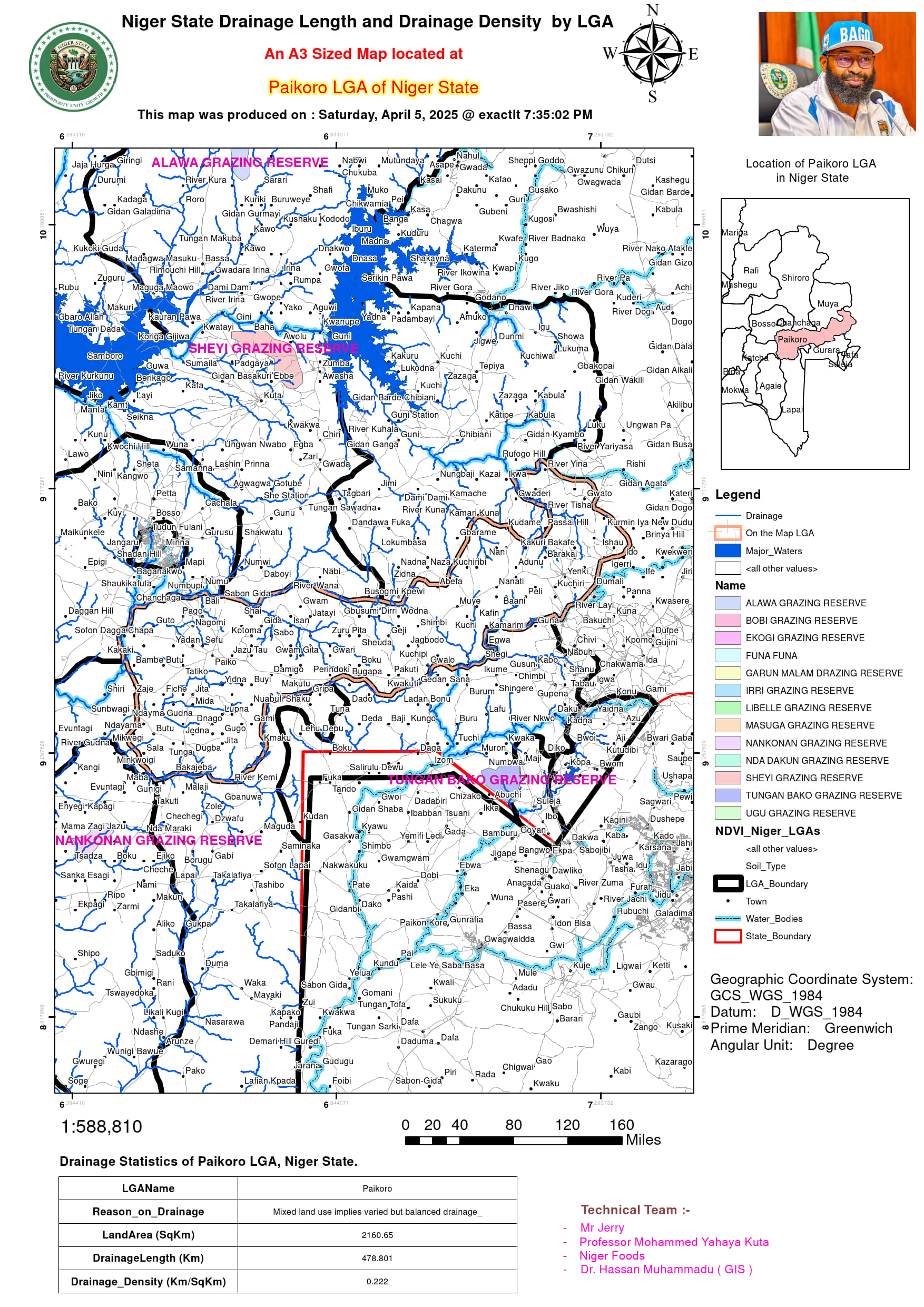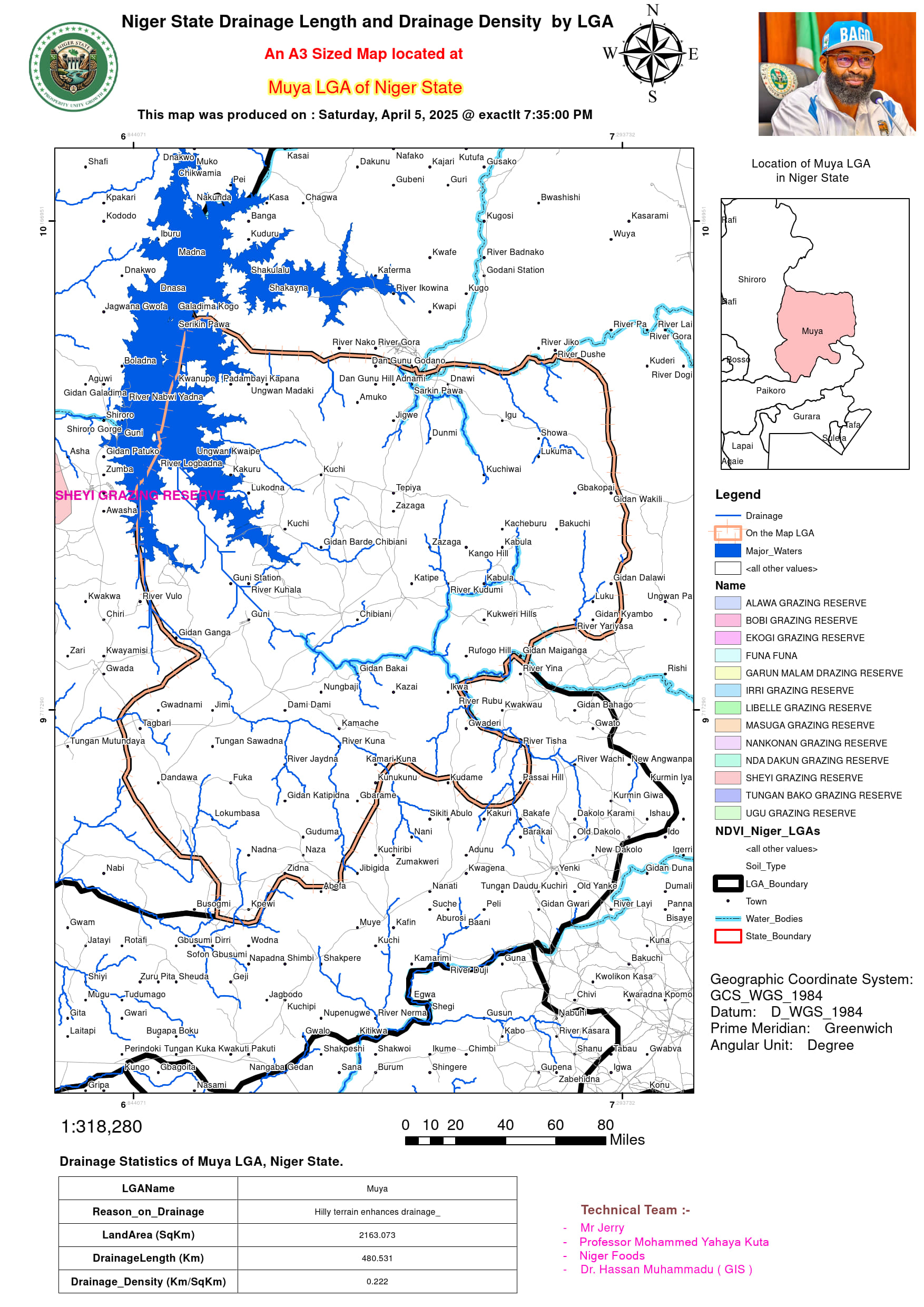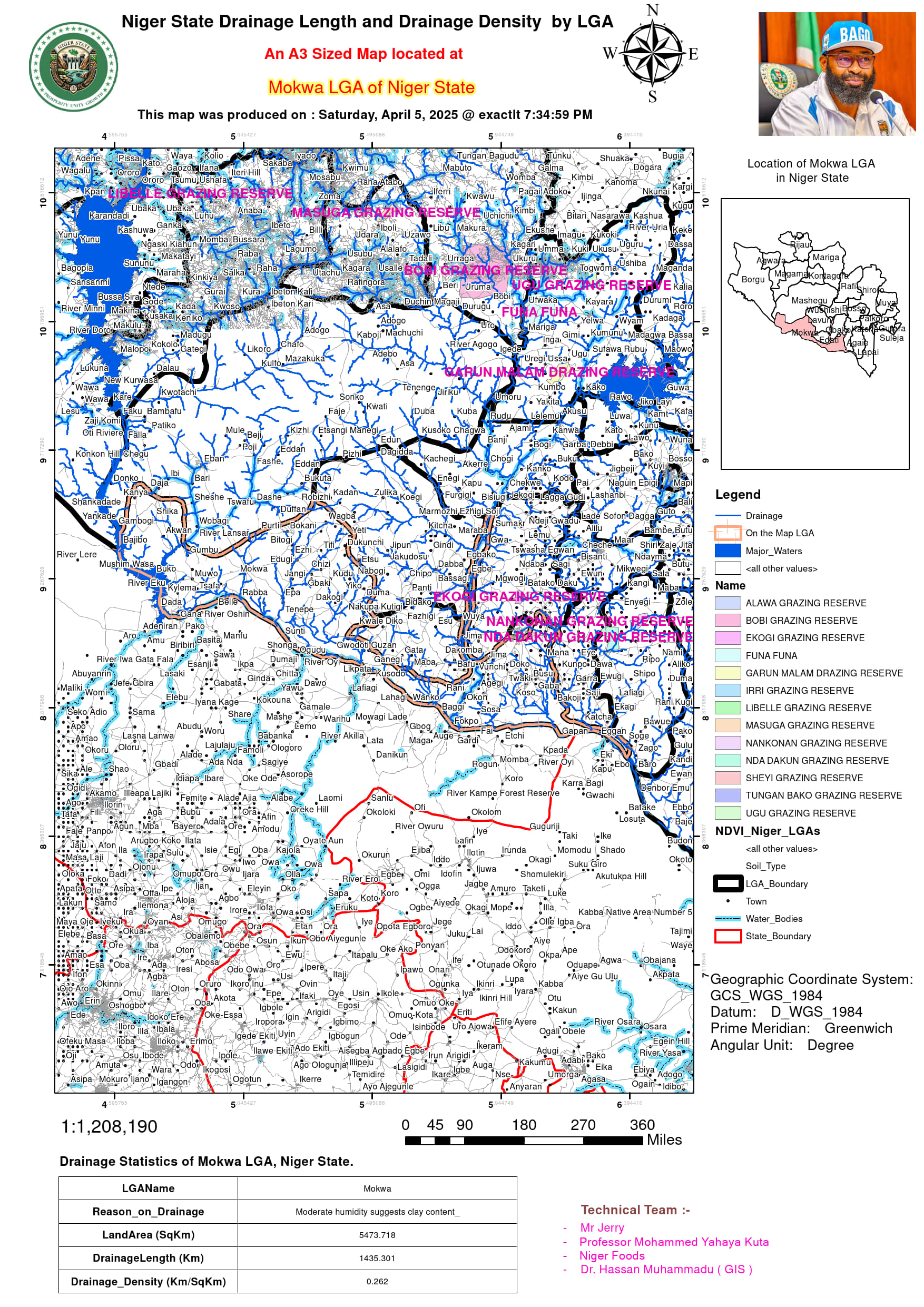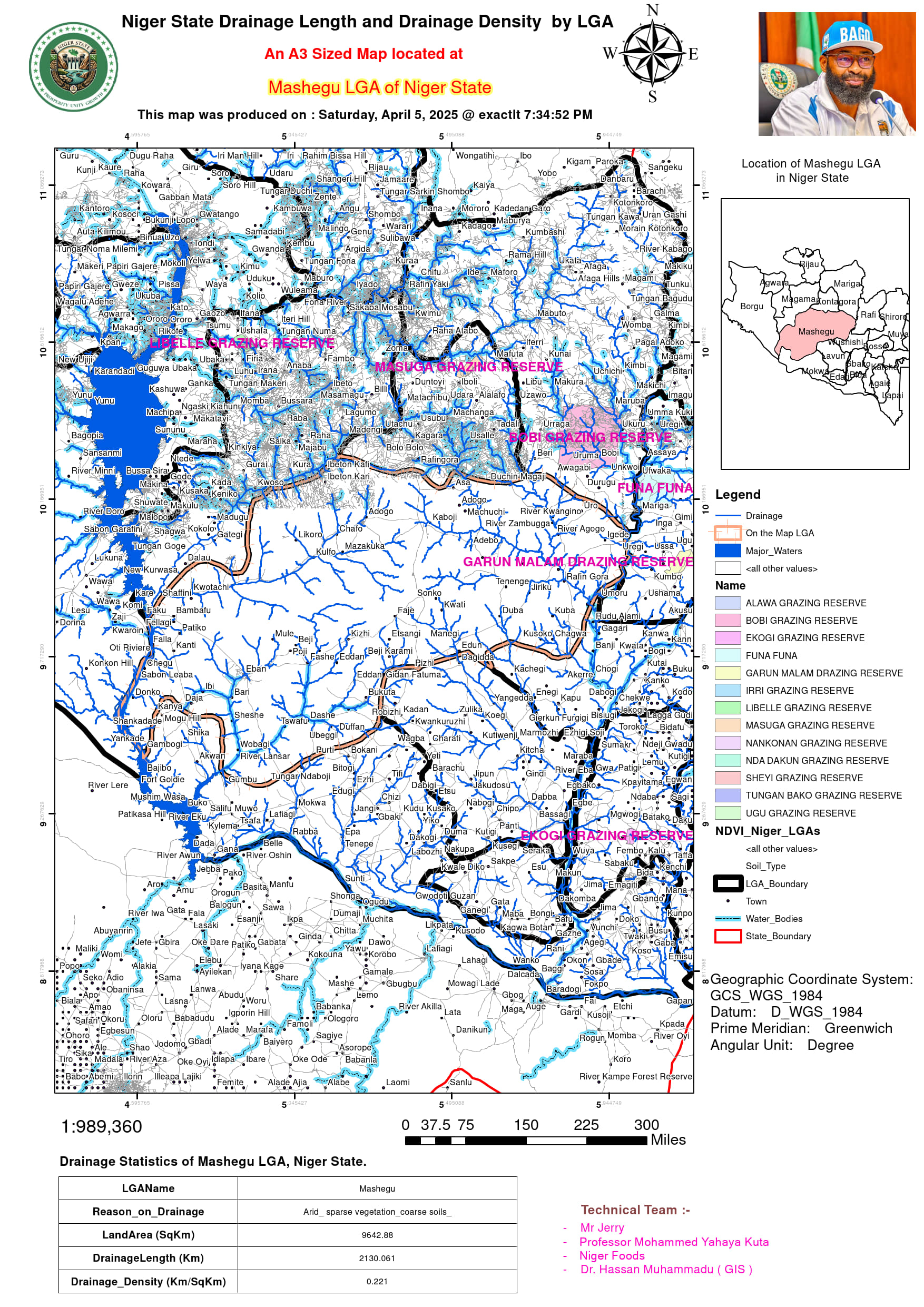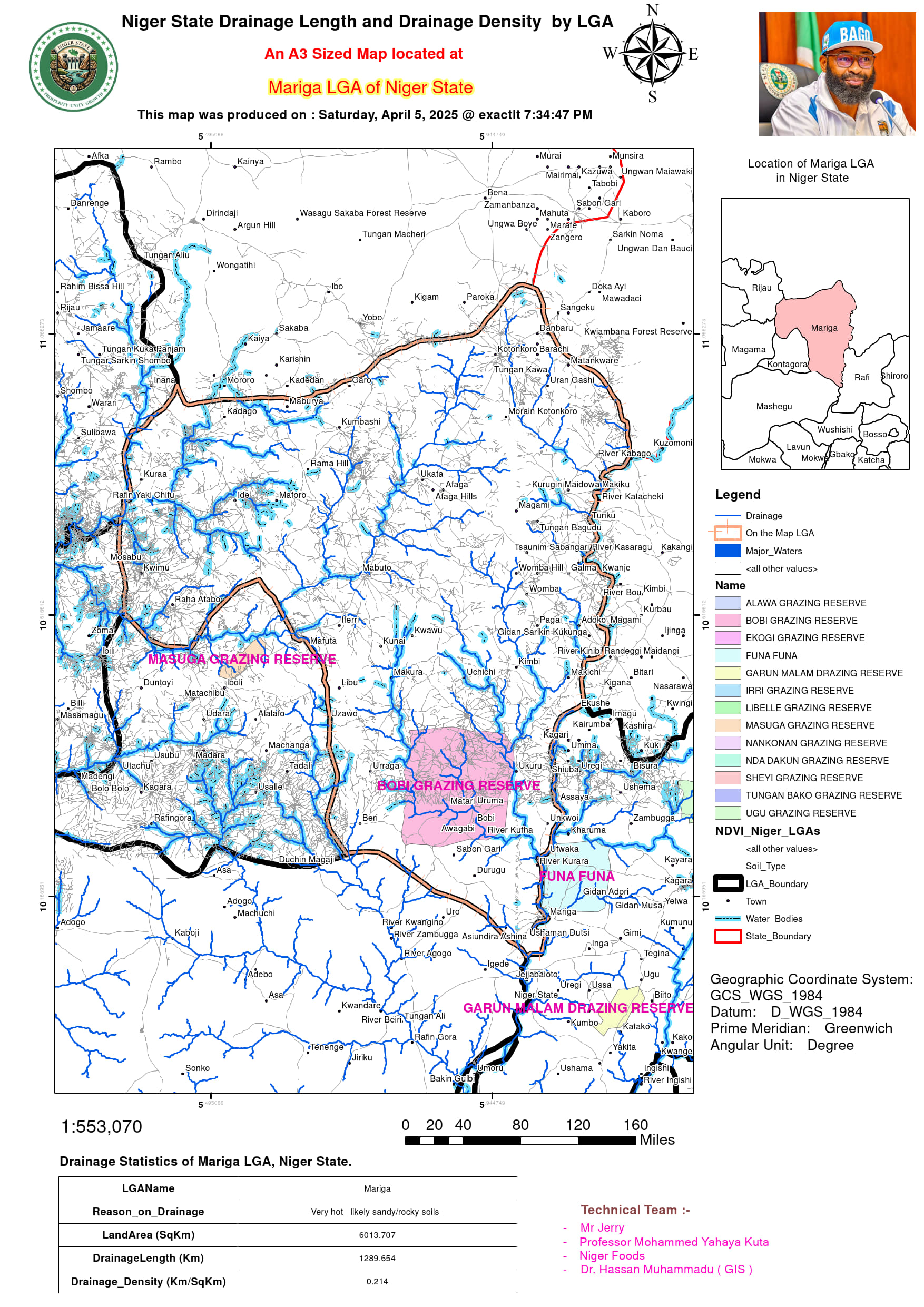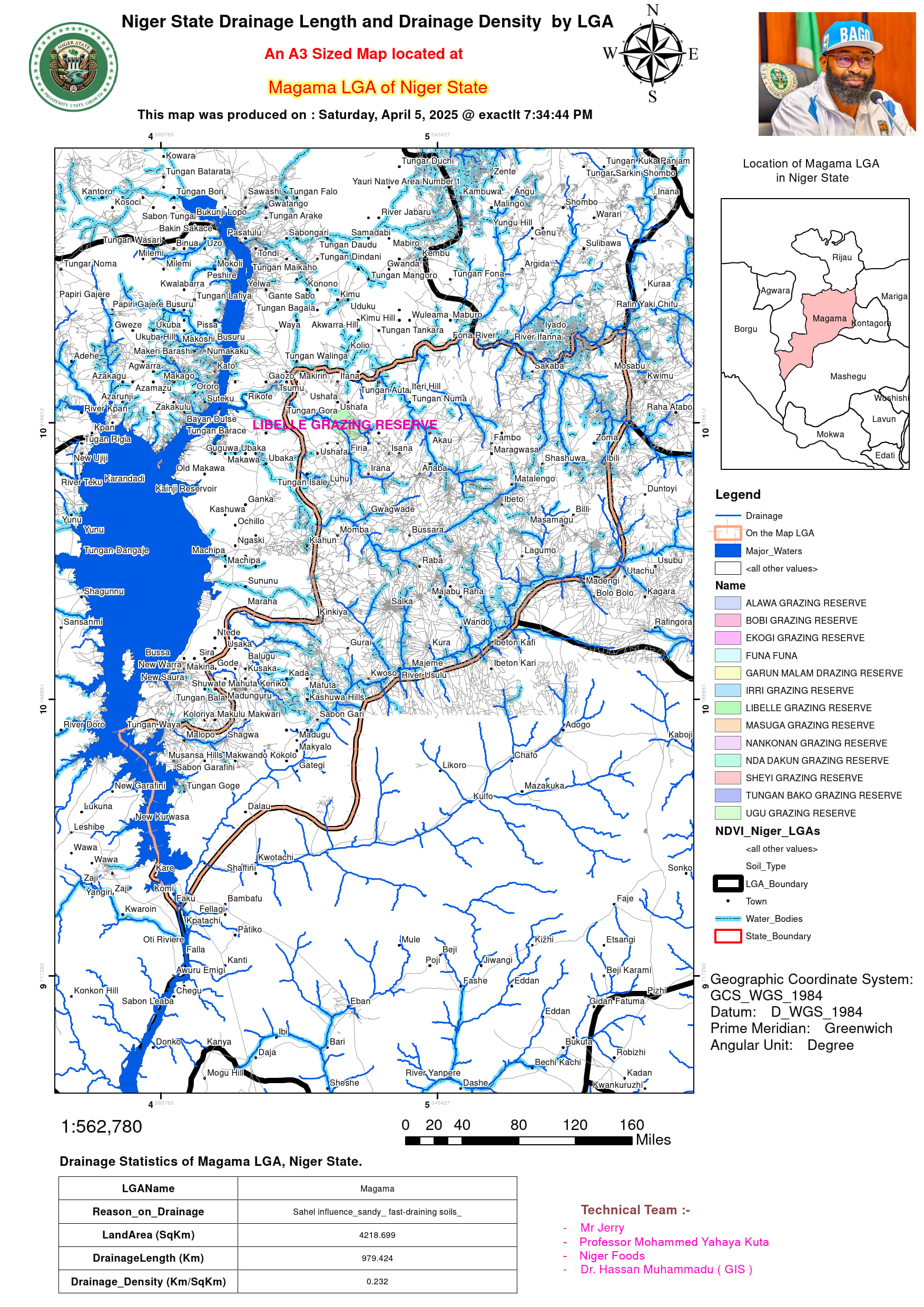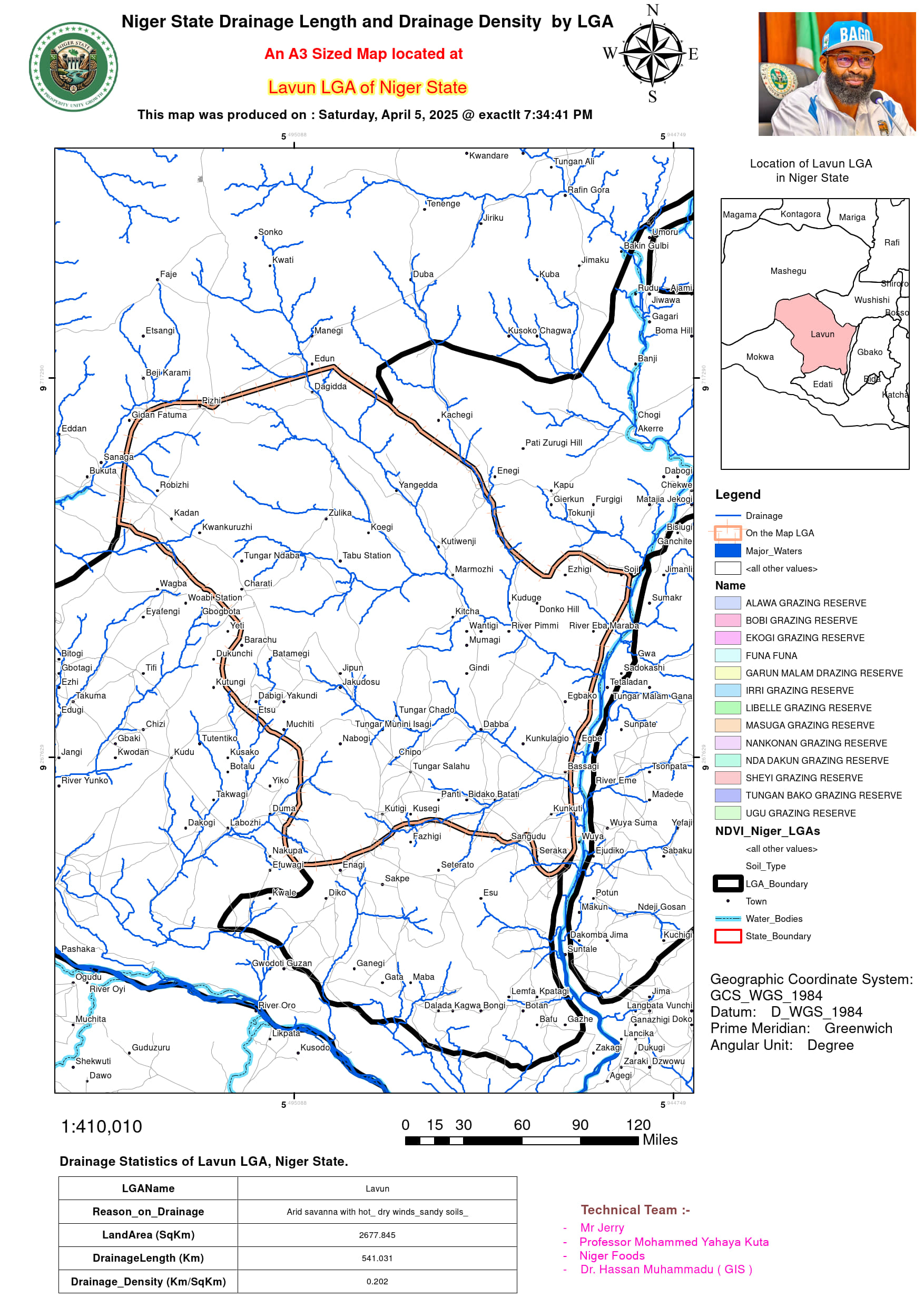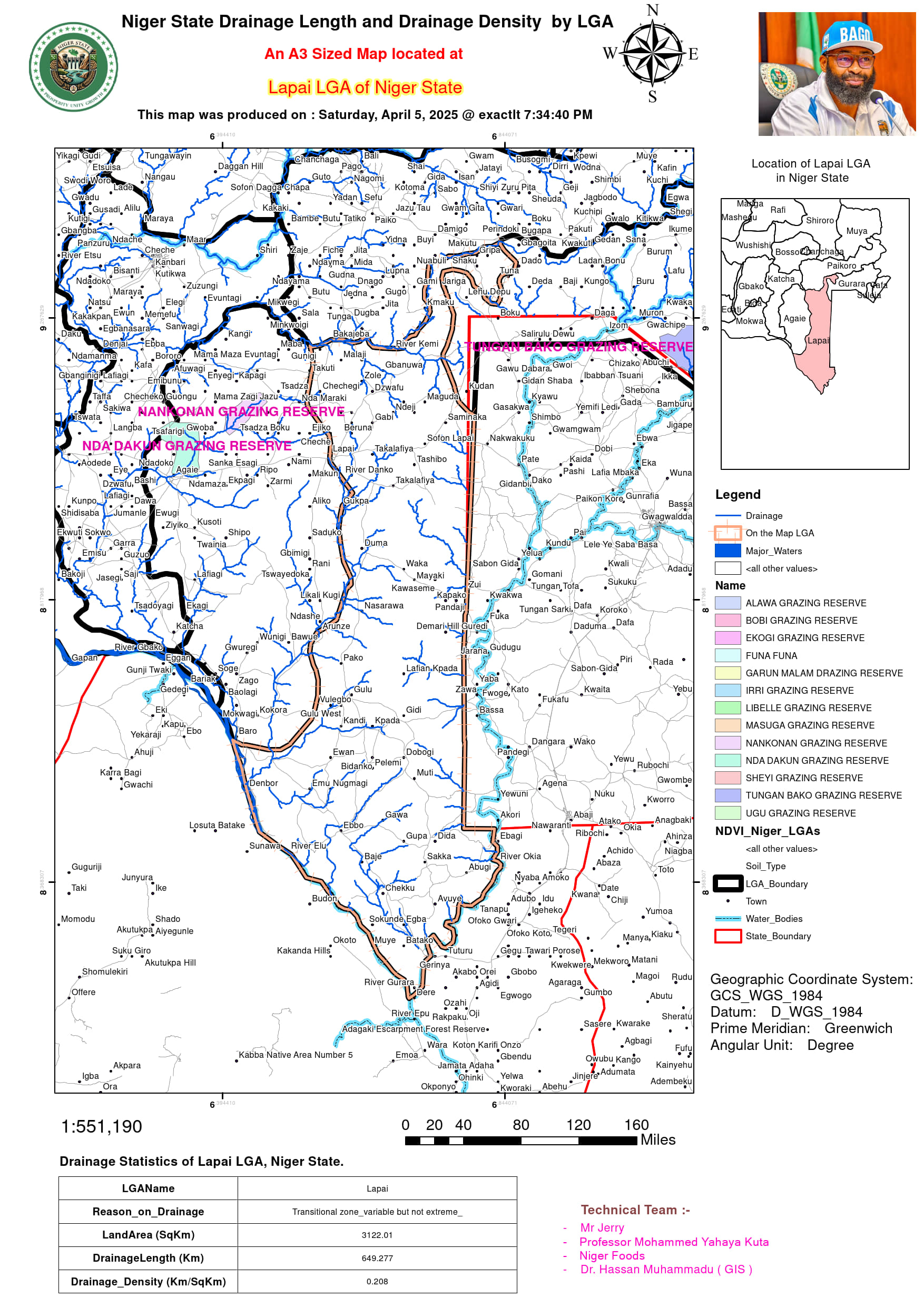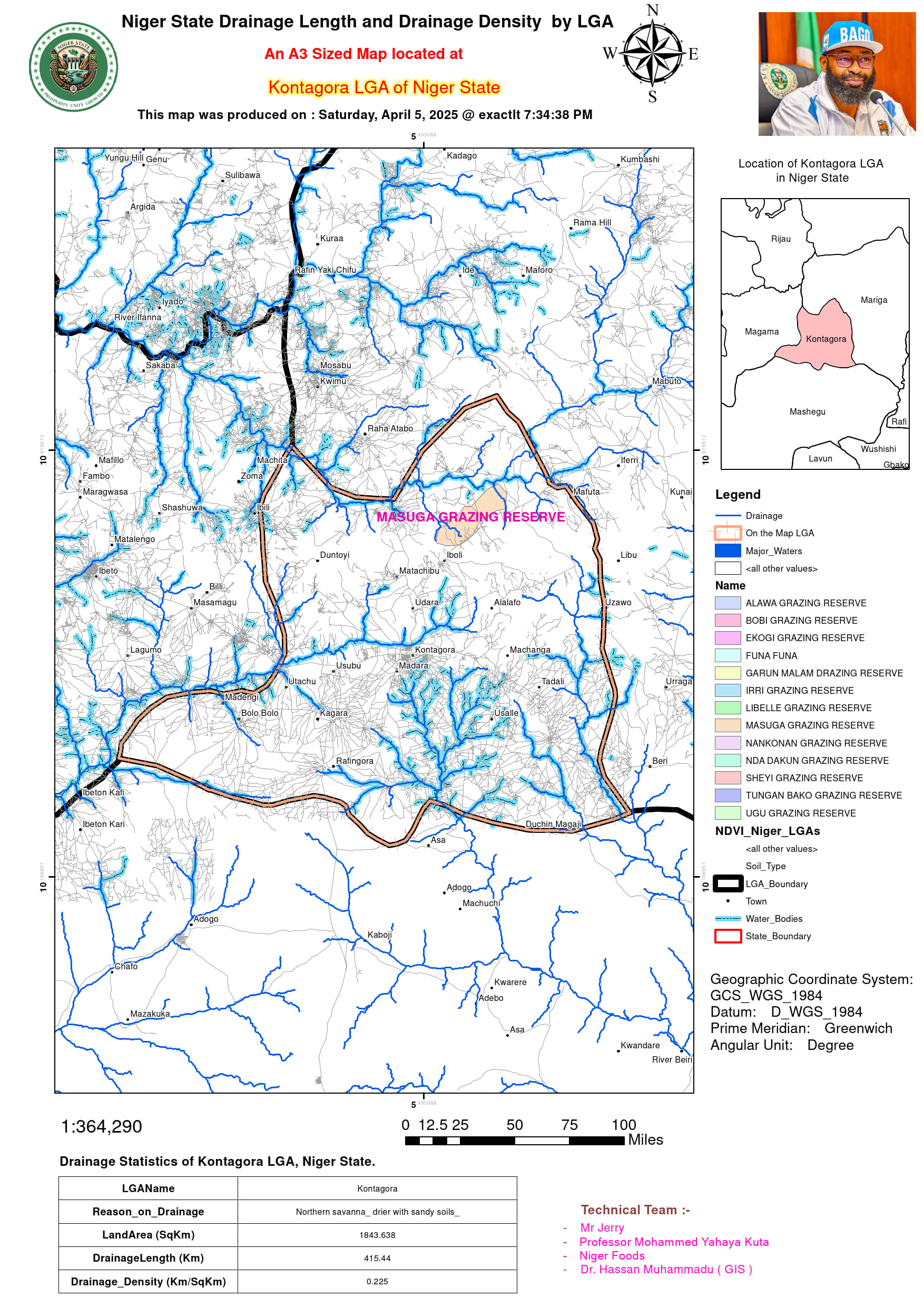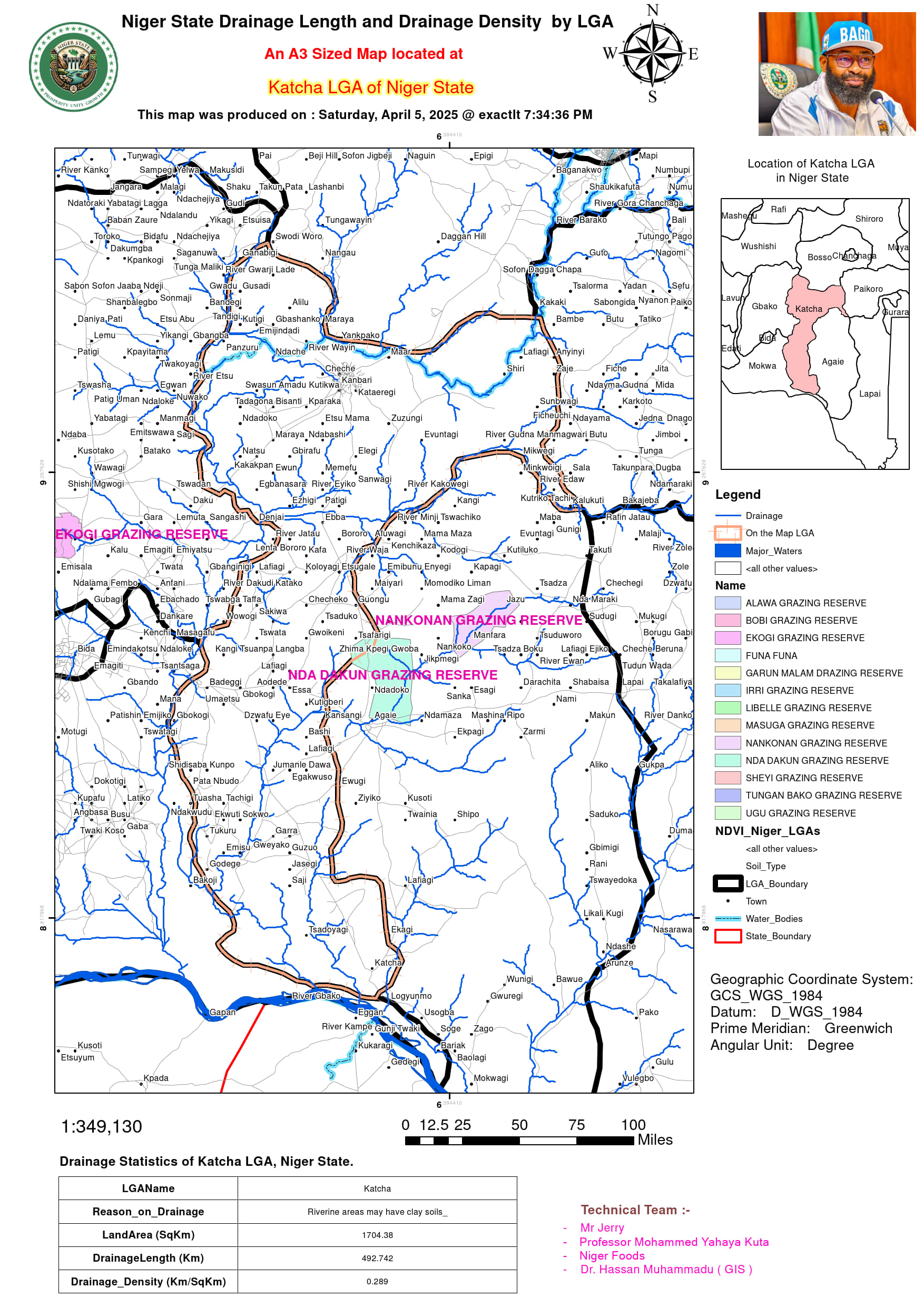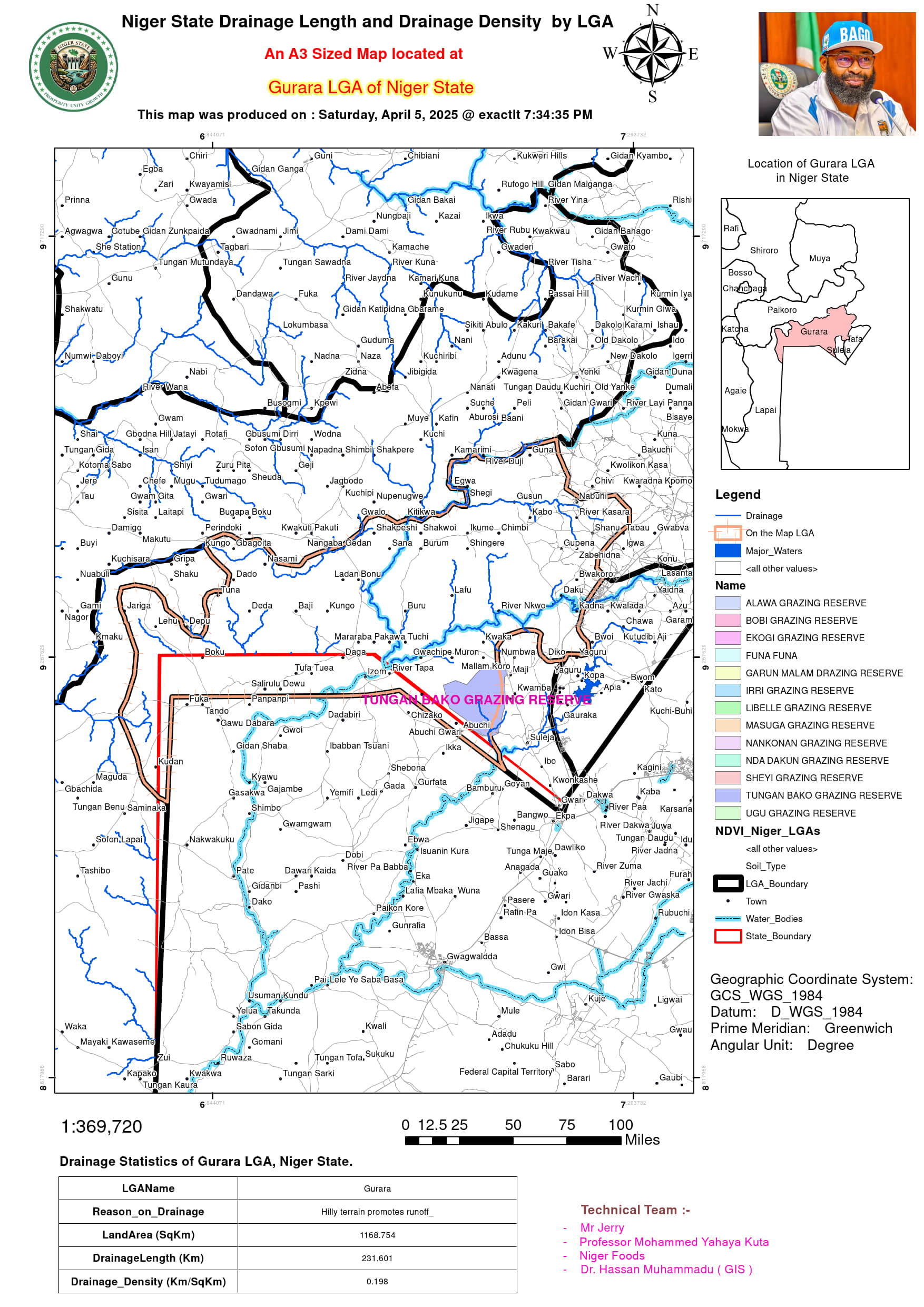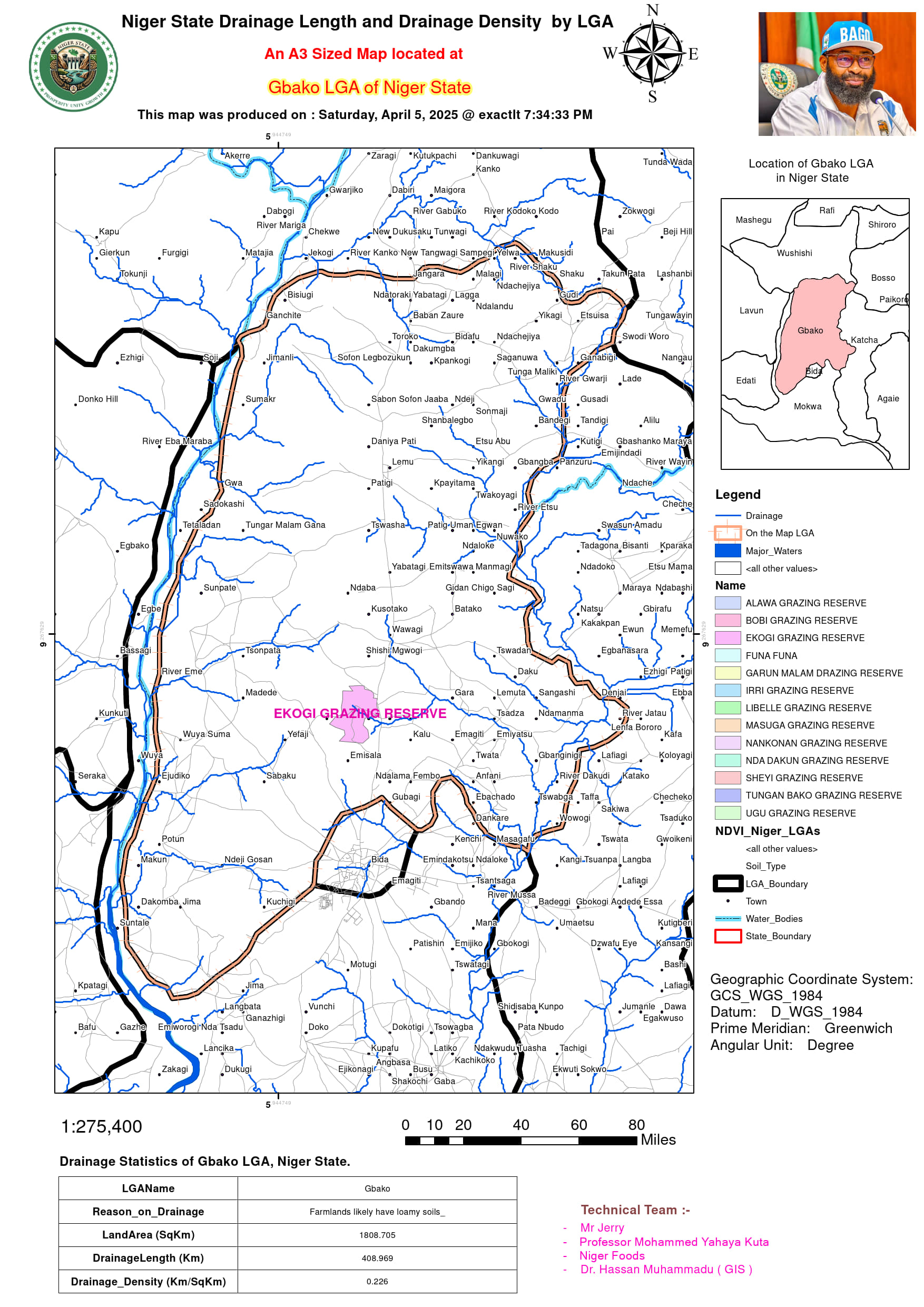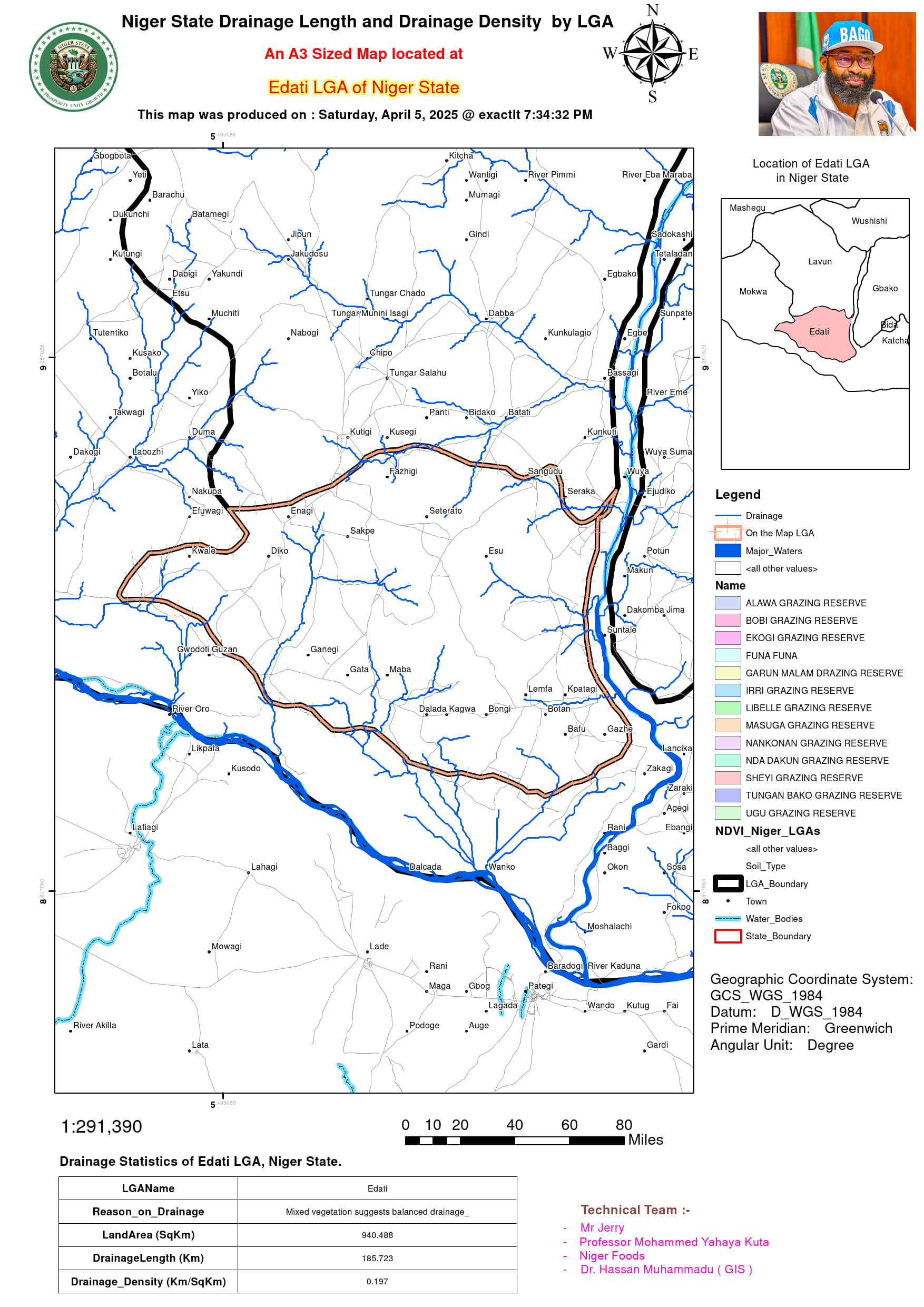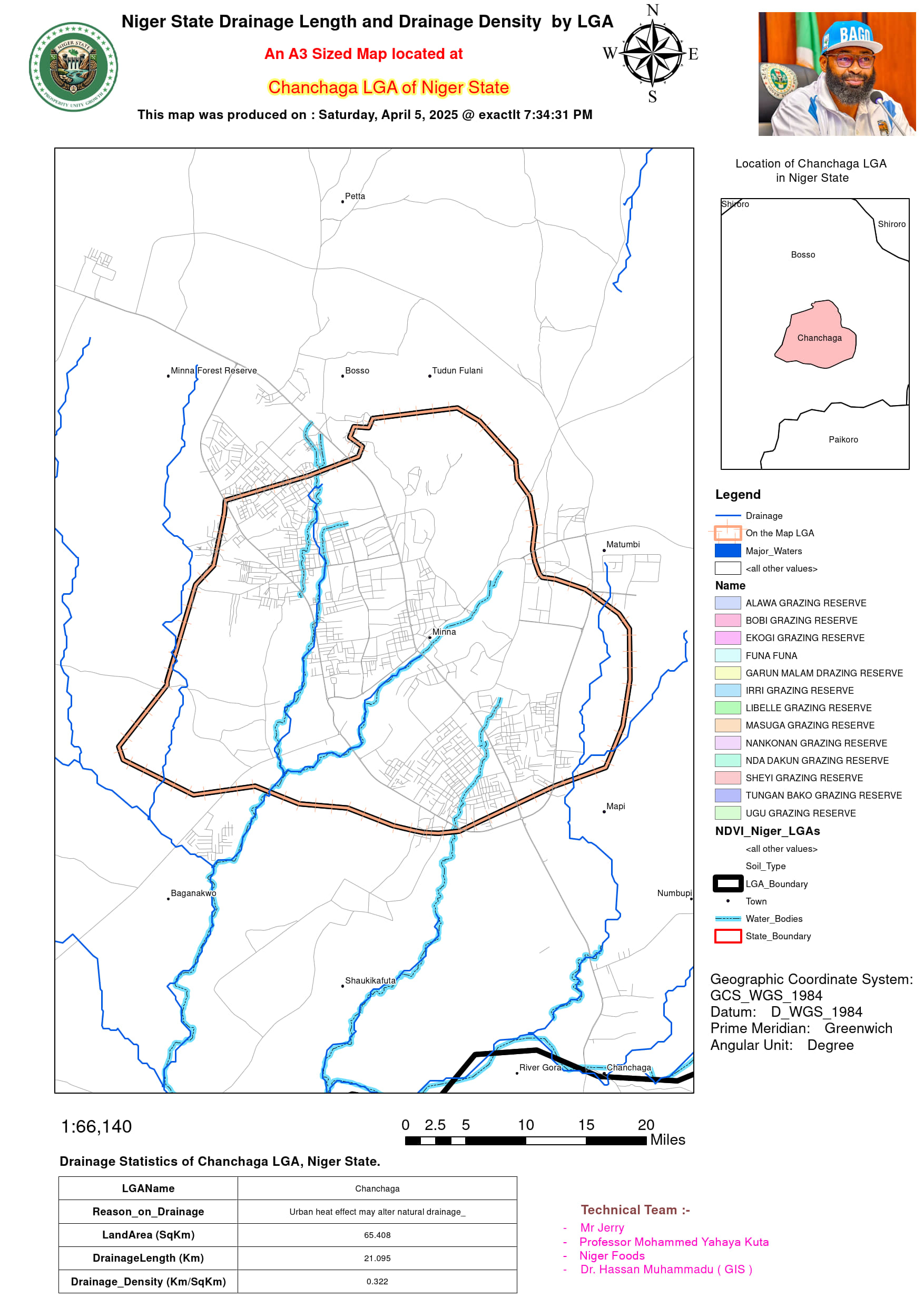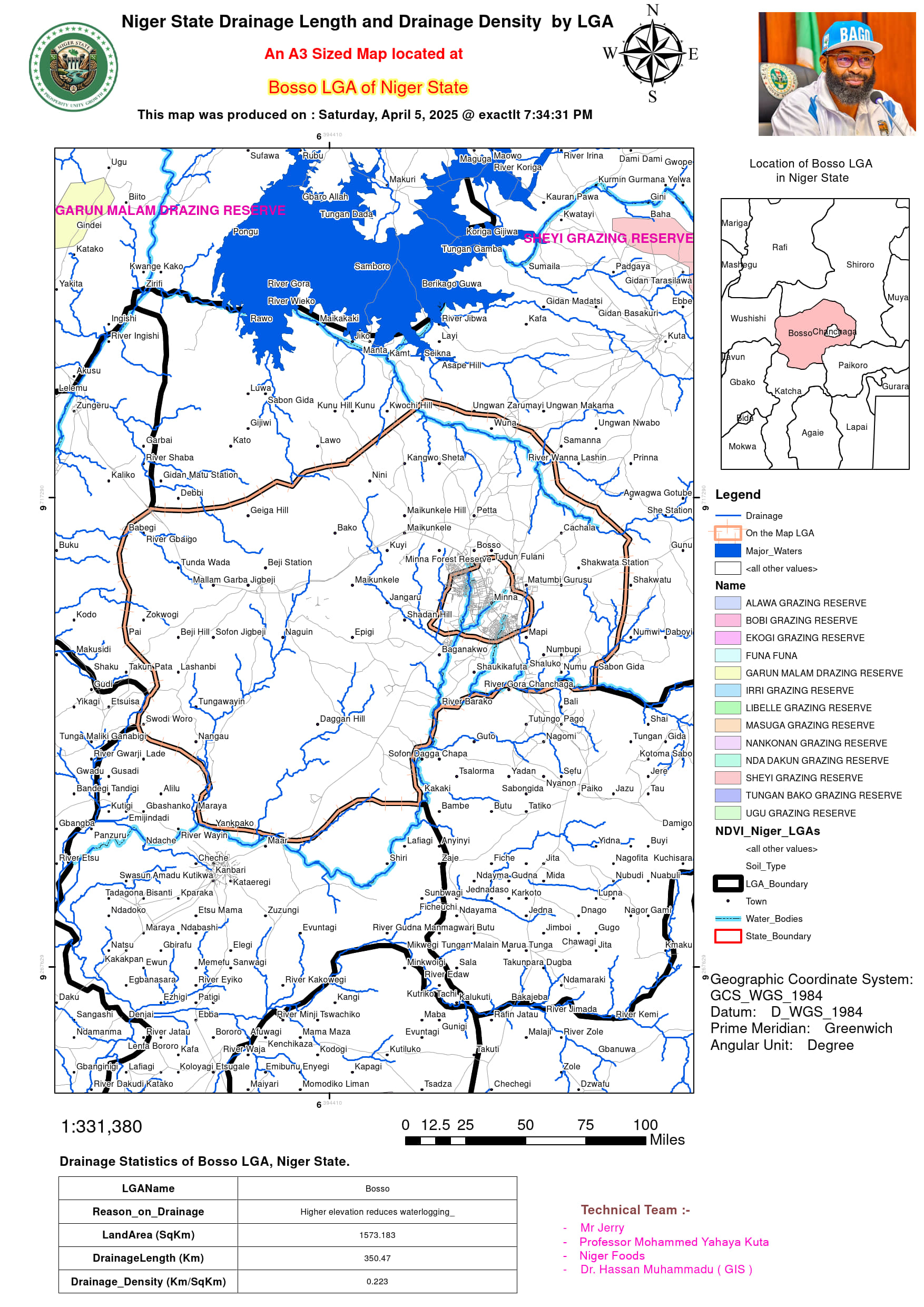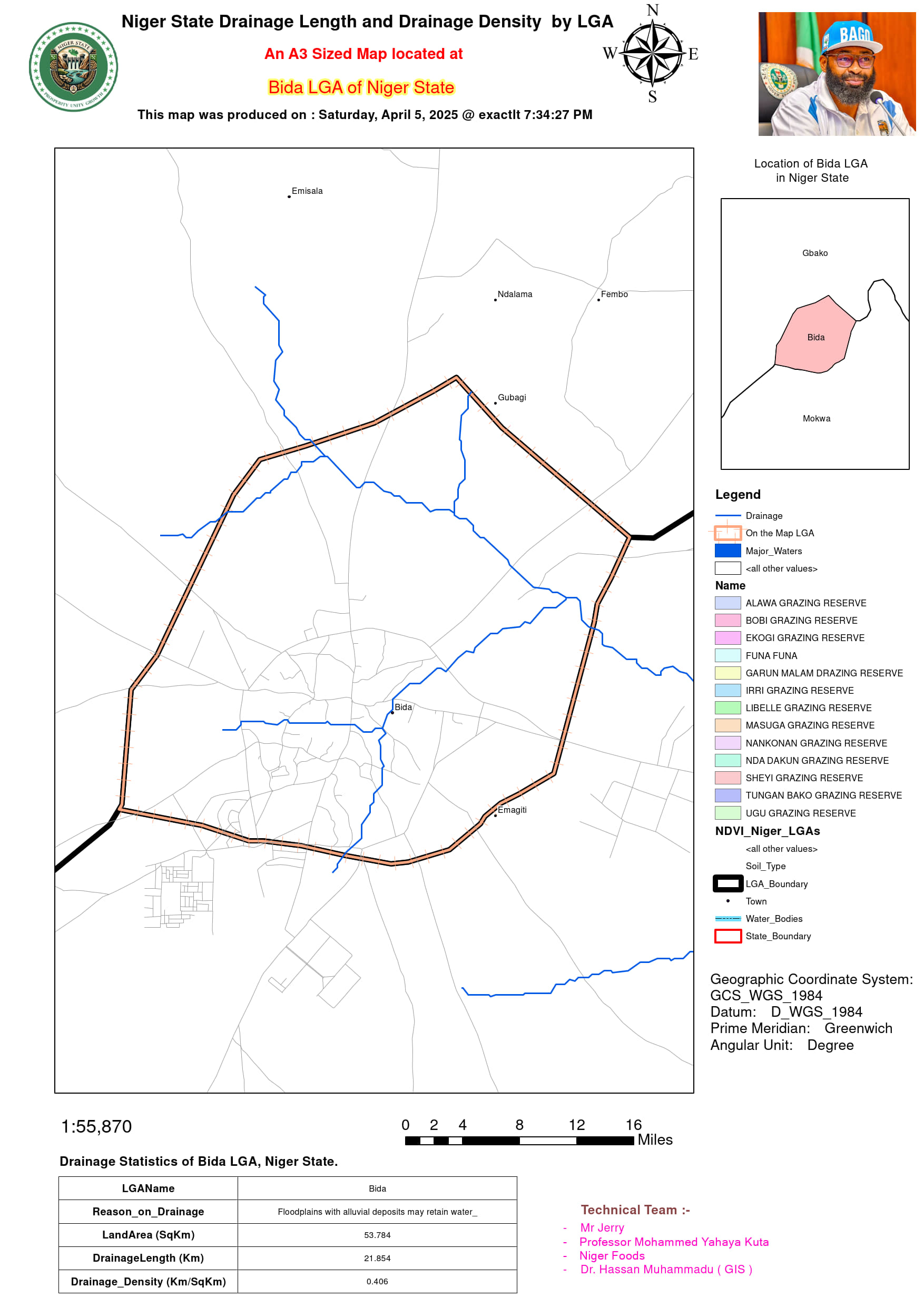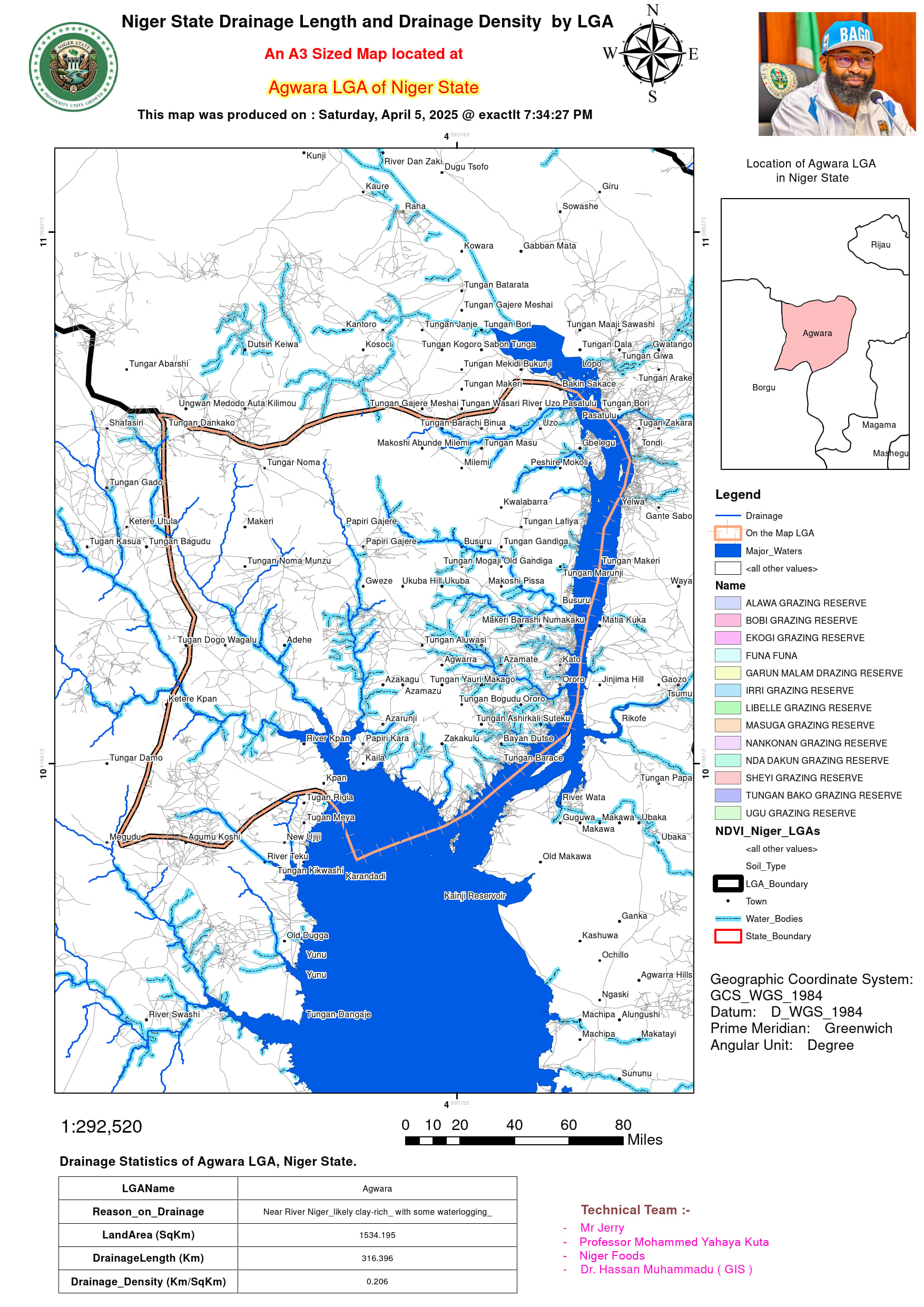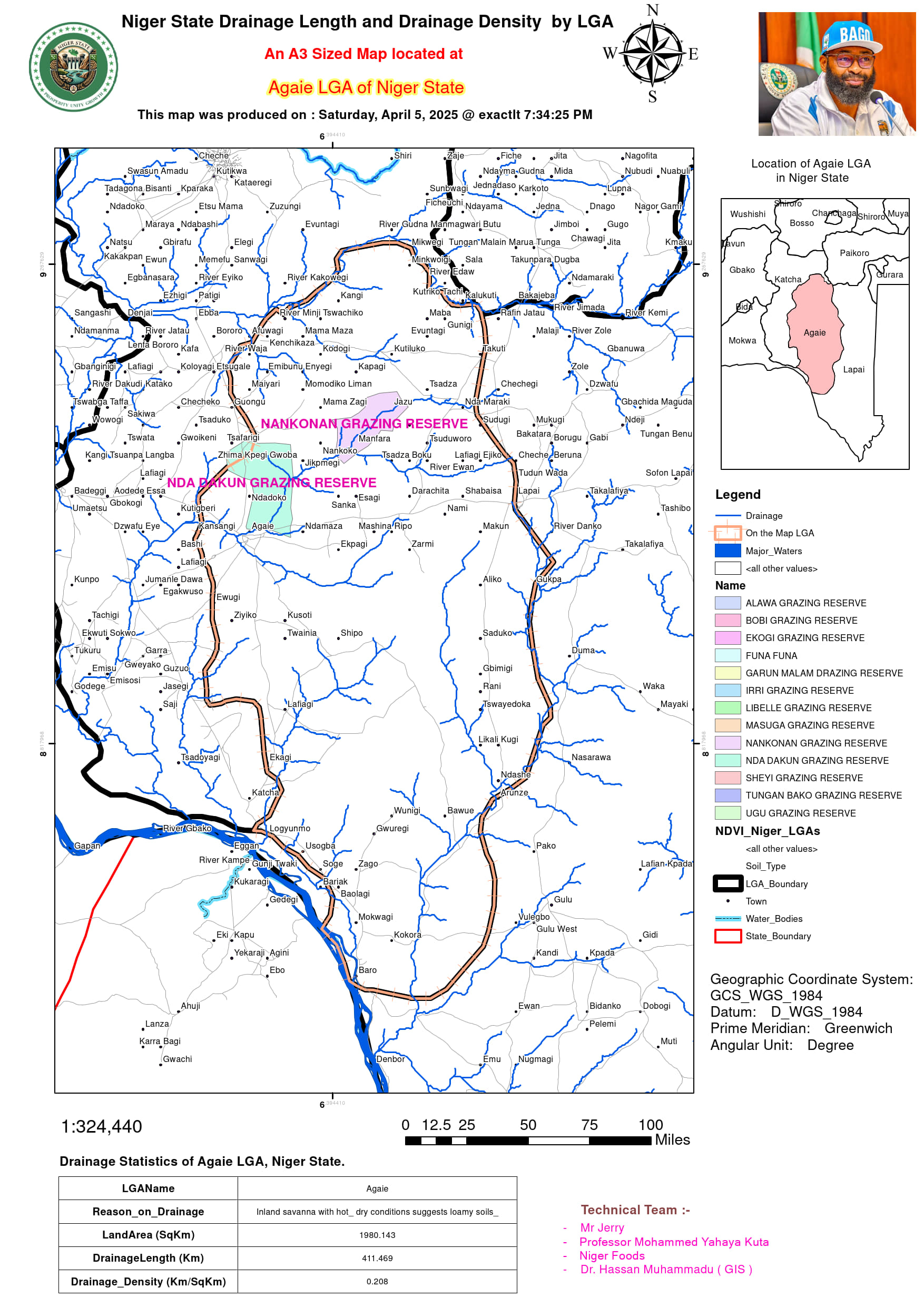GIS Map of Niger State Soil Properties
Soil Type:
Niger State’s diverse soil composition is closely tied to its varied topography and climatic conditions, with distinct soil types dominating different Local Government Areas (LGAs). Ferric Lixisols, characterized by their reddish-brown color and moderate fertility, are widespread across the state, particularly in higher elevation areas like Bosso (226.654 sq km) and Gurara (775.932 sq km) where hilly terrain and cooler microclimates prevail, as well as in northern savanna regions such as Kontagora (1097.974 sq km), Magama (2103.394 sq km), and Mariga (4707.311 sq km), where arid to semi-arid conditions with sparse vegetation dominate. These soils also extend into transitional zones like Lapai (75.148 sq km) and mixed land-use areas such as Paikoro (1395.424 sq km), though their productivity is often limited by low organic matter. In contrast, Nitisols, which are deeper, more weathered, and fertile, are found in Agwara (73.649 sq km) near the River Niger, where slightly humid conditions support agriculture, as well as in Borgu (604.289 sq km) along the Benin border, where arid influences prevail, and in agriculturally vital areas like Gbako (1414.070 sq km) and Lavun (2516.166 sq km), where warmer daytime temperatures and farmlands dominate. Fluvisols, young, nutrient-rich soils deposited by rivers, are prominent in floodplain regions such as Mokwa (1823.357 sq km) and Katcha (457.687 sq km), where moderate humidity and riverine dynamics create fertile but occasionally waterlogged conditions, while also appearing in smaller patches in Agaie (8.137 sq km) and Wushishi (208.188 sq km). Acrisols, acidic and less fertile, are scattered in areas like Chanchaga (65.408 sq km), where urban heat effects alter soil properties, and in riverine or hilly zones such as Katcha (201.500 sq km) and Gurara (212.196 sq km). The state also features Lithic Leptosols, shallow, rocky soils unsuitable for intensive agriculture, which dominate semi-arid, rocky terrains like Rijau (907.650 sq km) and northern arid zones such as Rafi (1517.339 sq km) and Mariga (1173.548 sq km), where extreme heat and sparse vegetation limit soil development. The interplay of these soil types—Ferric Lixisols in uplands and savannas, Nitisols in fertile agricultural belts, Fluvisols in riverine areas, Acrisols in acidic patches, and Leptosols in rocky, arid zones—reflects Niger State’s complex environmental gradients, from the humid riverbanks of Agwara to the Sahelian fringes of Magama, with significant implications for land use, crop suitability, and water management across its LGAs.
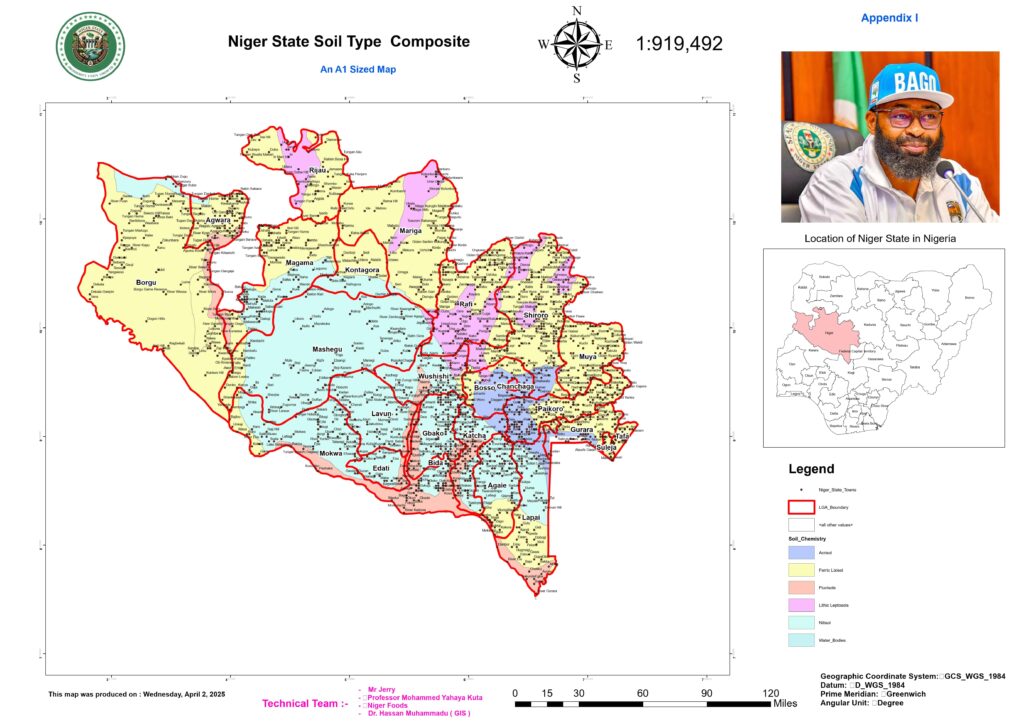
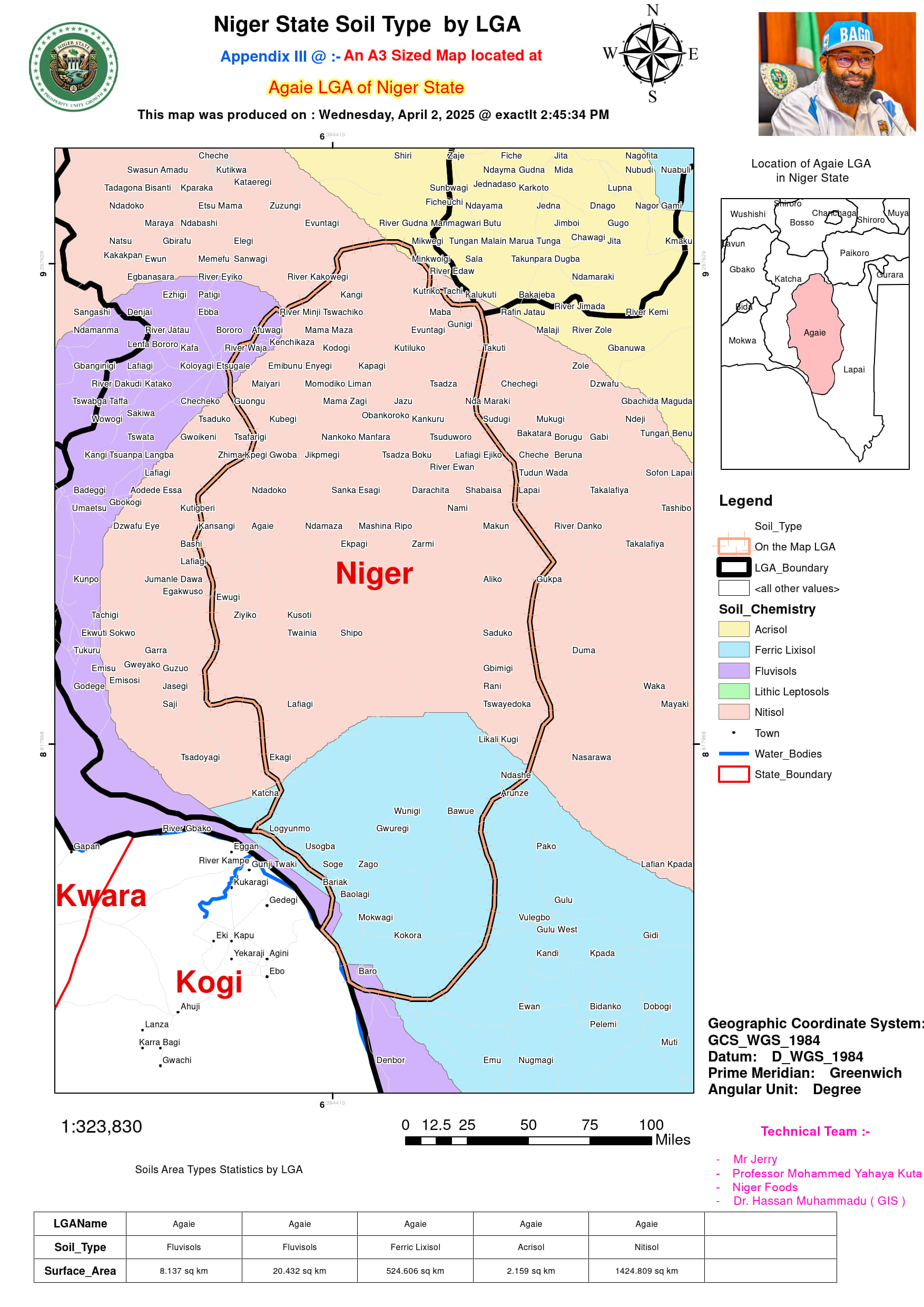
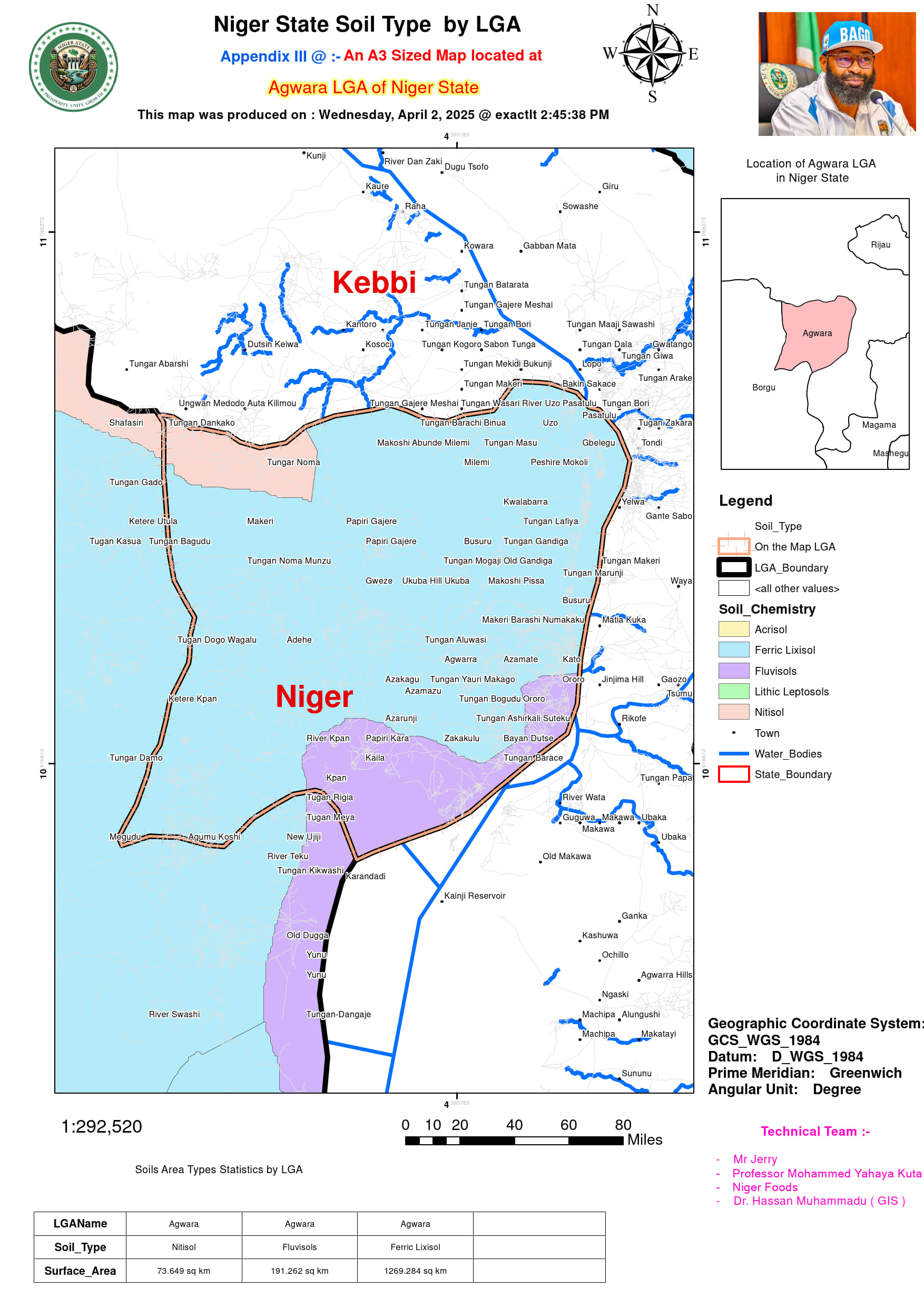
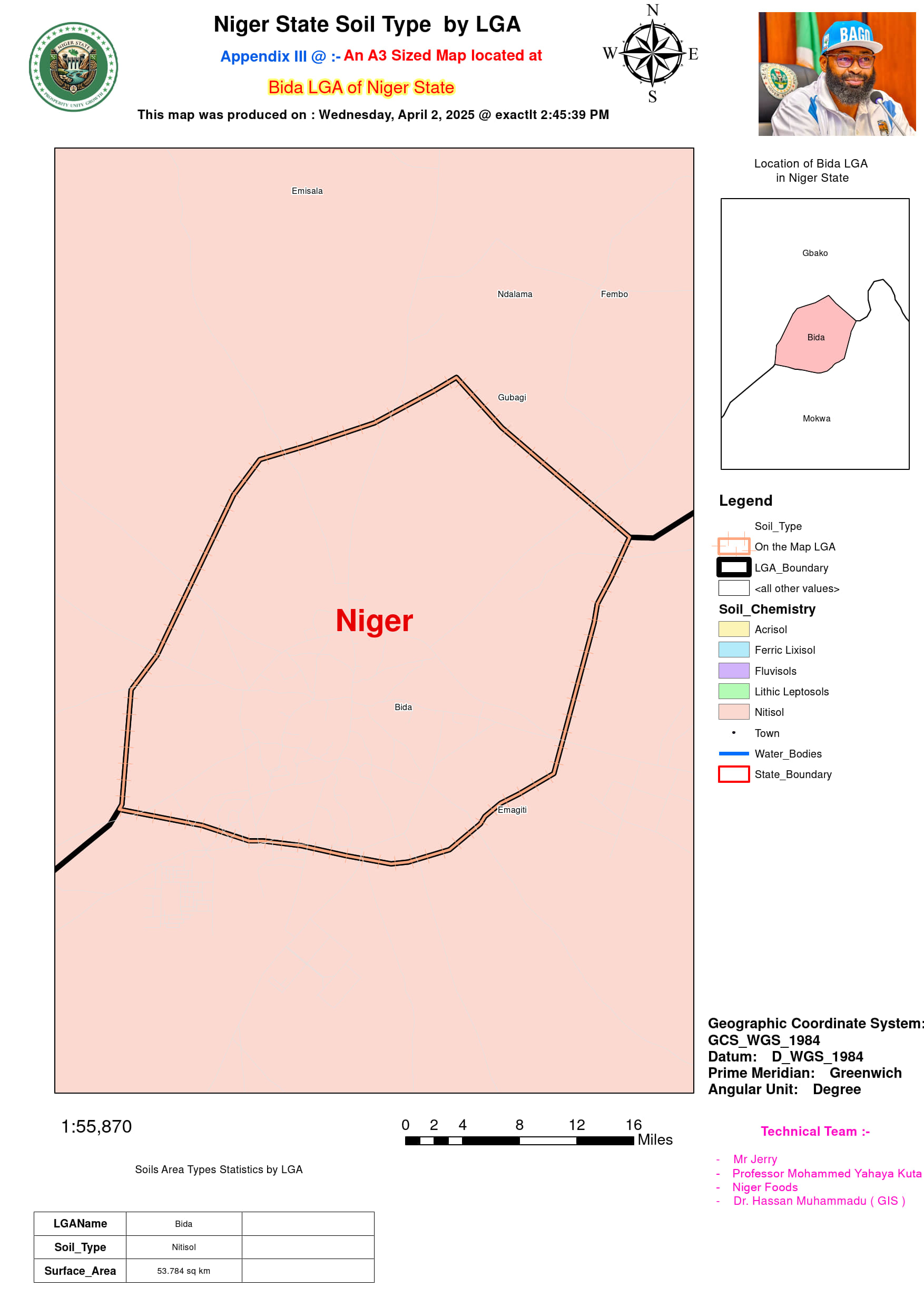
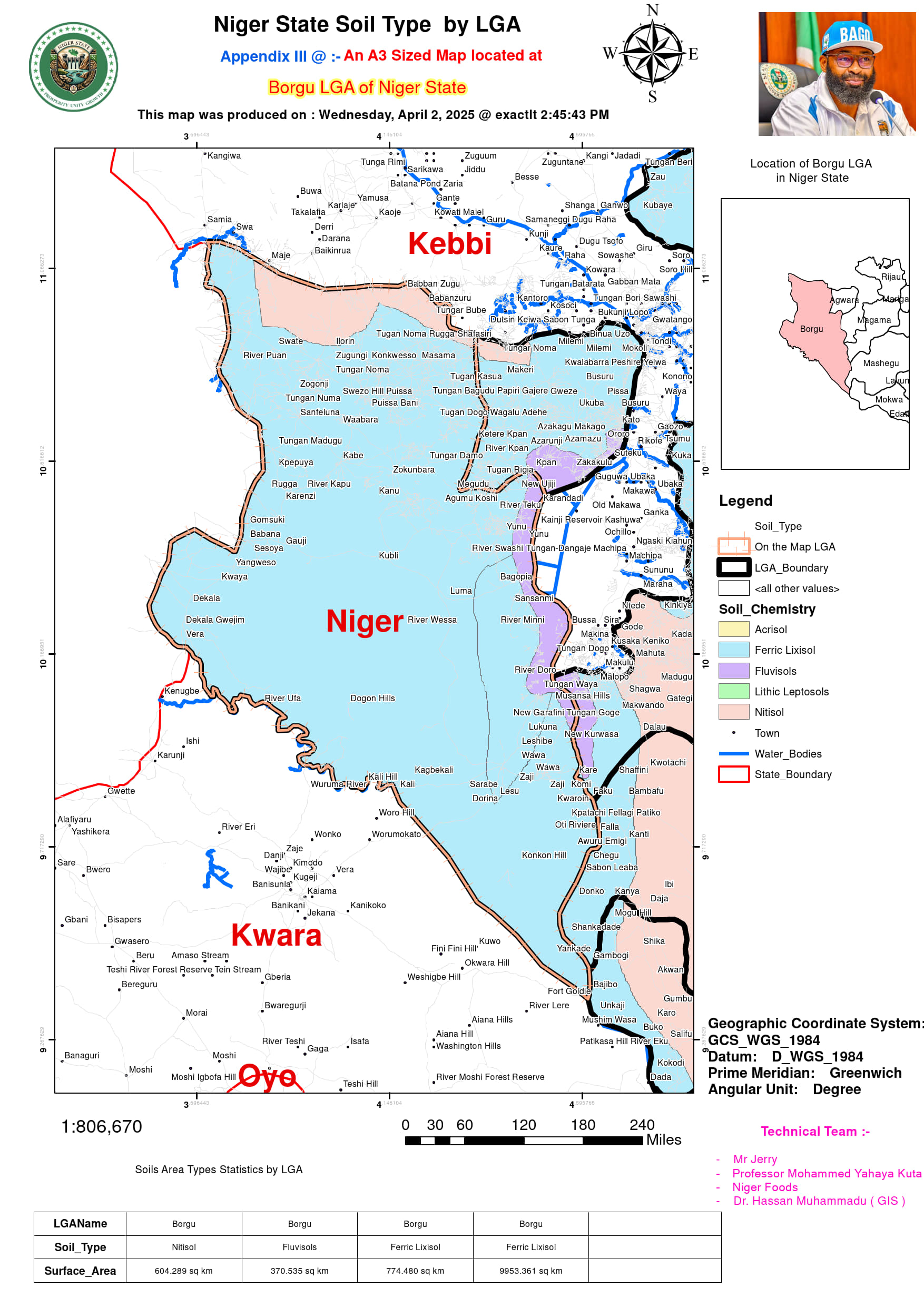
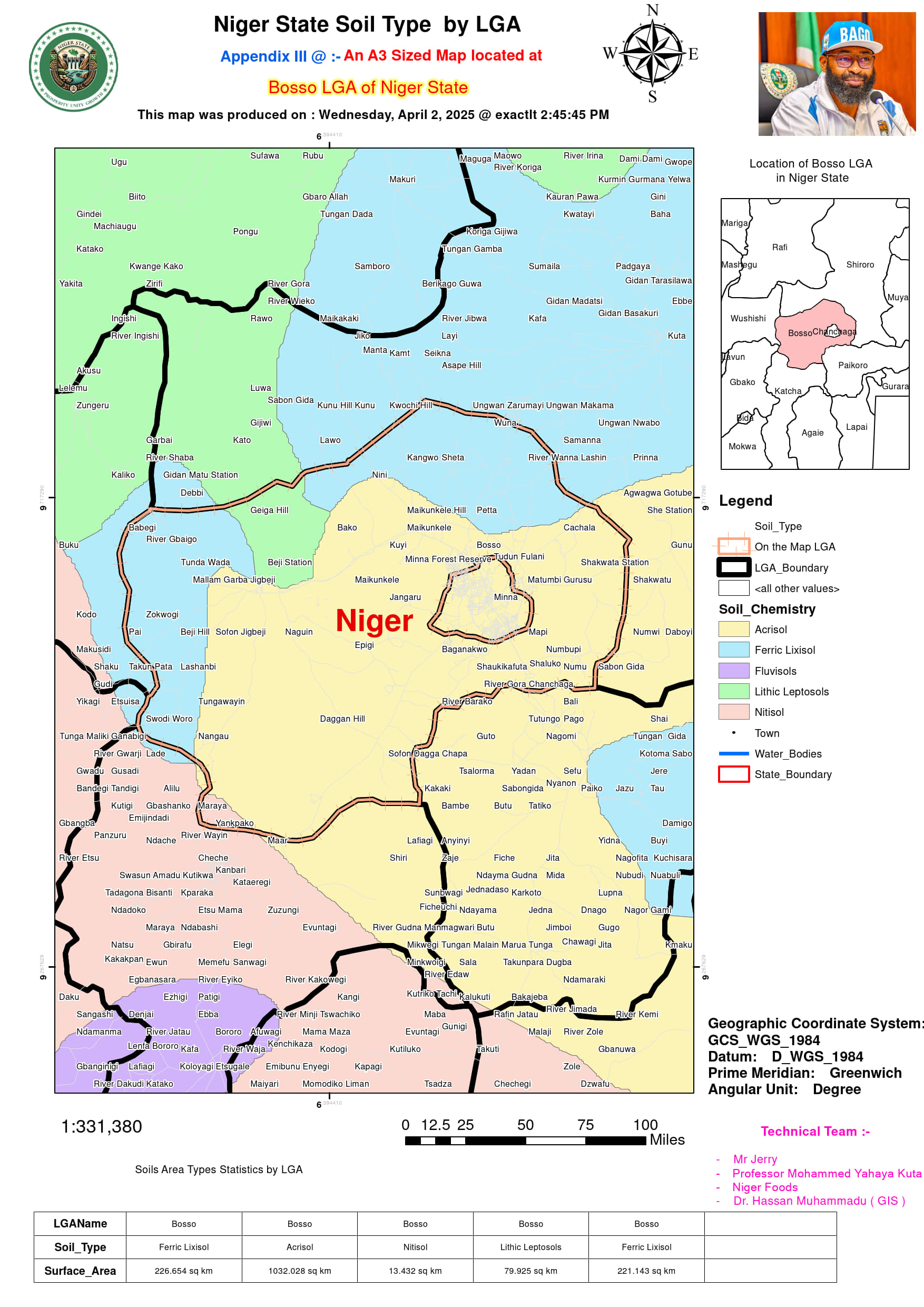

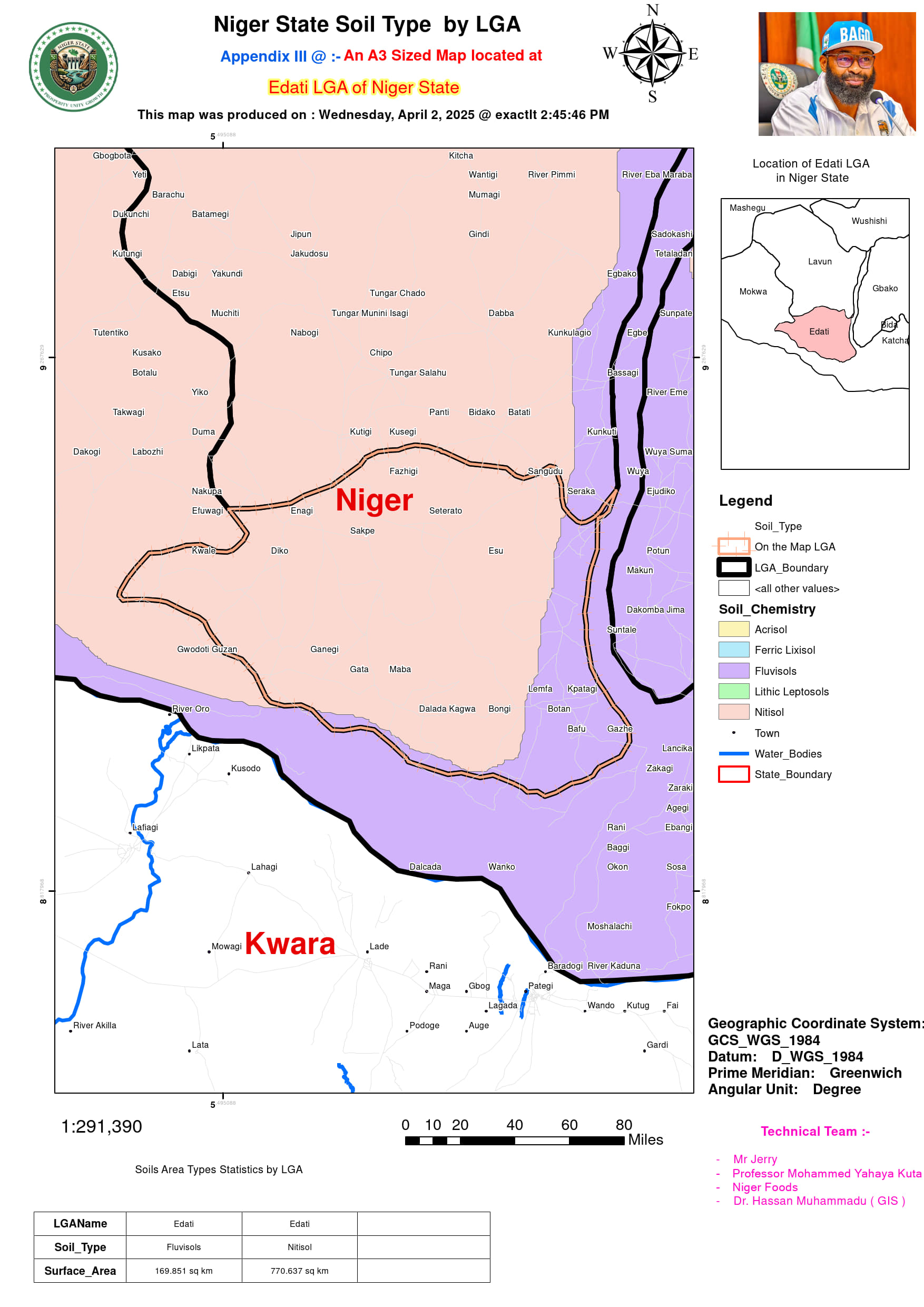
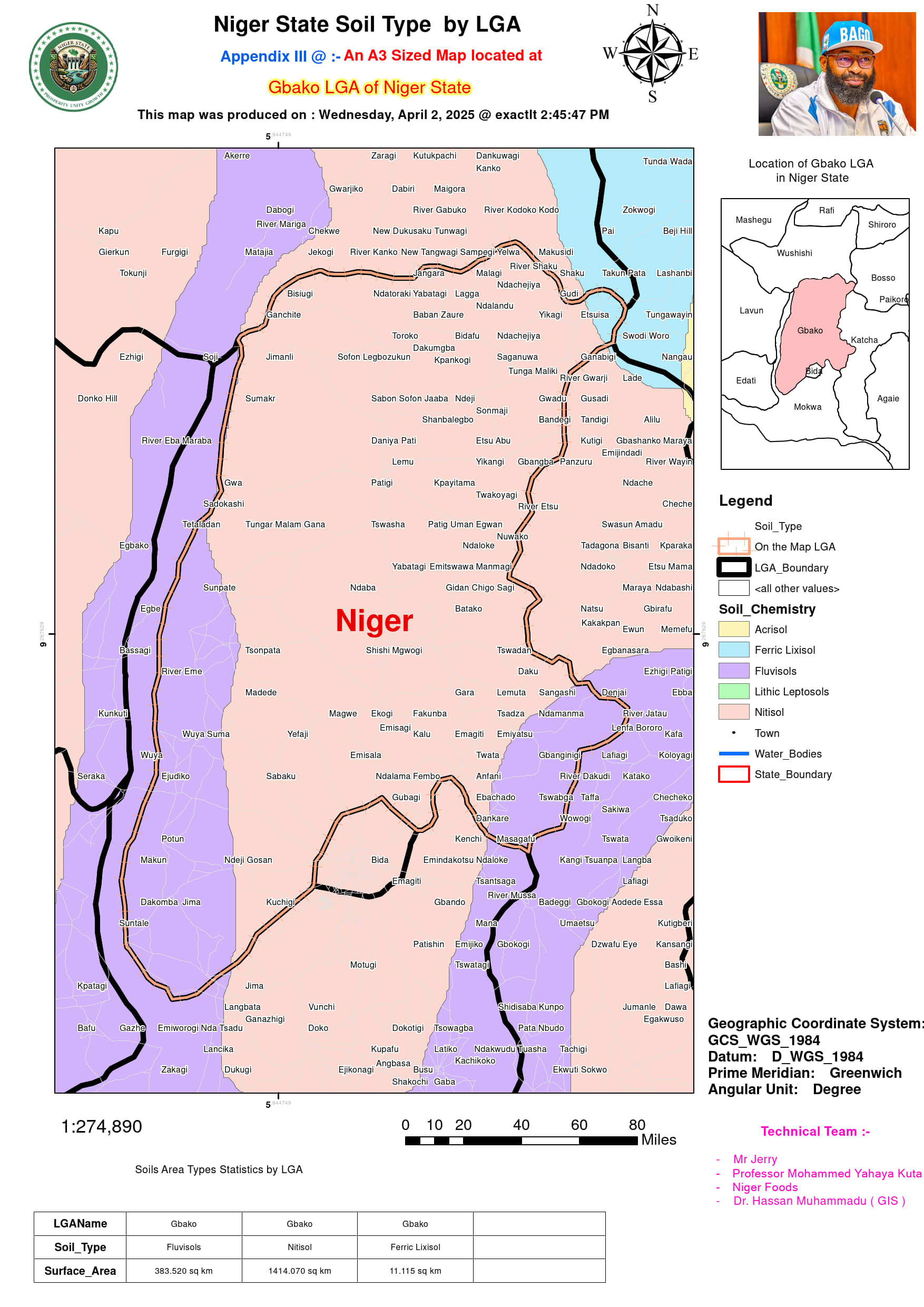
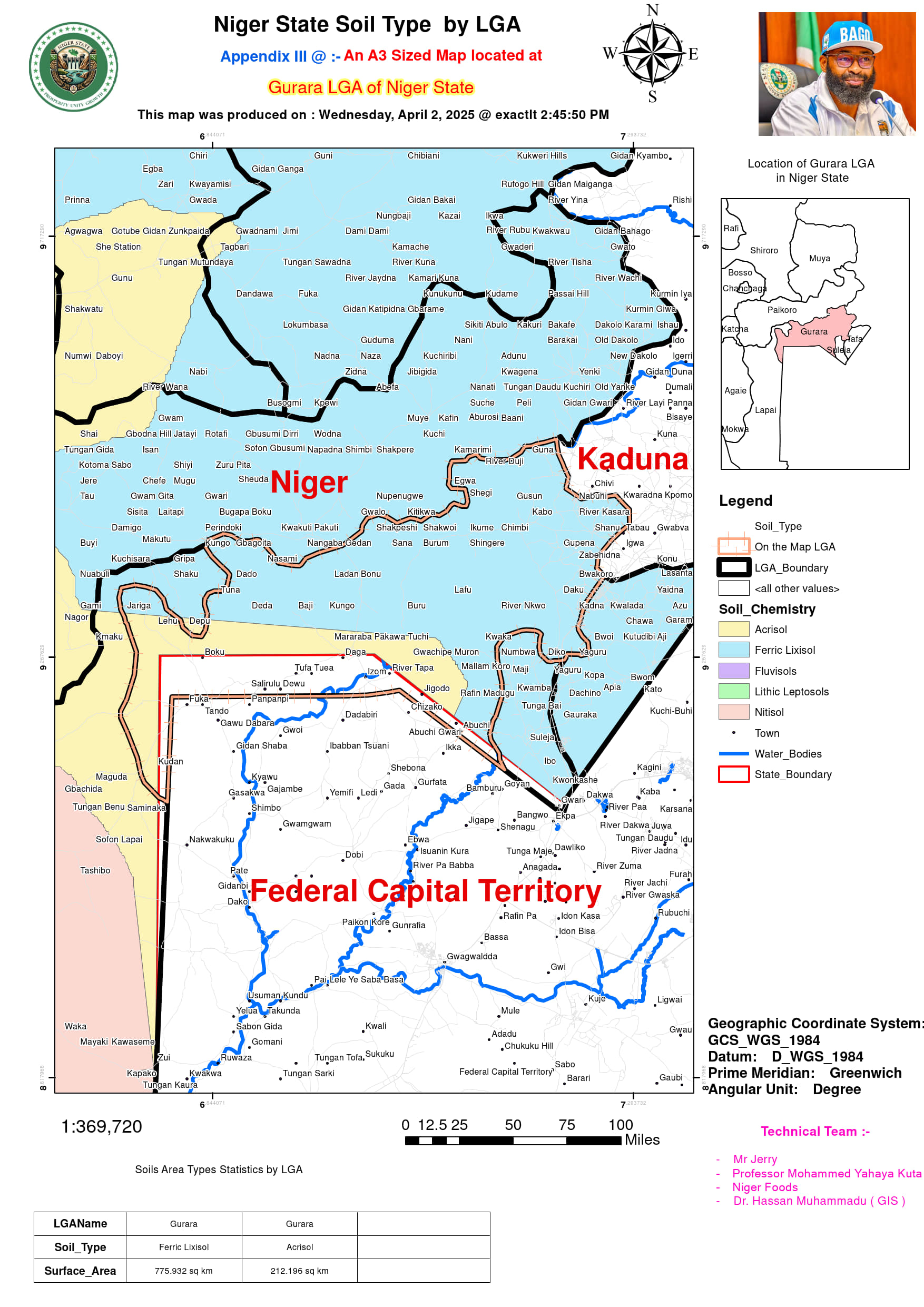
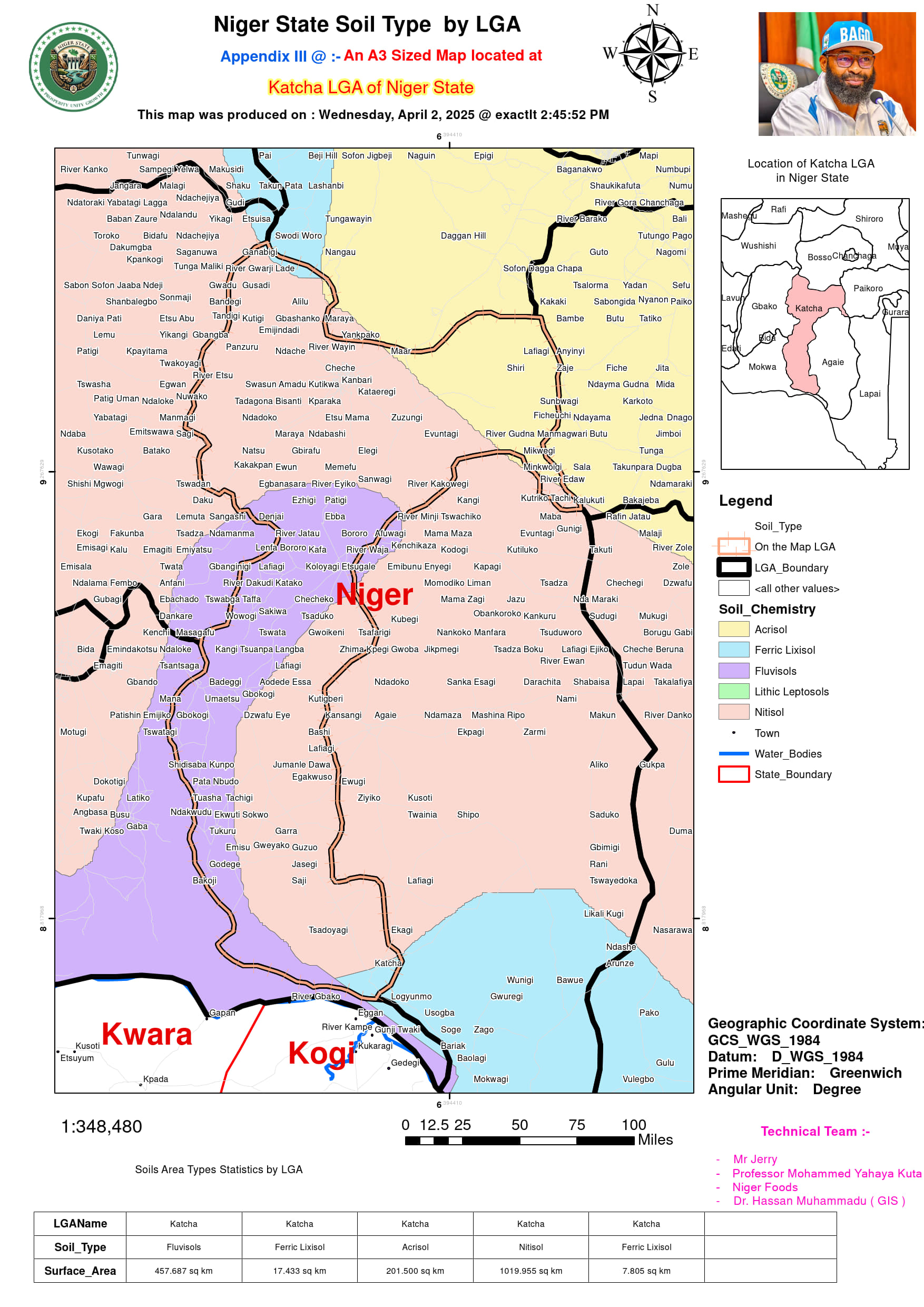
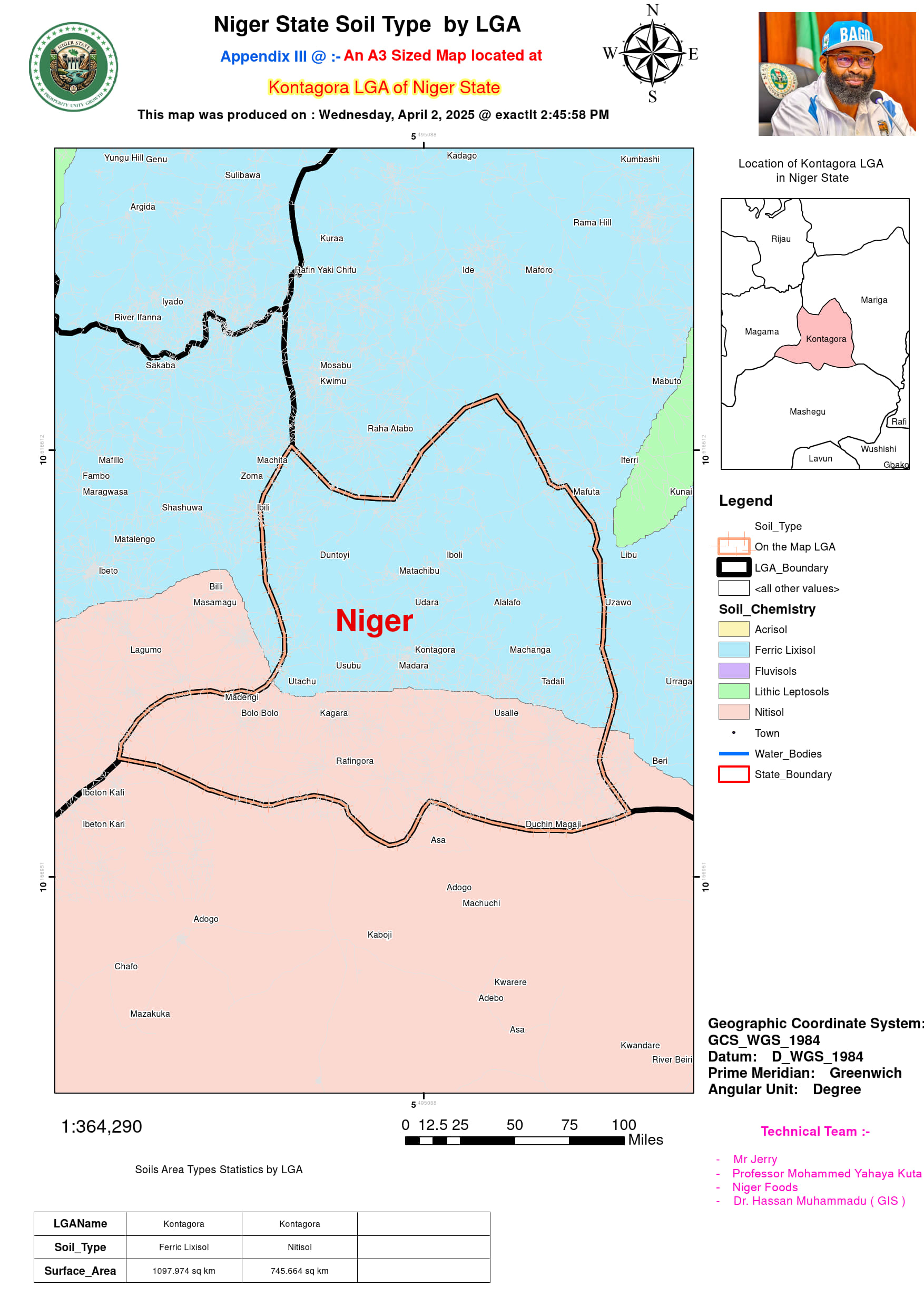
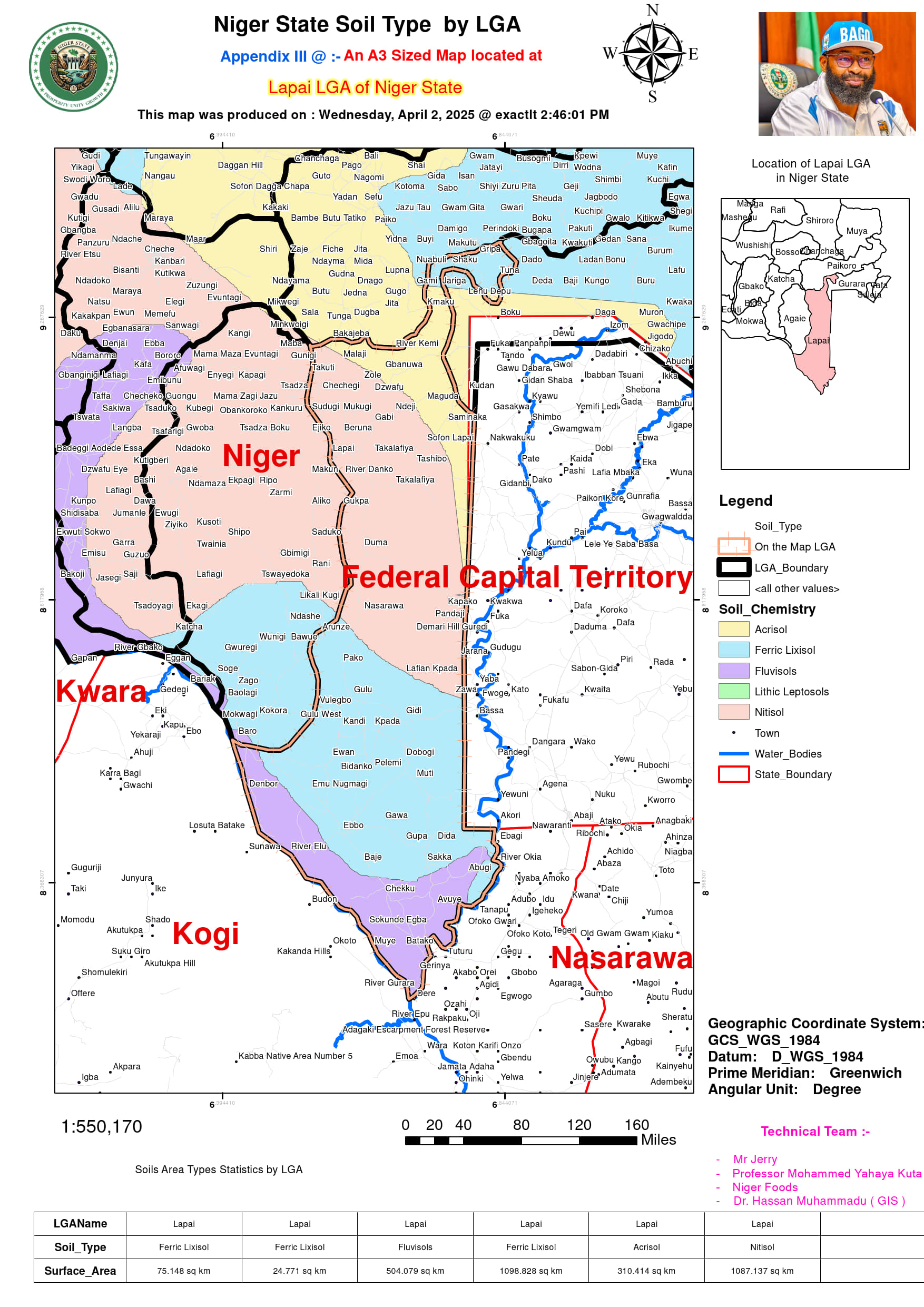
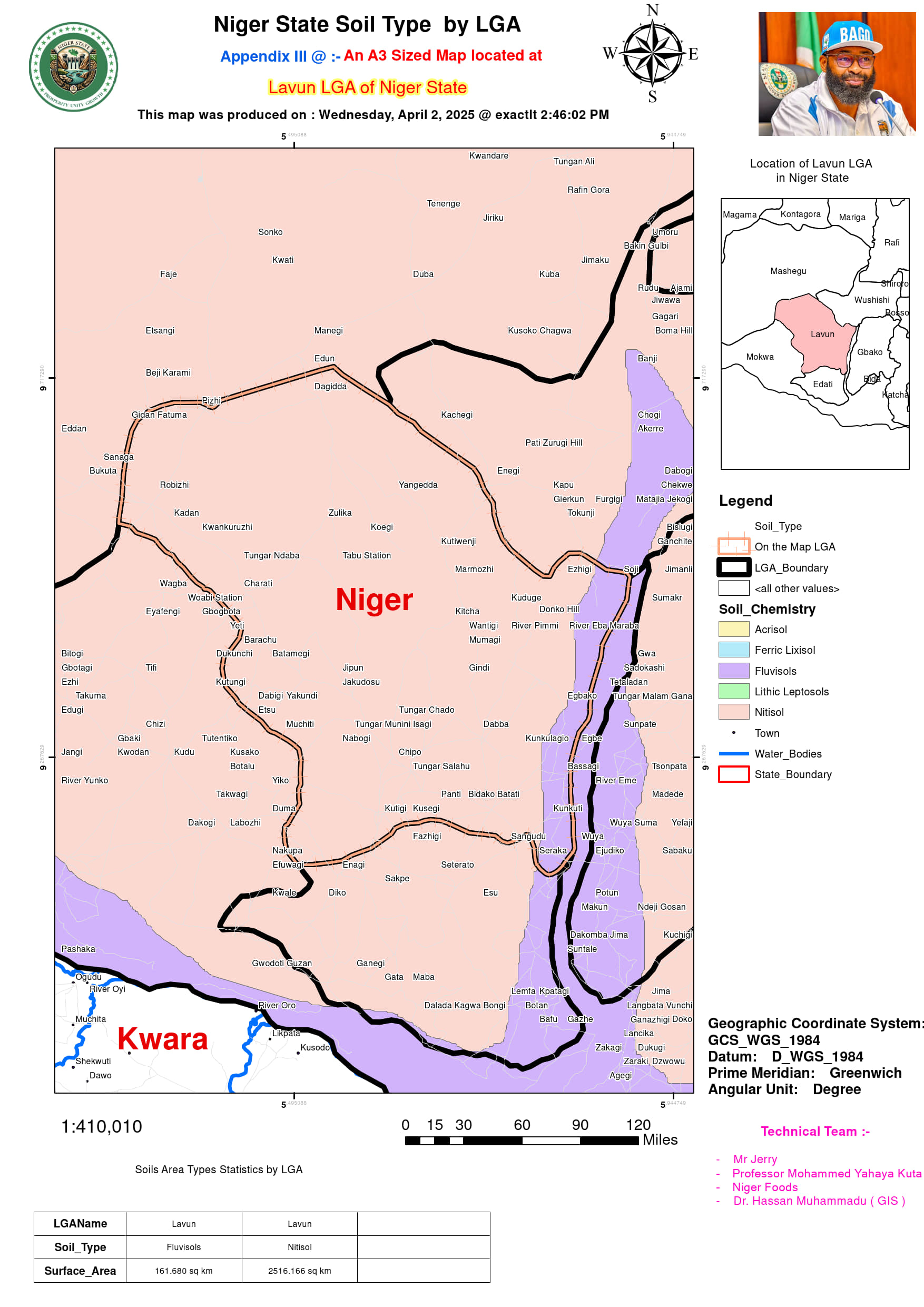
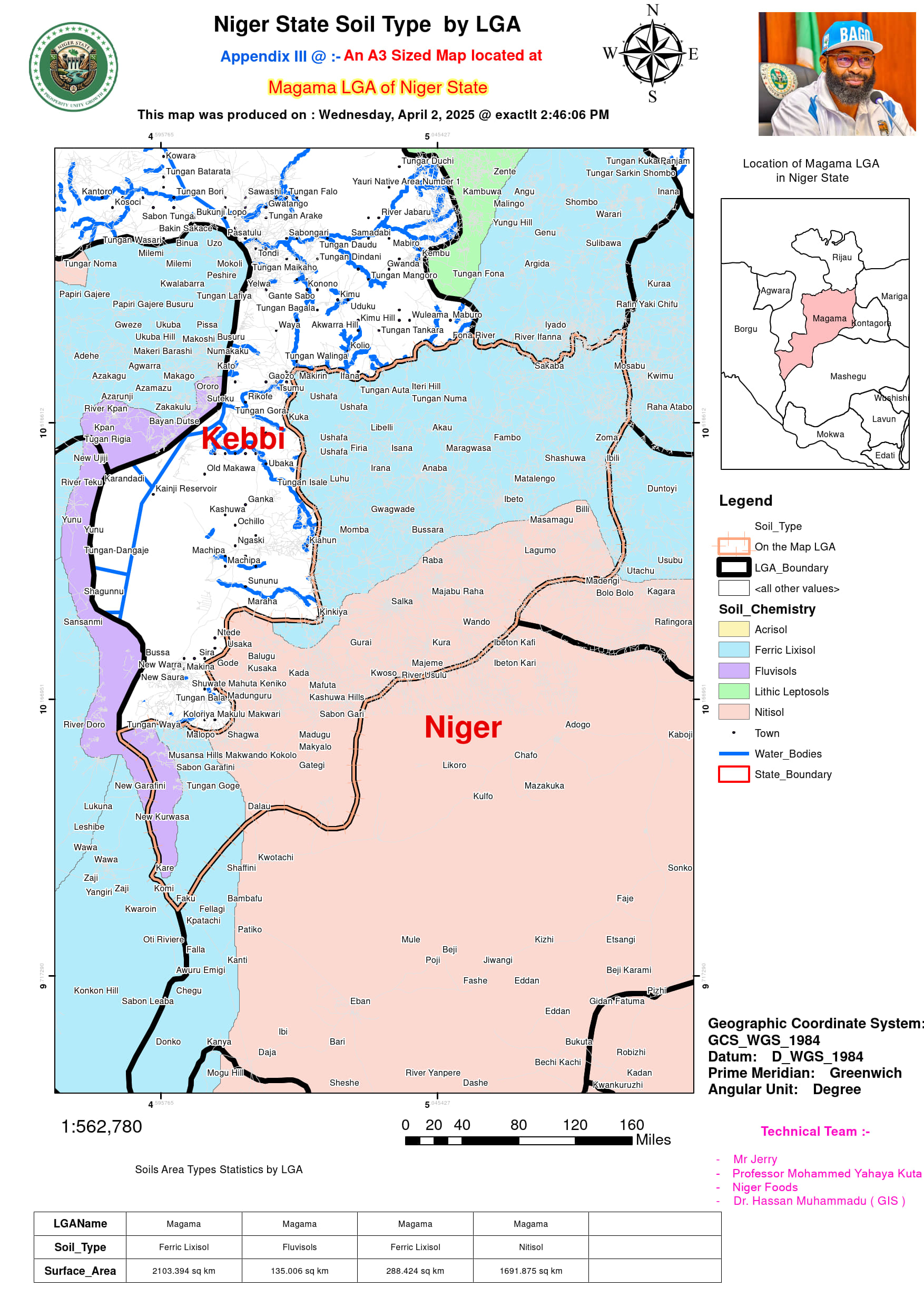
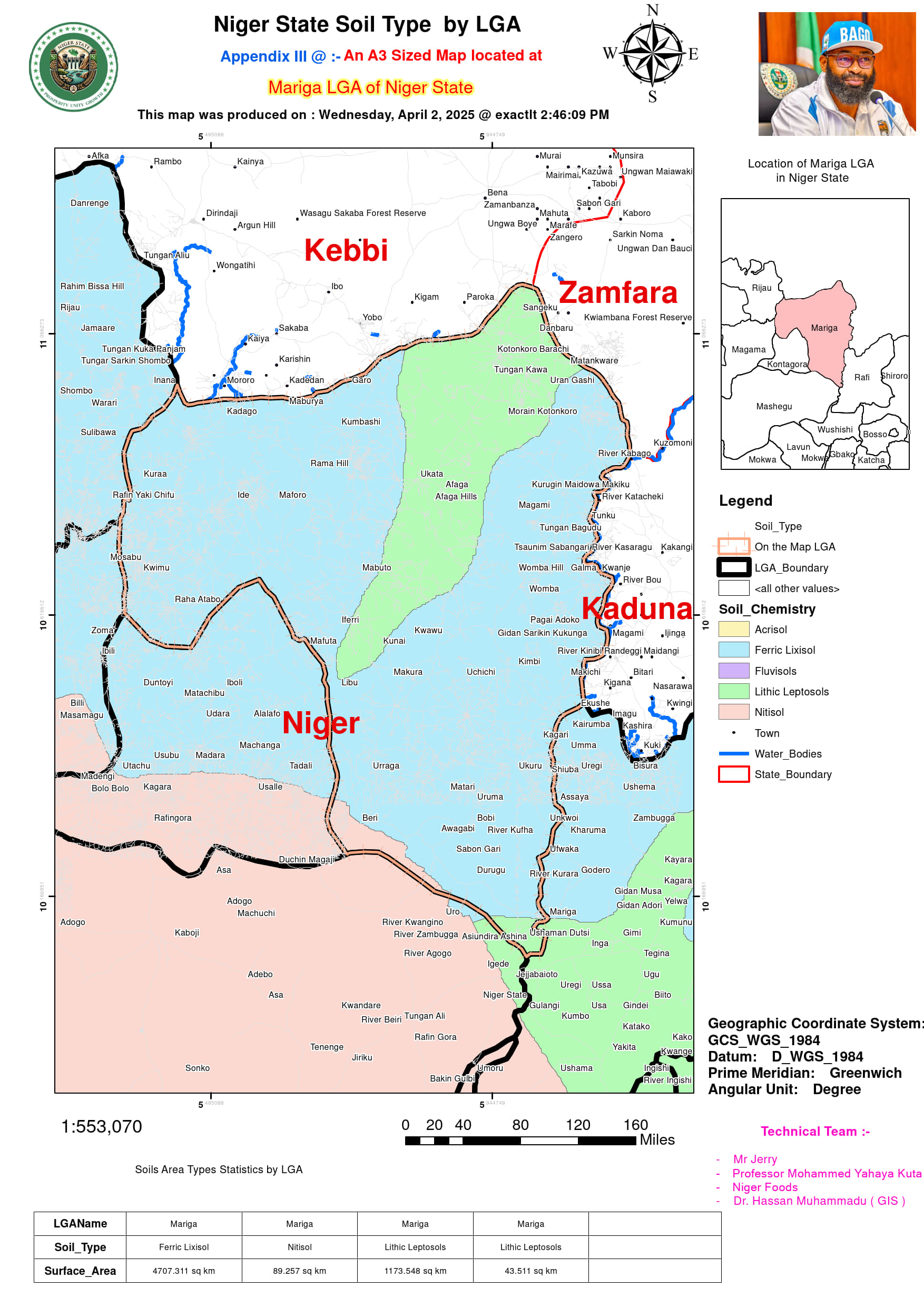
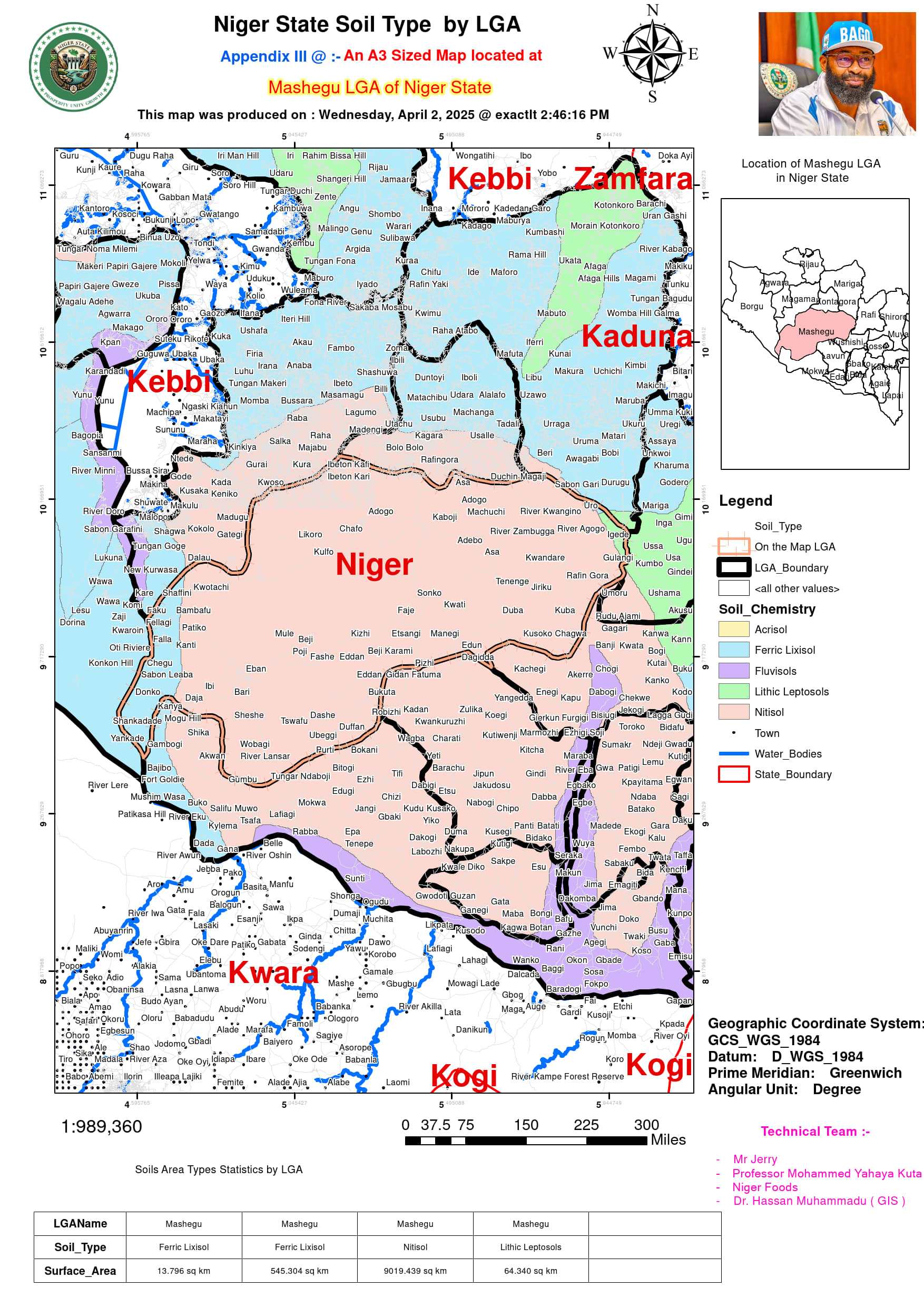
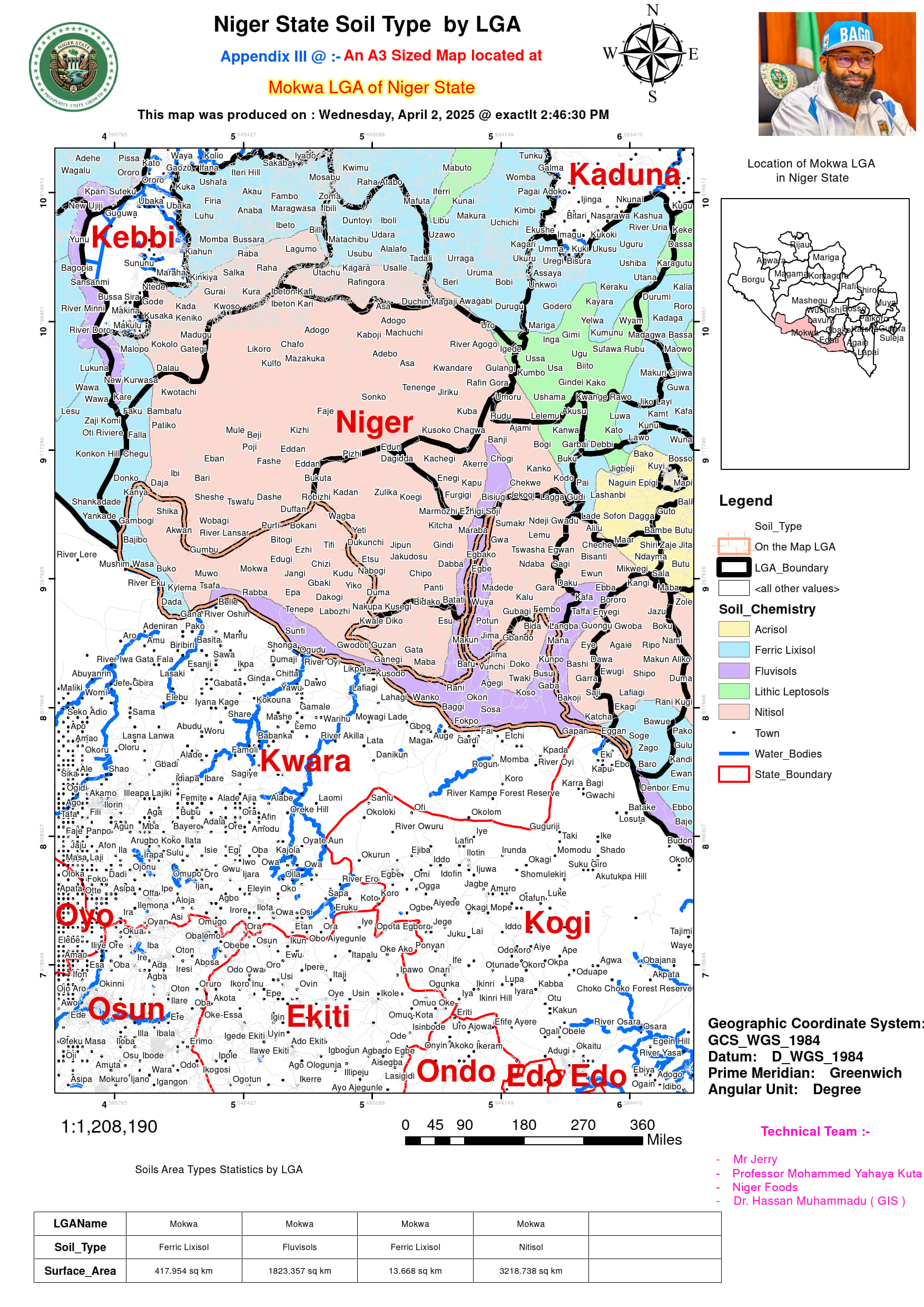
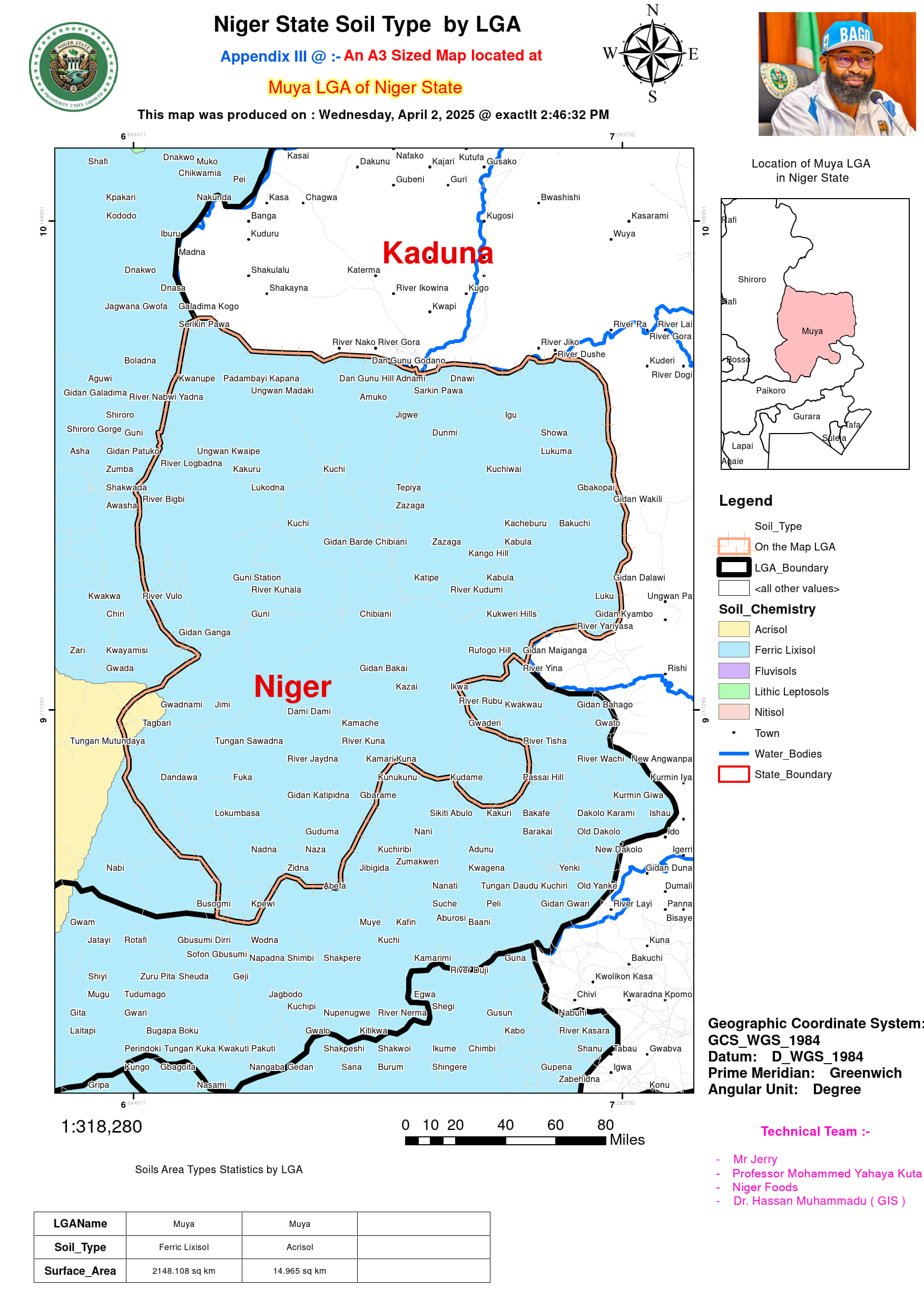
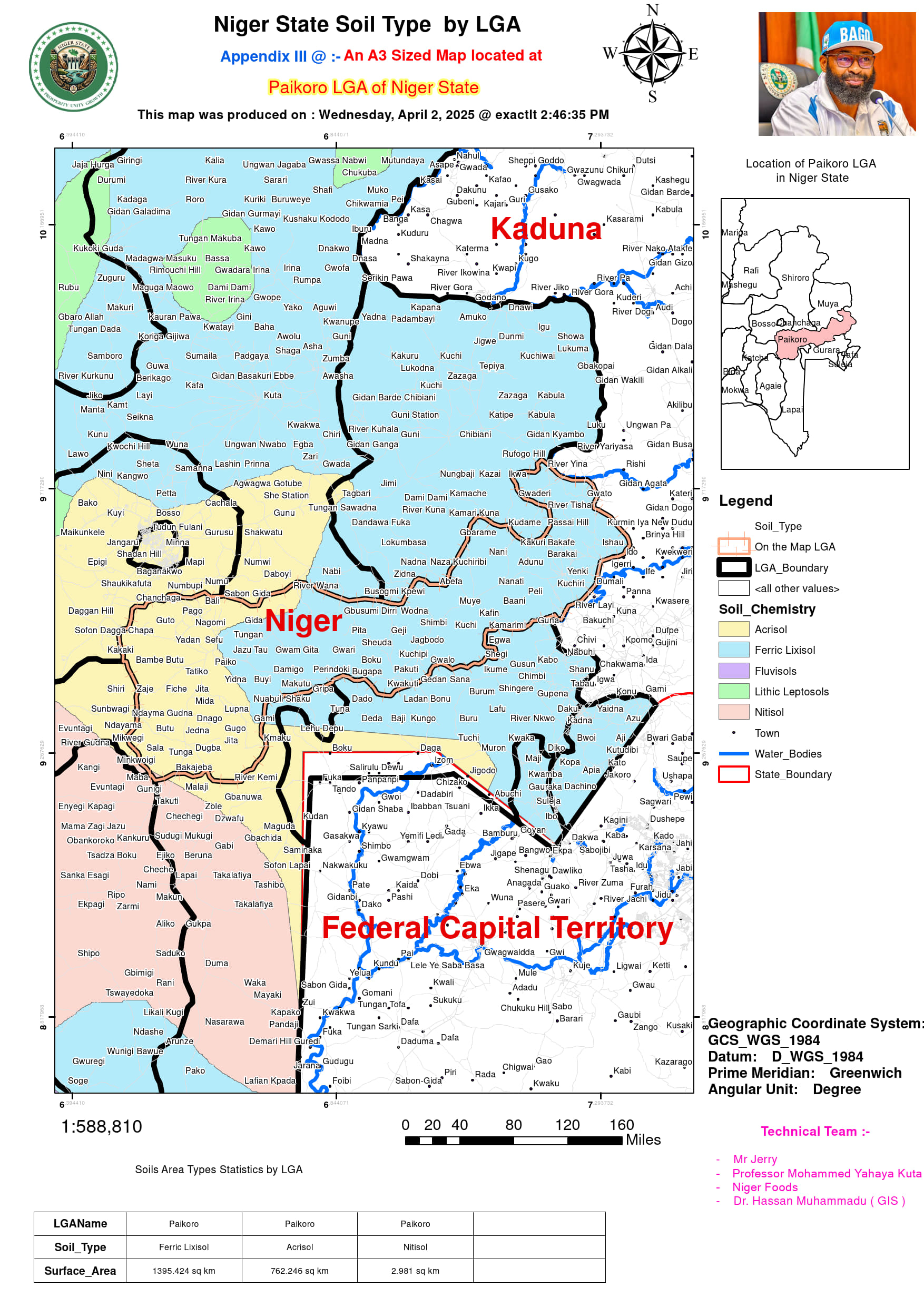
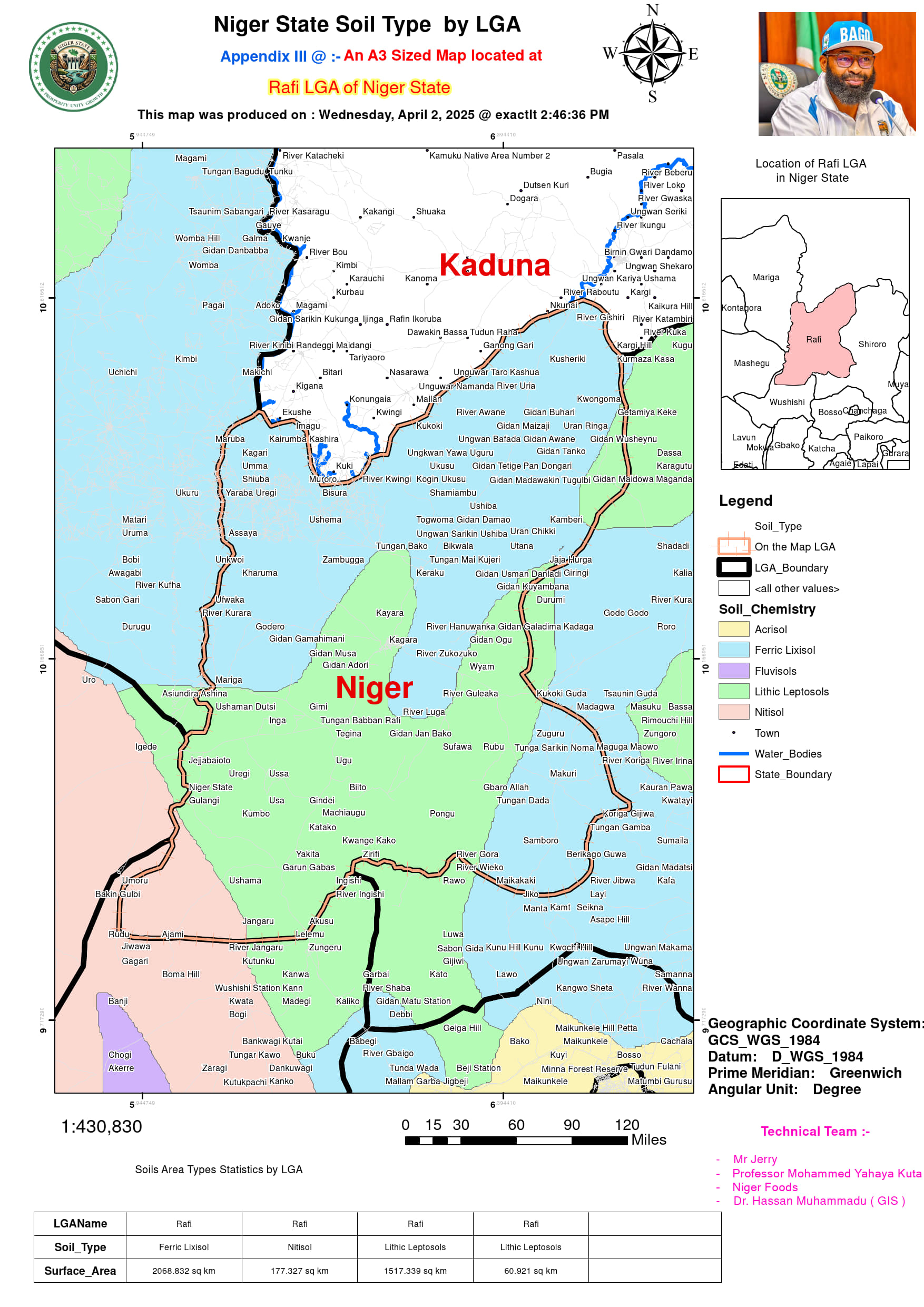

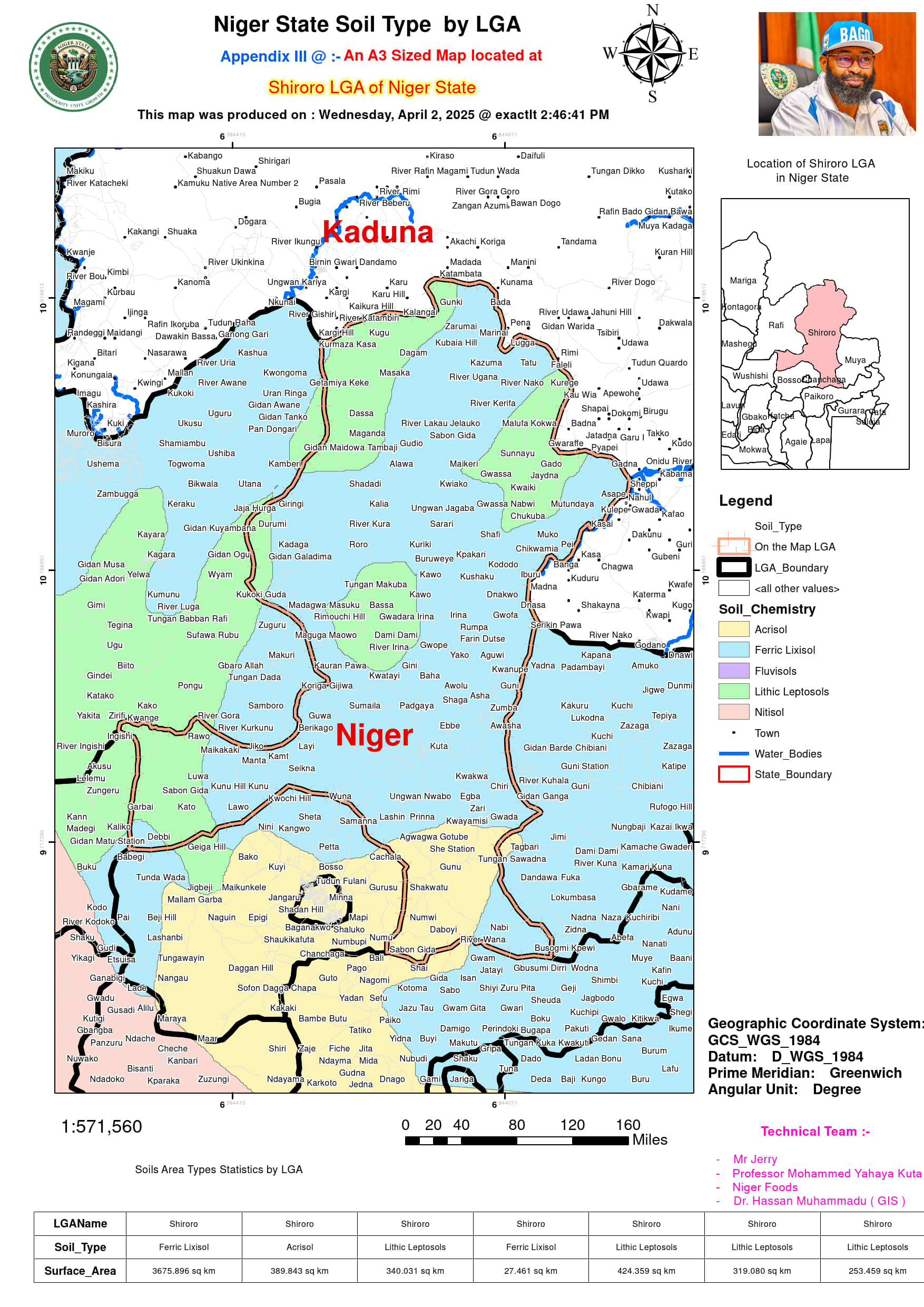
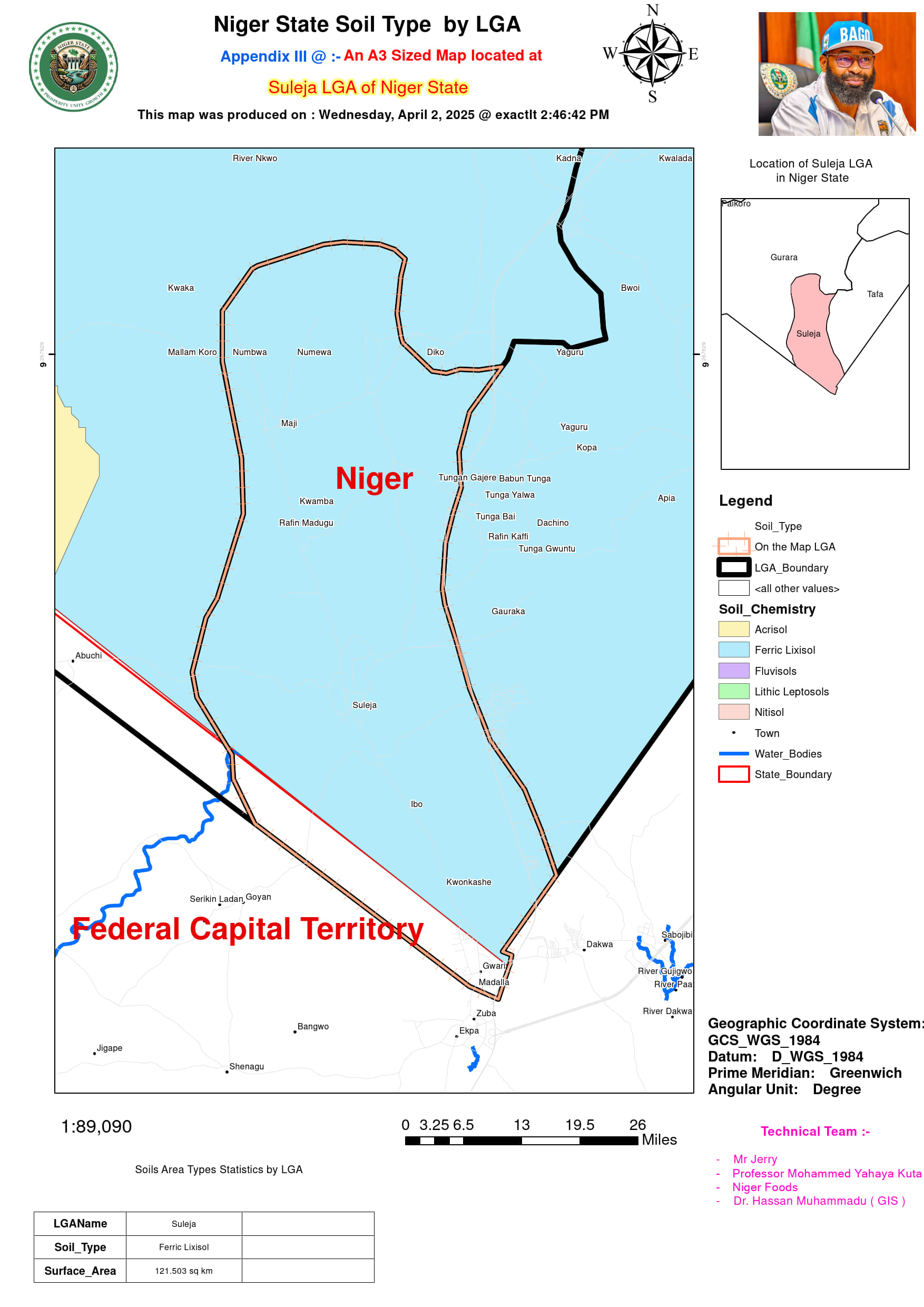
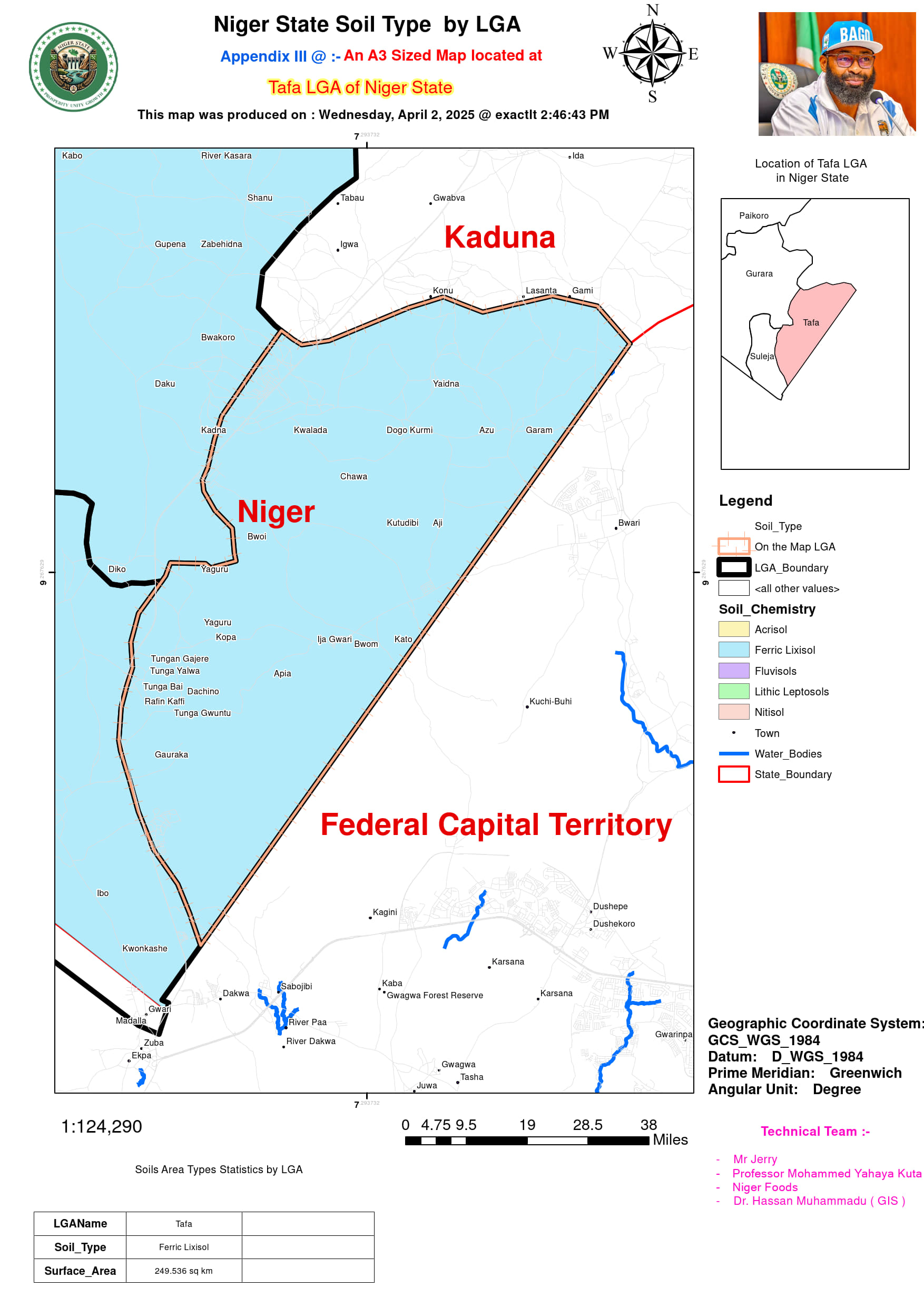

Soil Texture :
Niger State exhibits a complex mosaic of soil textures that reflect its diverse ecological zones and land use patterns. Clay soils dominate most LGAs, covering extensive areas such as Borgu (9250.899 sq km), Mariga (5928.704 sq km), Mashegu (8499.661 sq km), and Shiroro (4560.554 sq km), particularly in regions with floodplains, hilly terrain, or arid savannas where weathering processes produce fine-textured particles. These clay-rich areas, while fertile, often present drainage challenges. Silt loam textures are widely distributed across agricultural zones, prominently in Lapai (435.160 sq km), Mokwa (792.827 sq km), and Shiroro (614.889 sq km), where they support crop cultivation due to their balanced moisture retention and workability. Sandy loam soils, though less extensive, occur in Agwara (104.962 sq km) and Borgu (208.843 sq km), favoring faster drainage in these riverine and border regions. Transitional textures like silt clay loam appear patchily, notably in Mokwa (92.607 sq km) and Lapai (10.388 sq km), blending fertility with moderate permeability. Loamy soils form smaller but critical pockets in Agaie (388.878 sq km), Katcha (164.699 sq km), and Bosso (124.770 sq km), optimizing conditions for both agriculture and natural vegetation. Unique mixes such as sandy clay-loam in Muya (87.232 sq km) and Shiroro (41.553 sq km) reflect localized geological influences, while sandy clay emerges in Borgu (63.836 sq km) and Magama (96.402 sq km), typical of arid northern fringes. Urbanized areas like Chanchaga and Suleja show limited silt loam (2.495 sq km) and clay (62.838–102.514 sq km), altered by infrastructure. The prevalence of clay in riverine LGAs (Katcha: 1476.469 sq km; Agwara: 1346.650 sq km) contrasts with coarser textures in uplands, underscoring how elevation and hydrology shape soil profiles. This intricate texture distribution—from water-retentive clays in Lavun (2624.720 sq km) to drought-prone sandy loams in Magama (1.816 sq km)—directly impacts farming systems, irrigation needs, and erosion risks across the state.
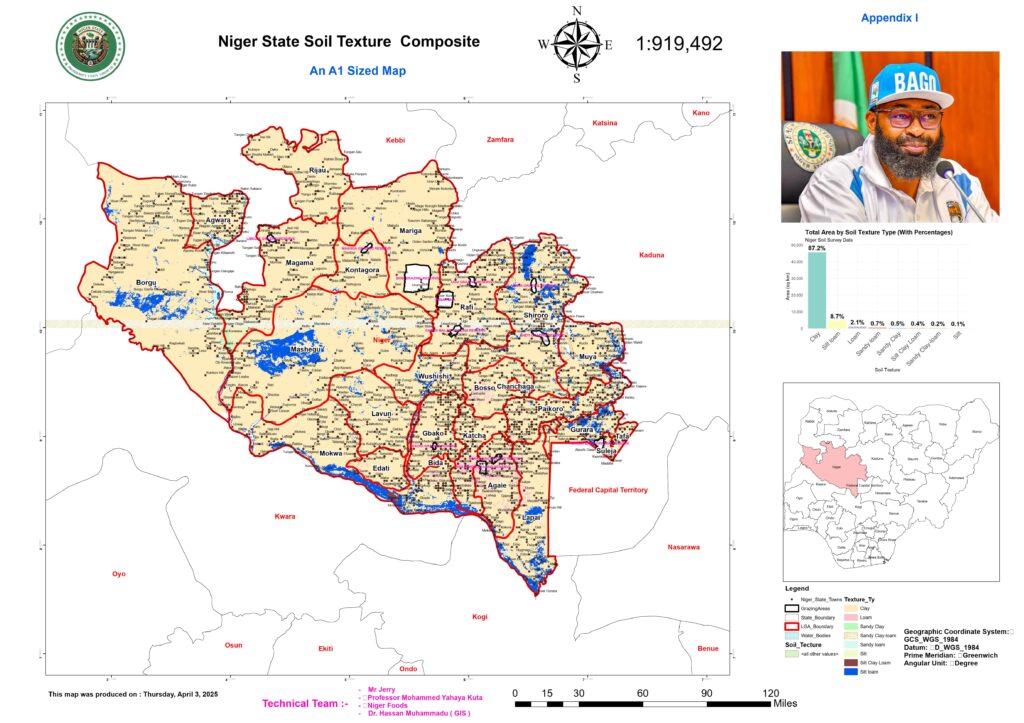
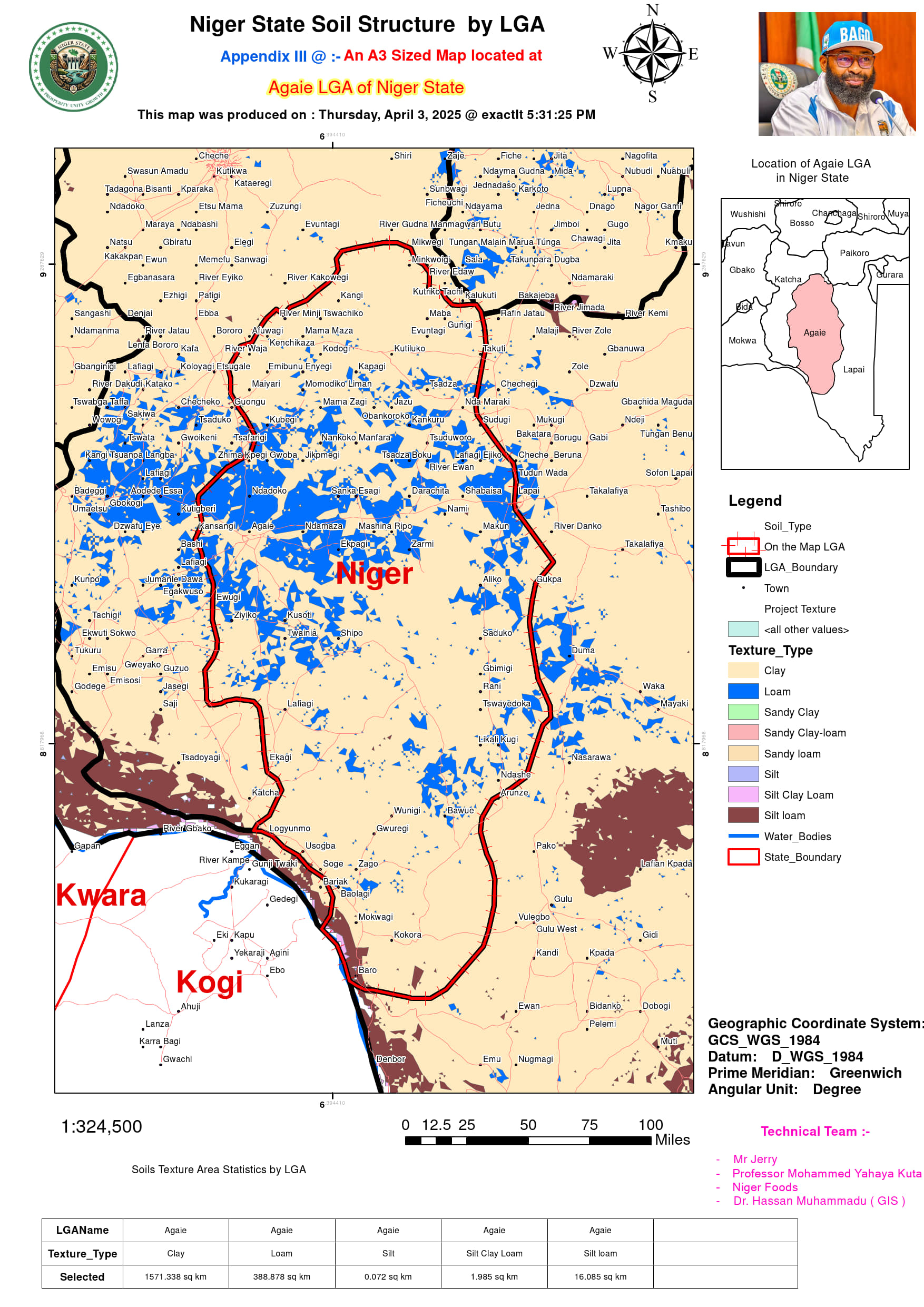
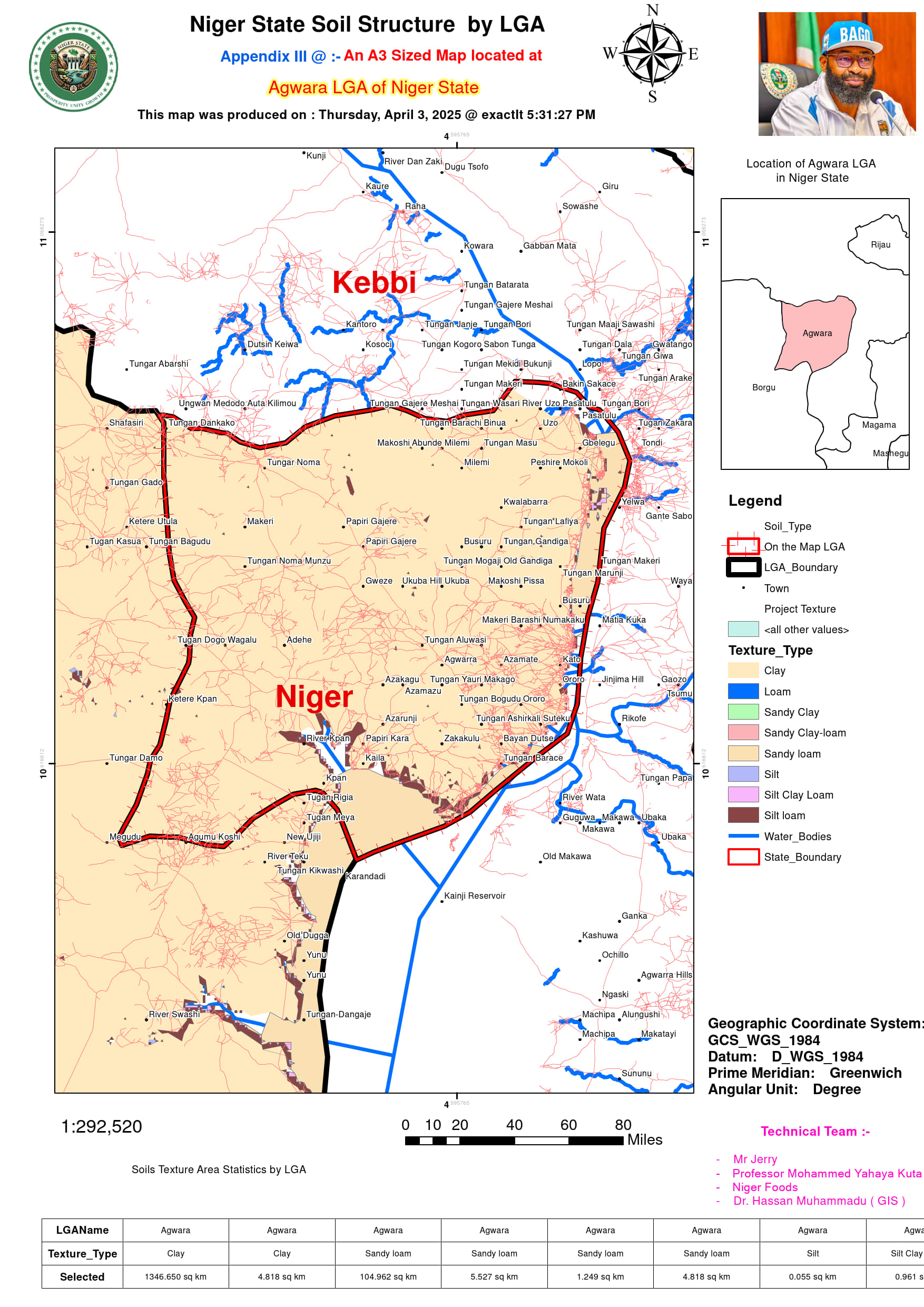
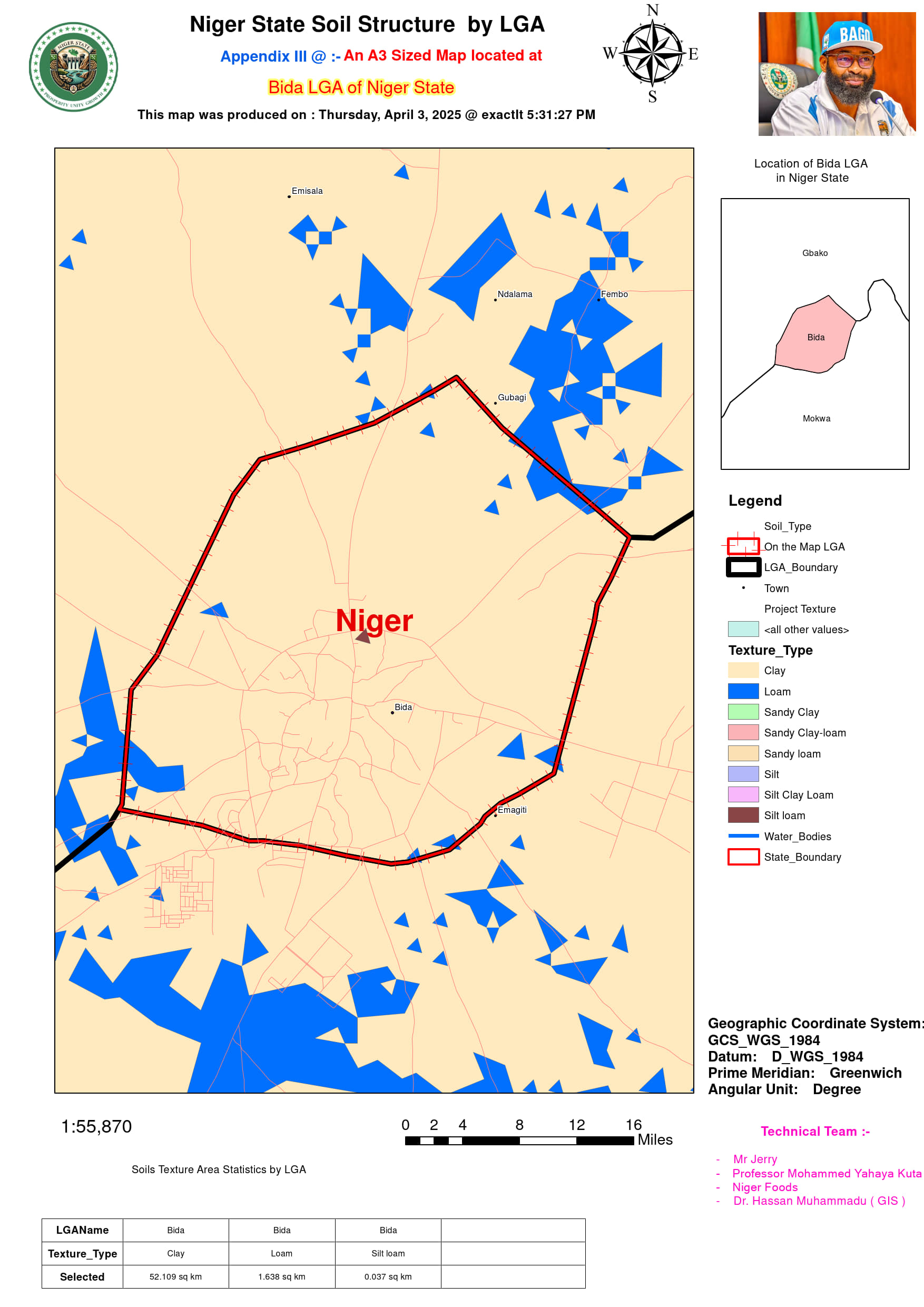
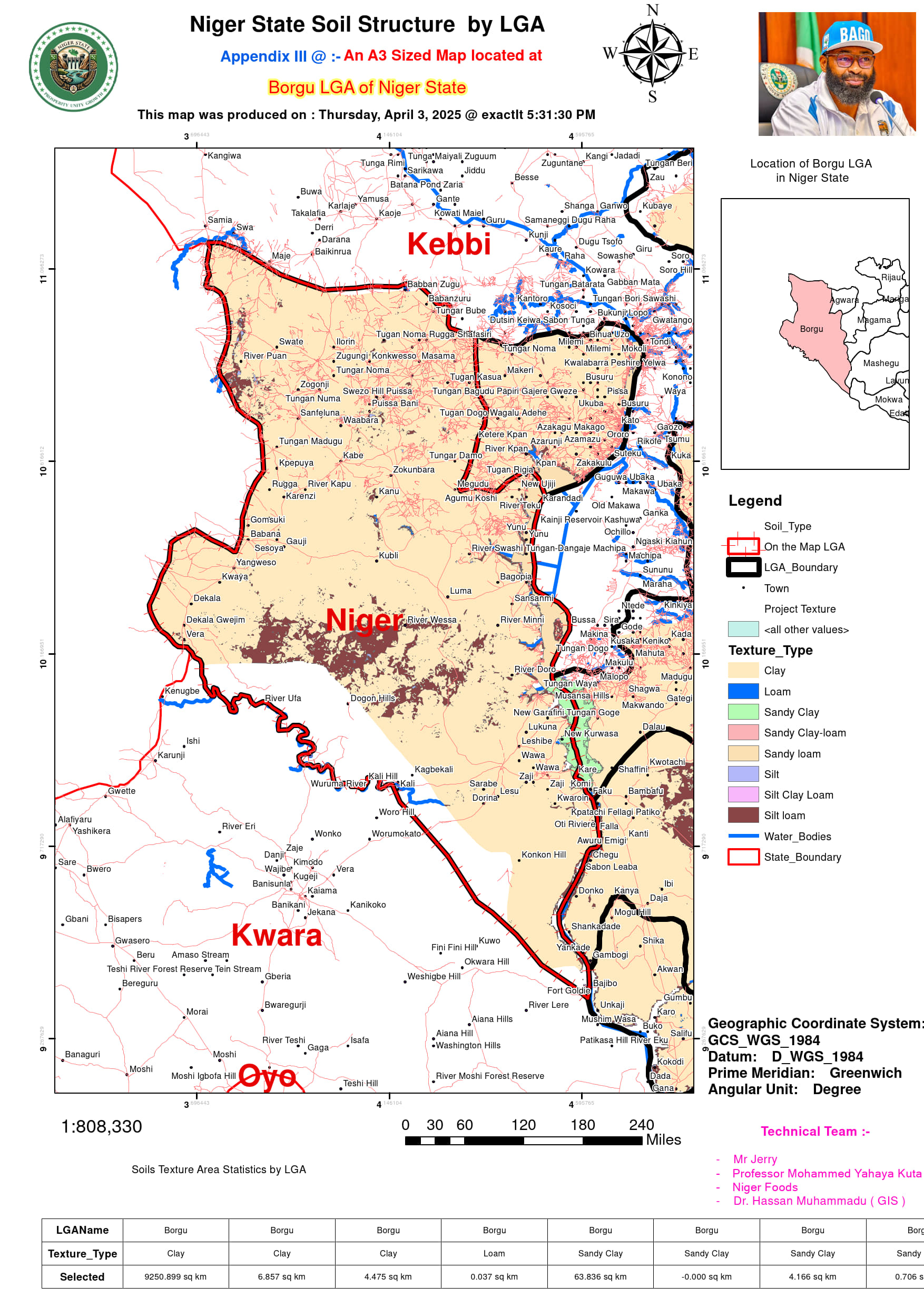
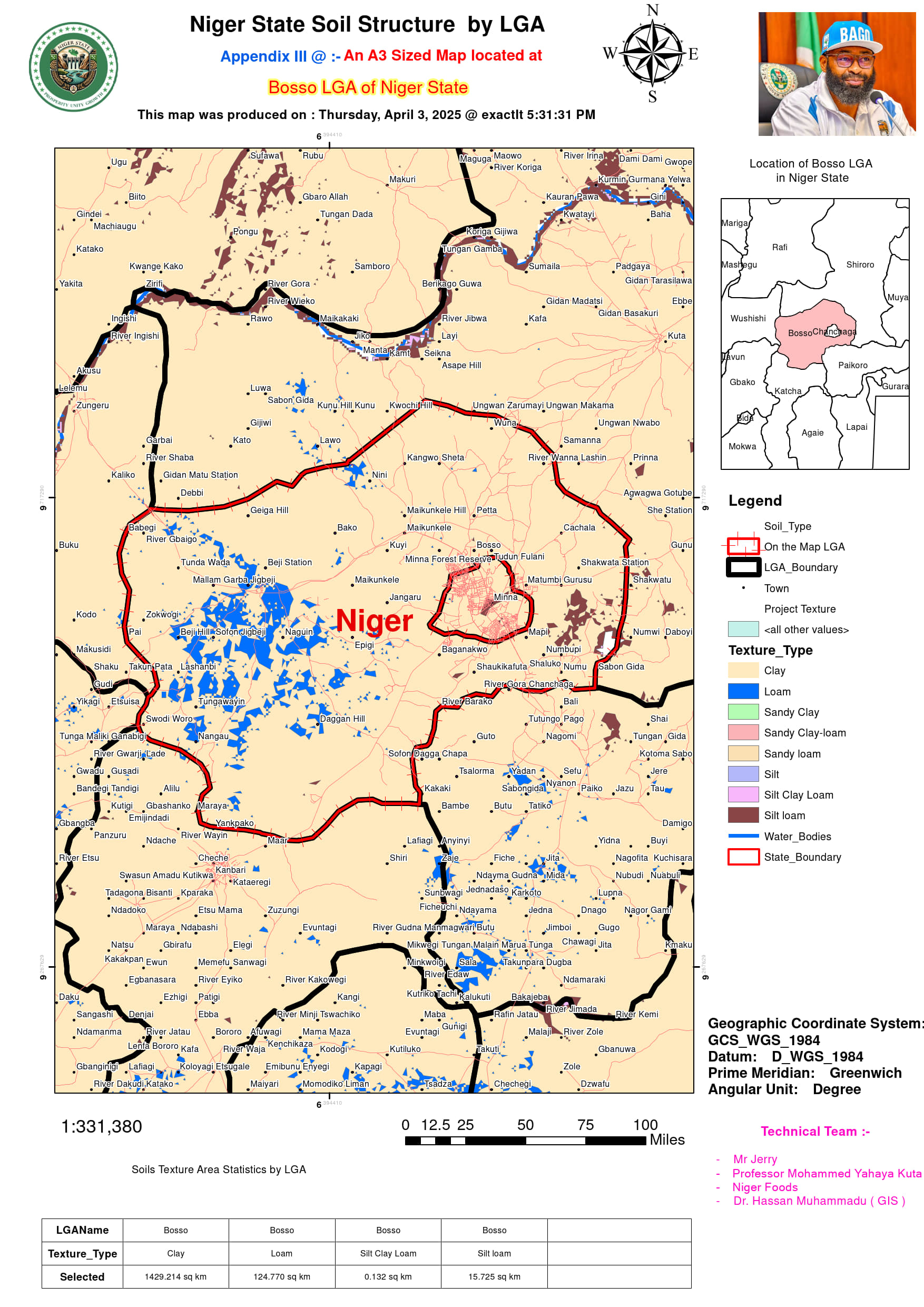
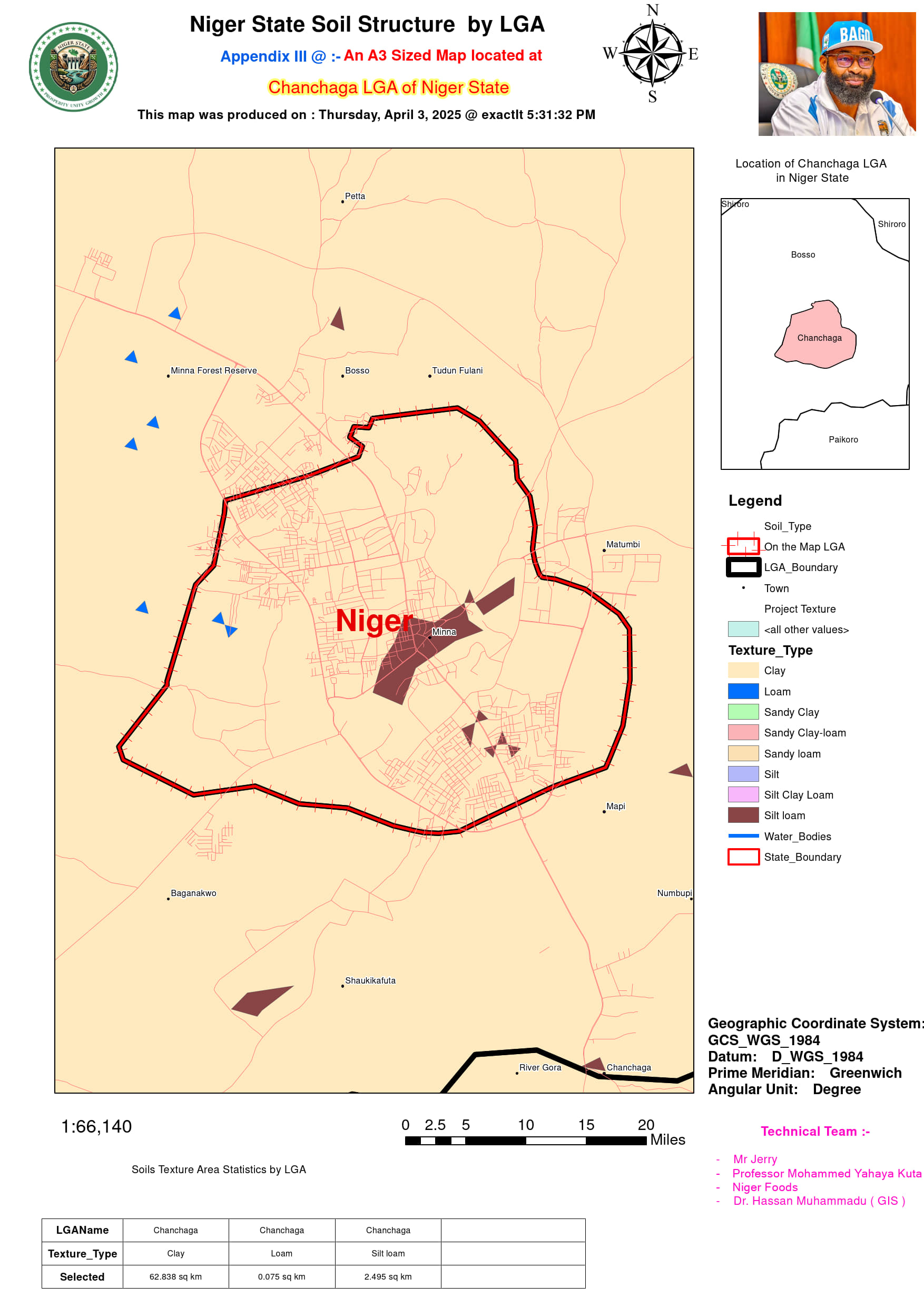
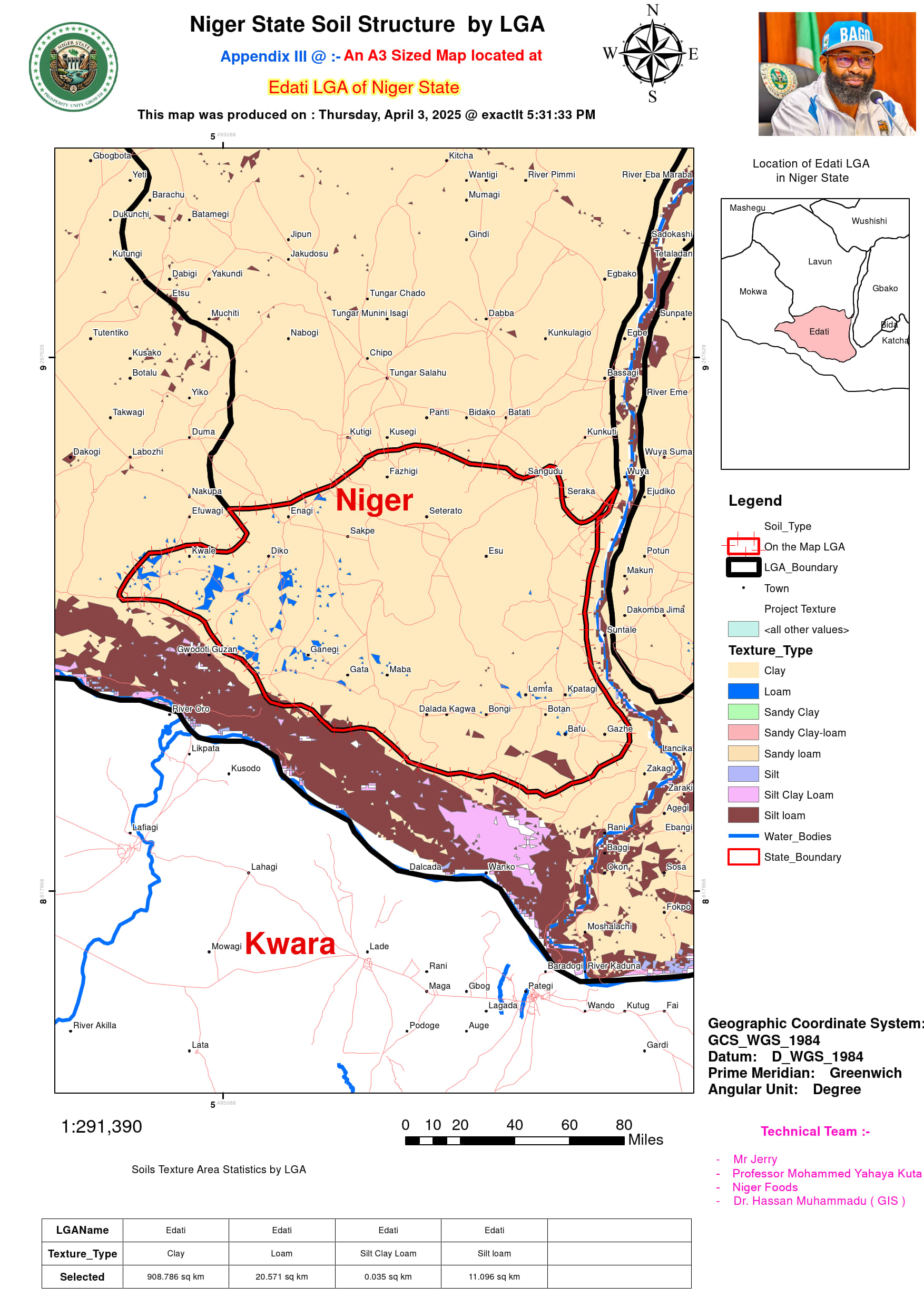

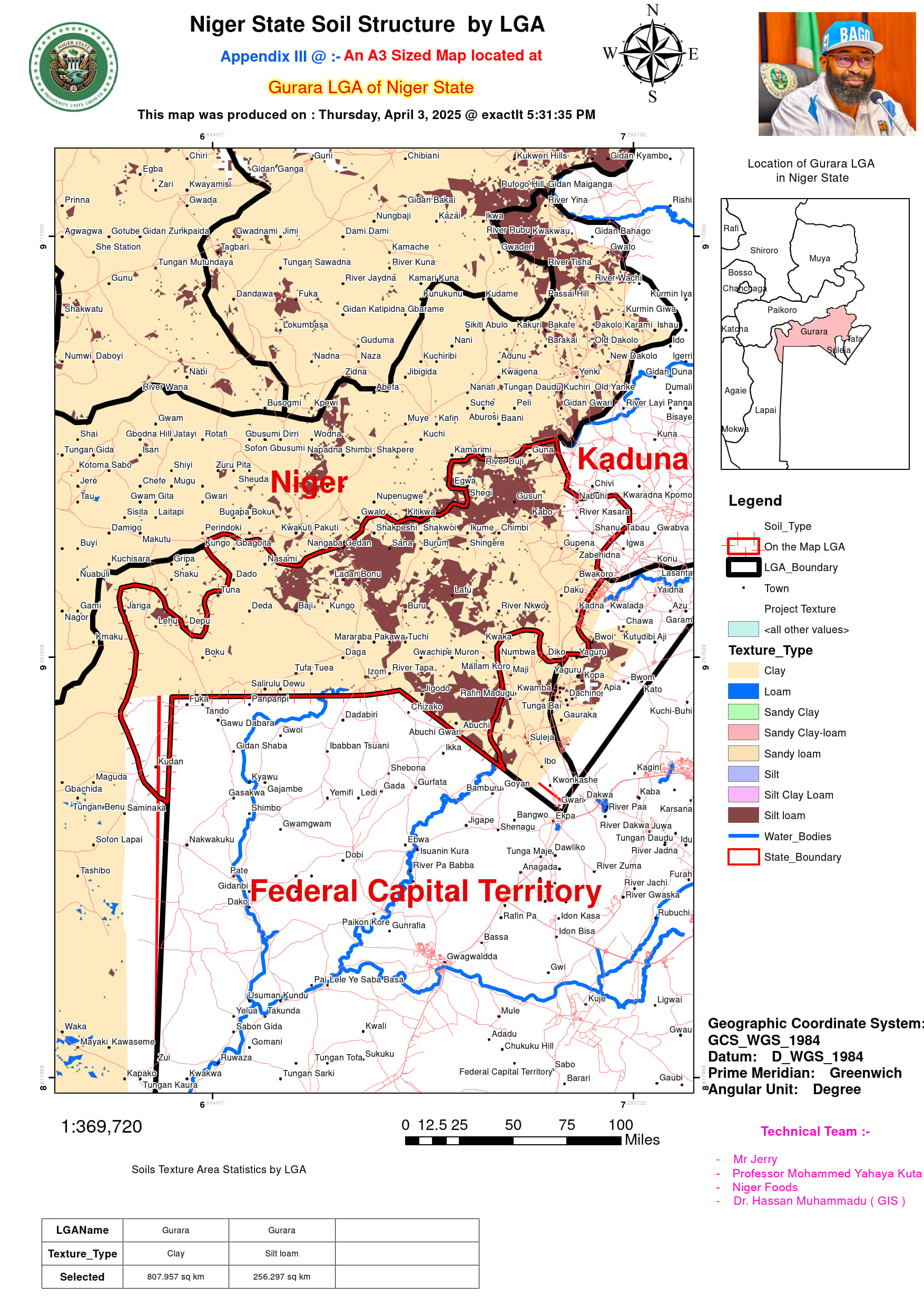
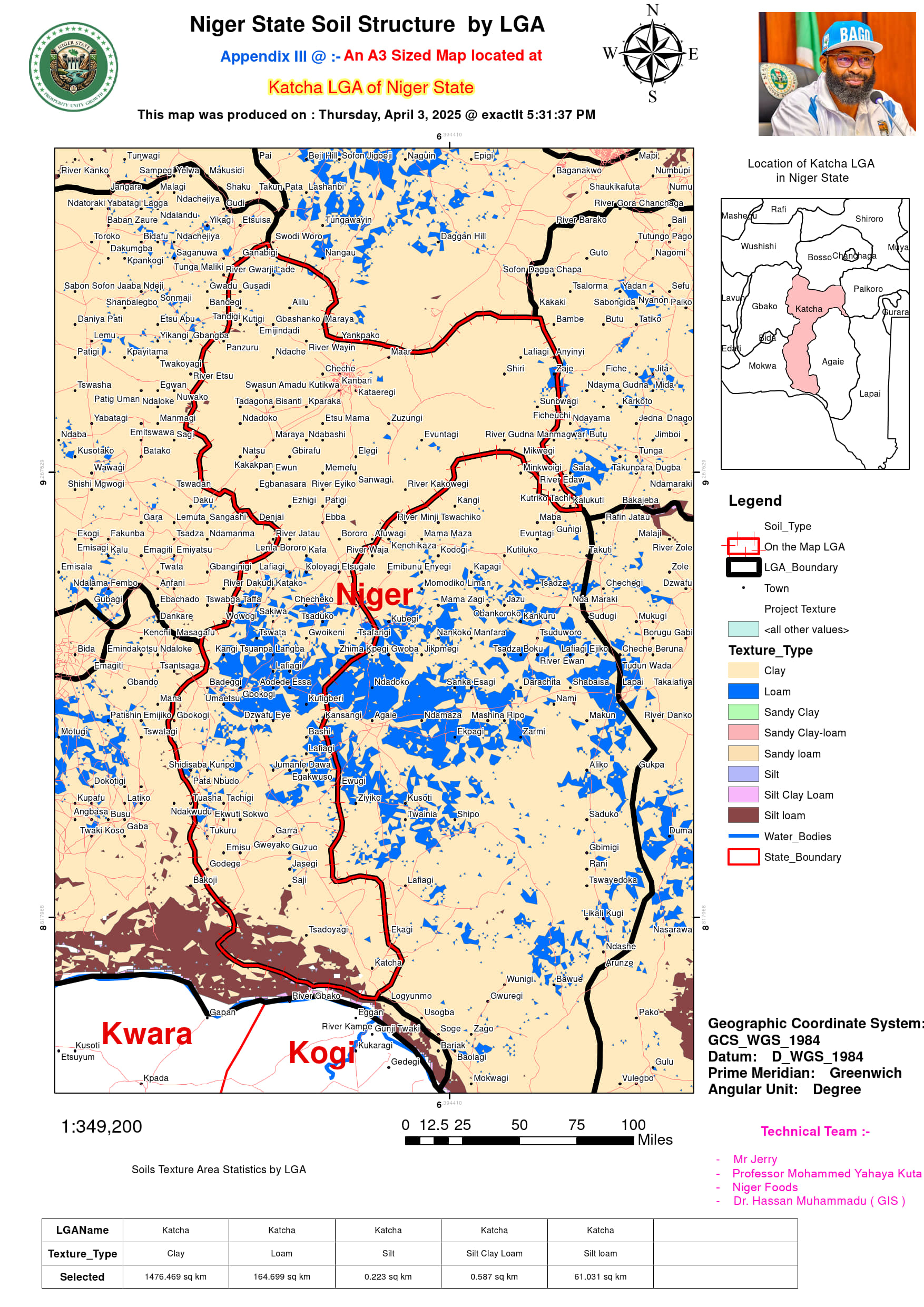
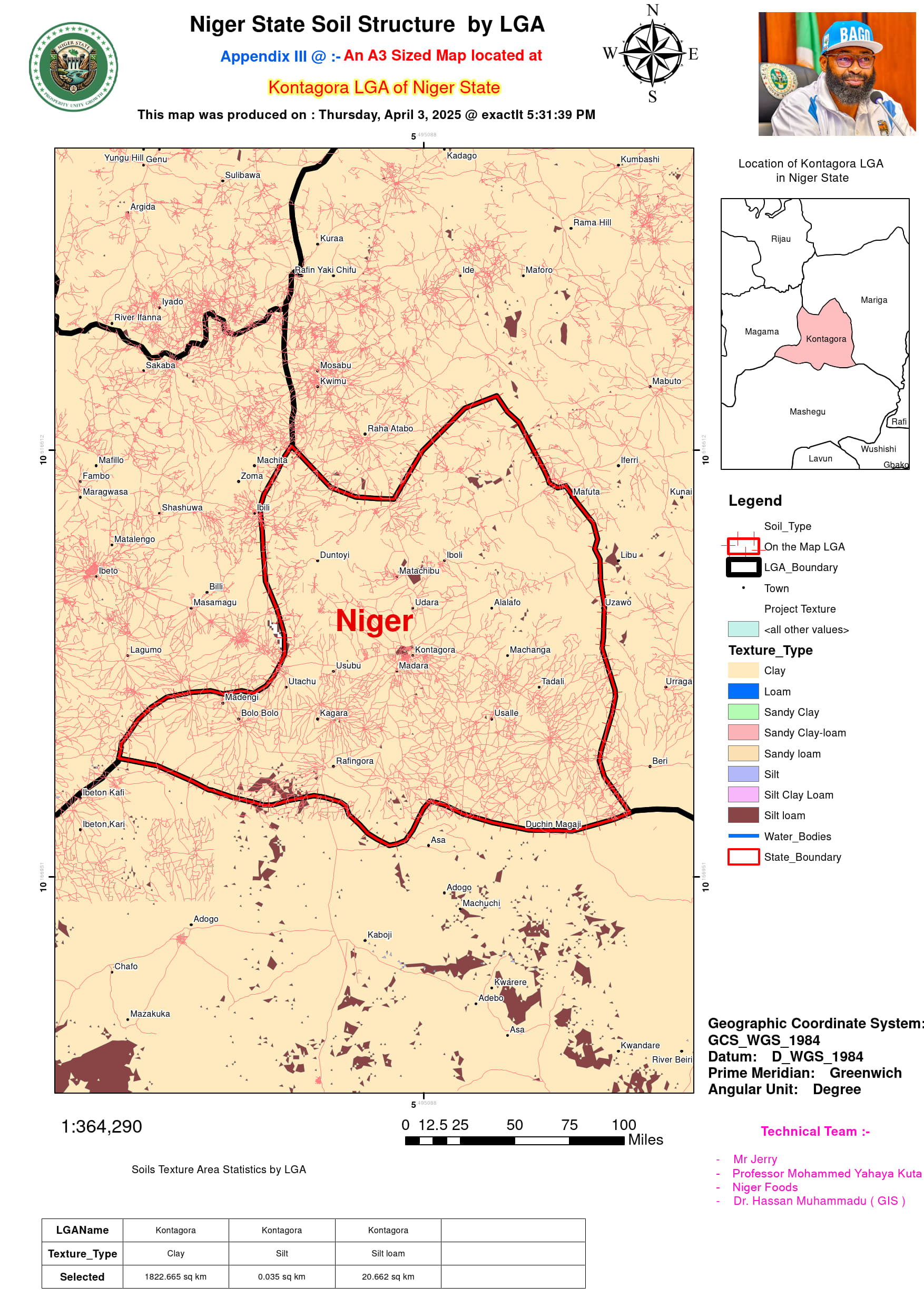
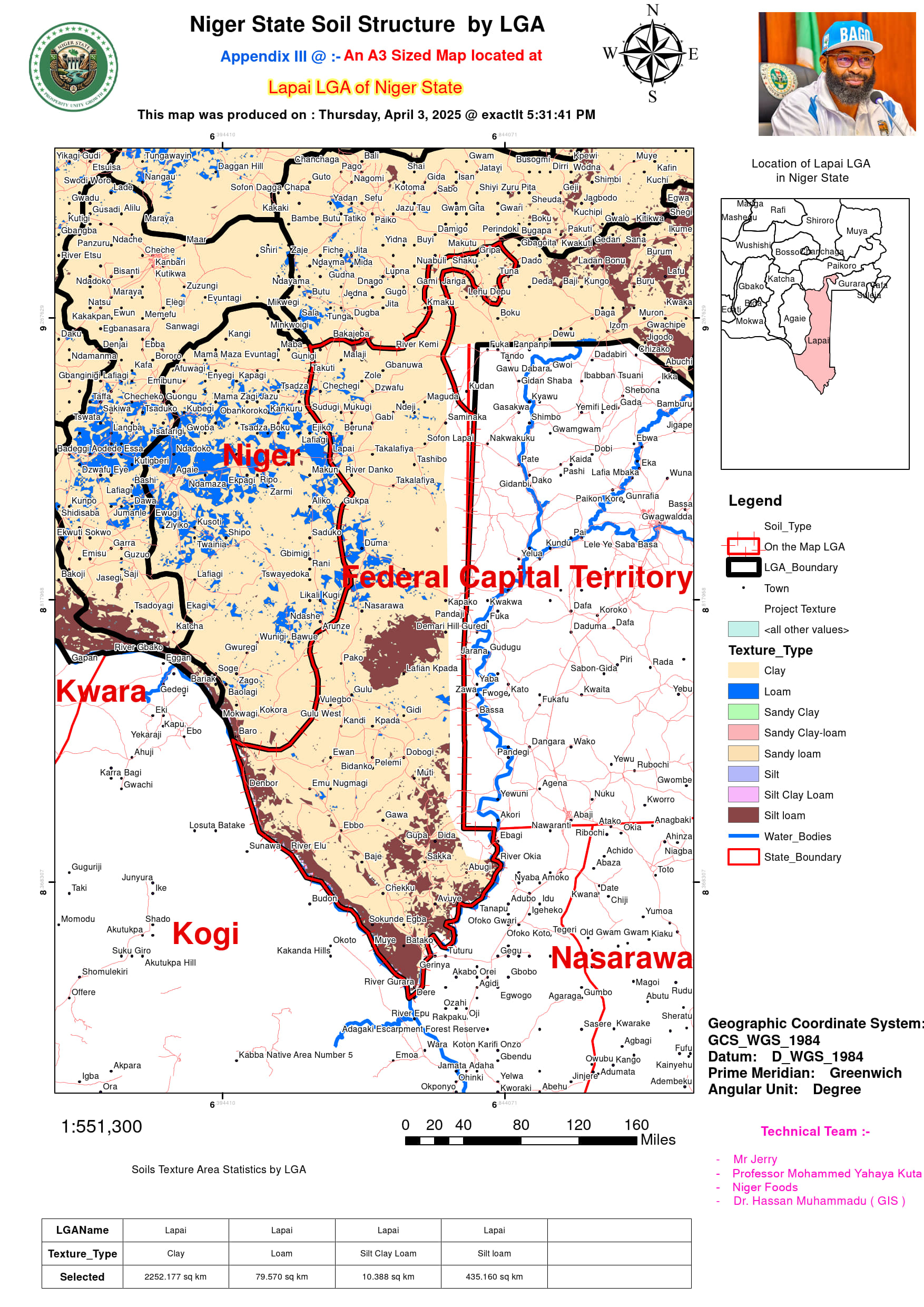
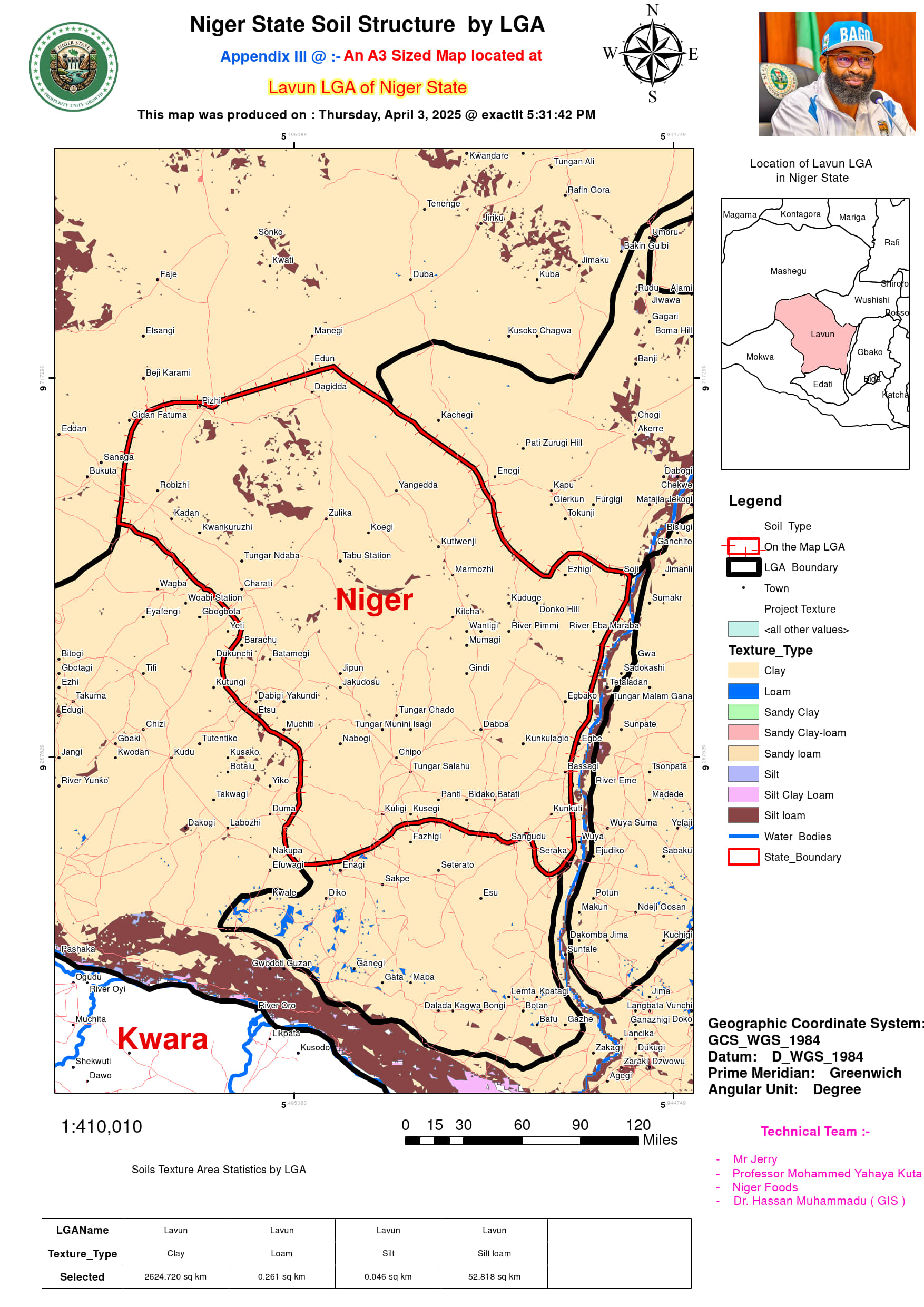
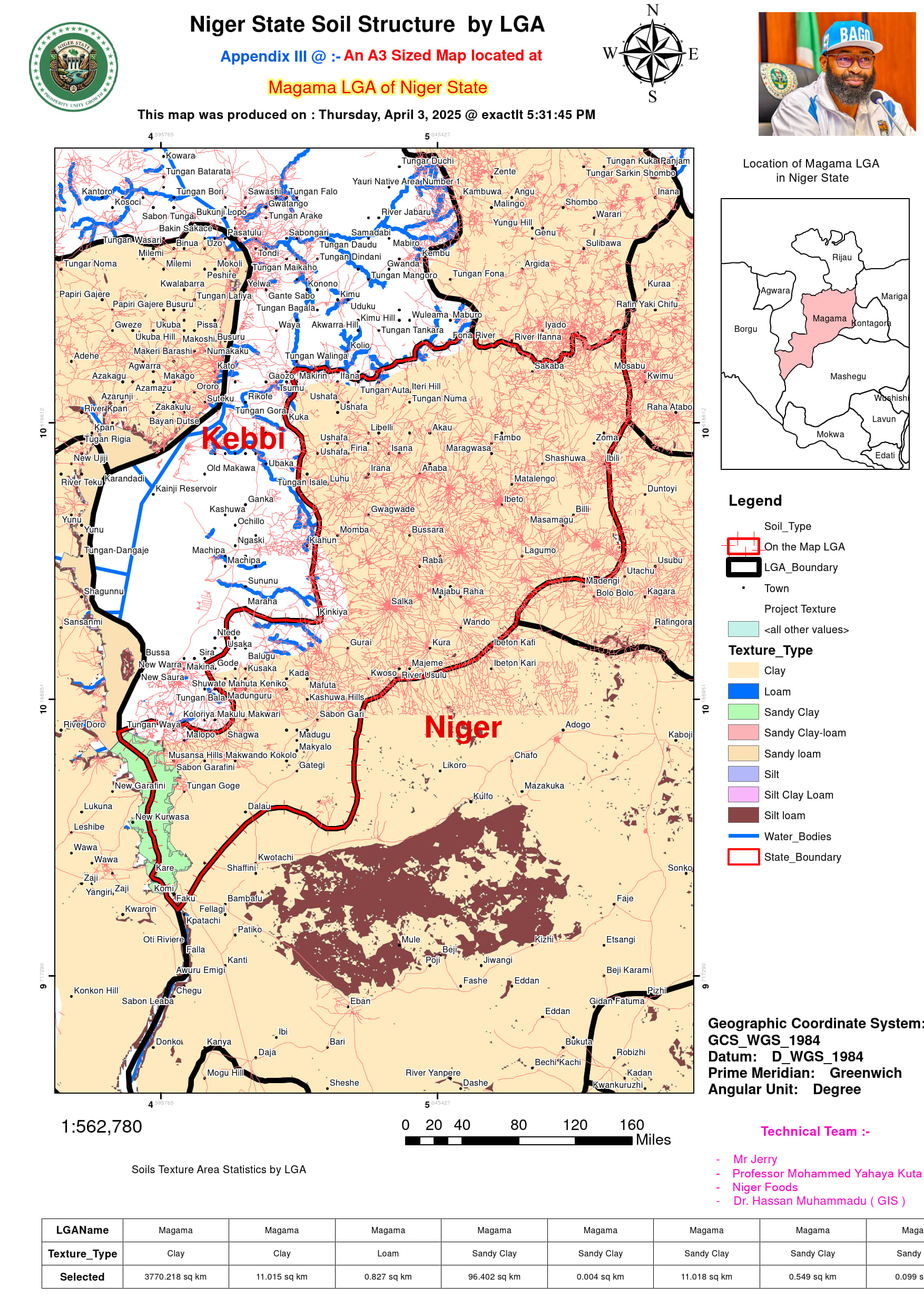
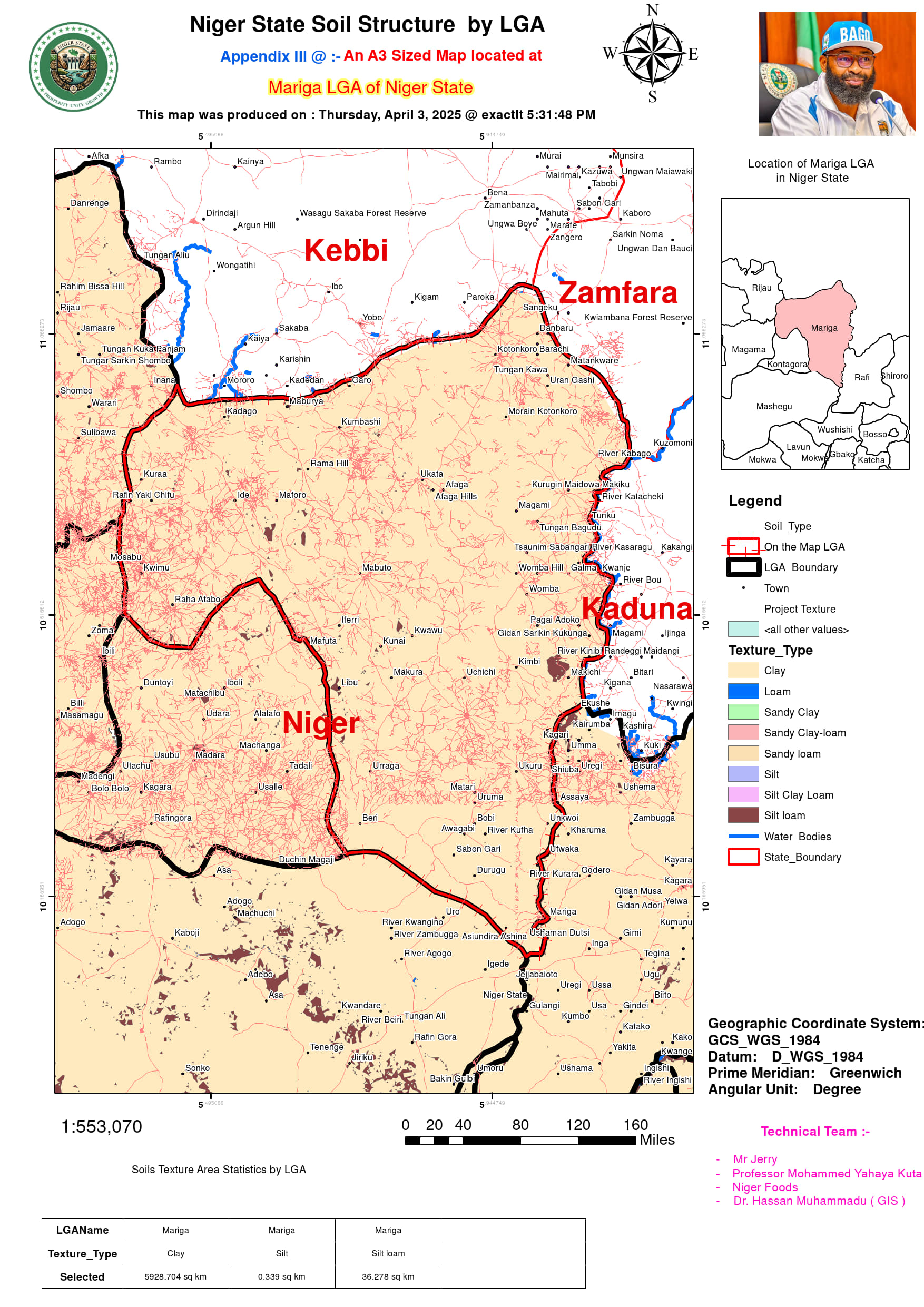
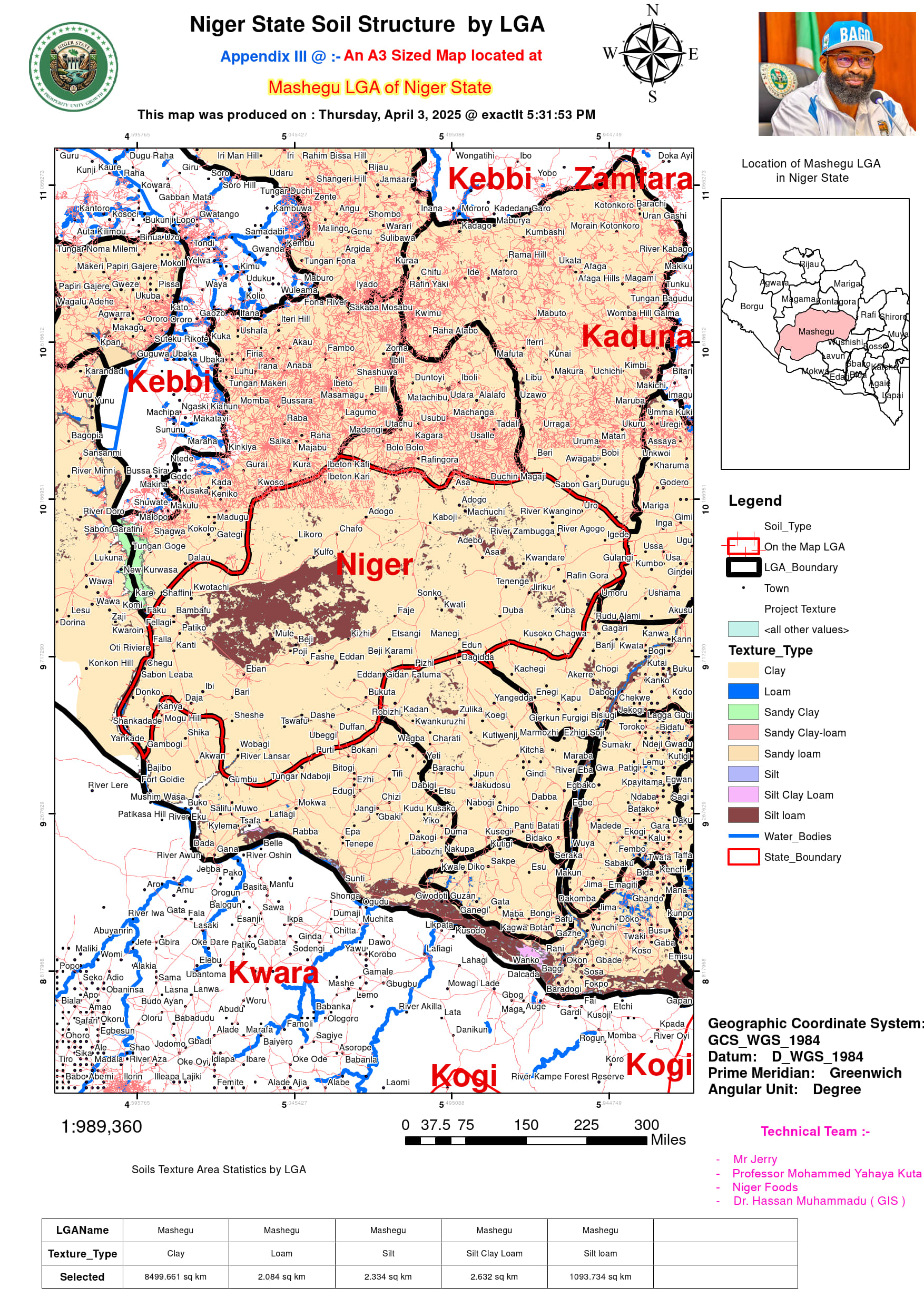
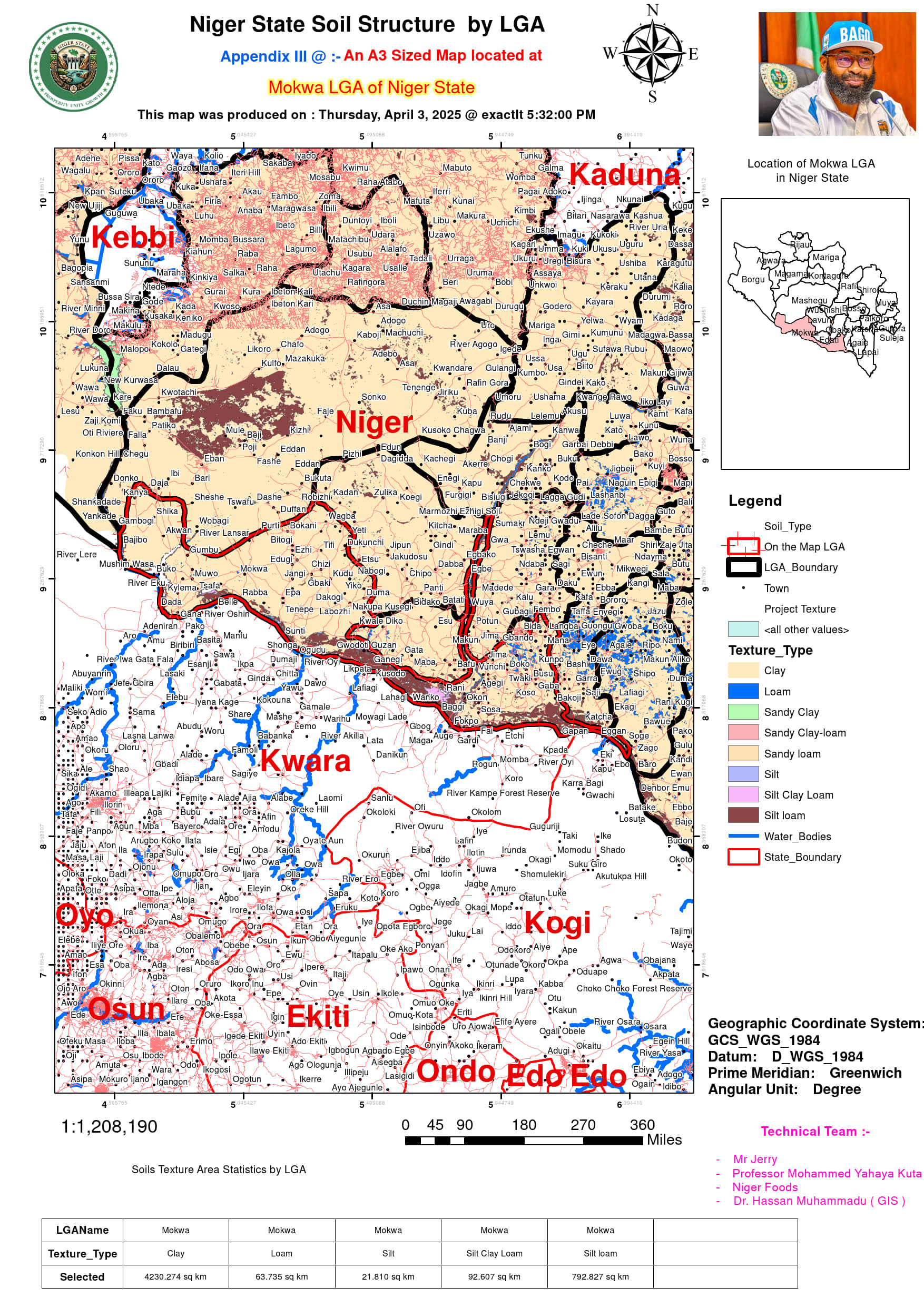

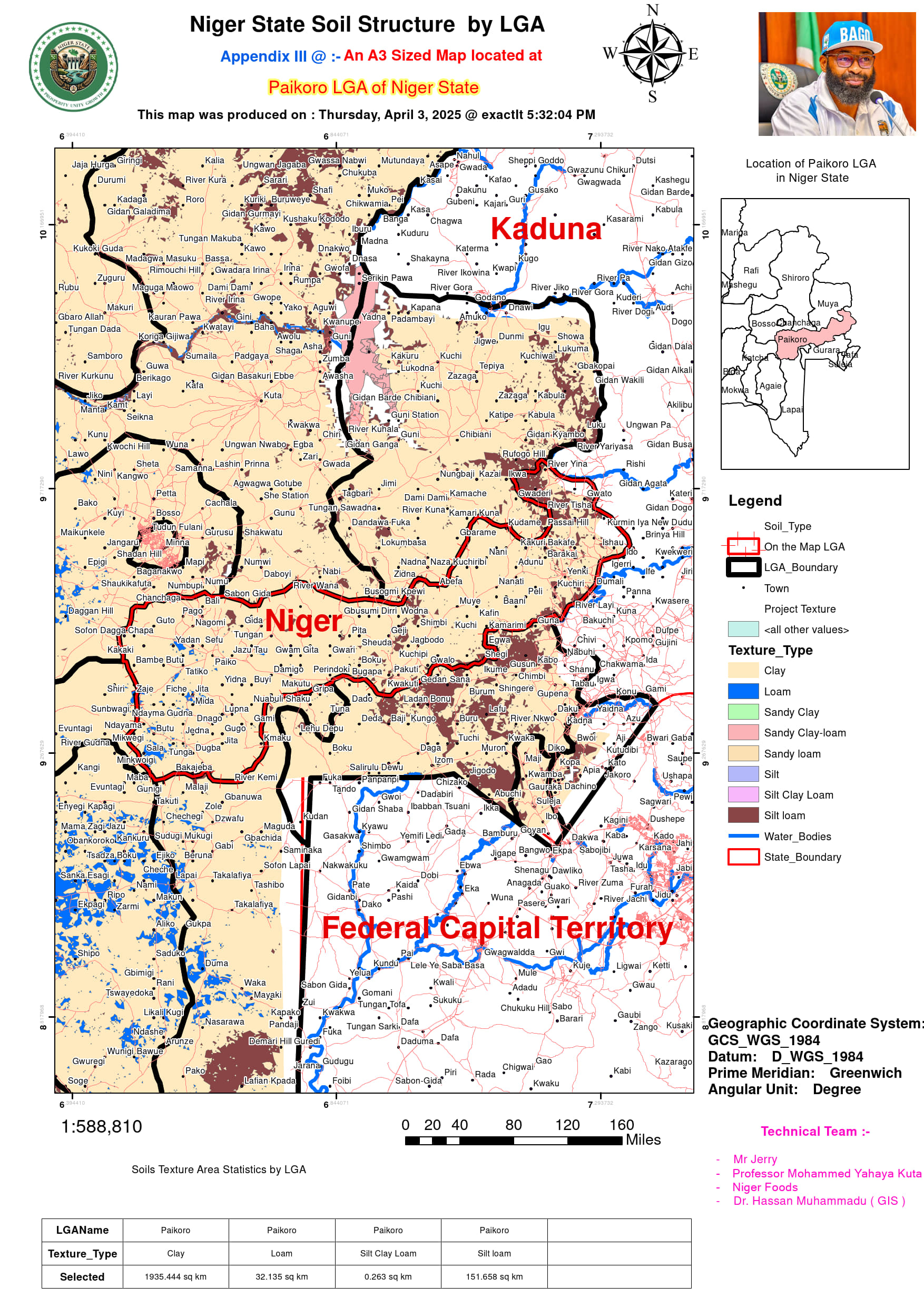
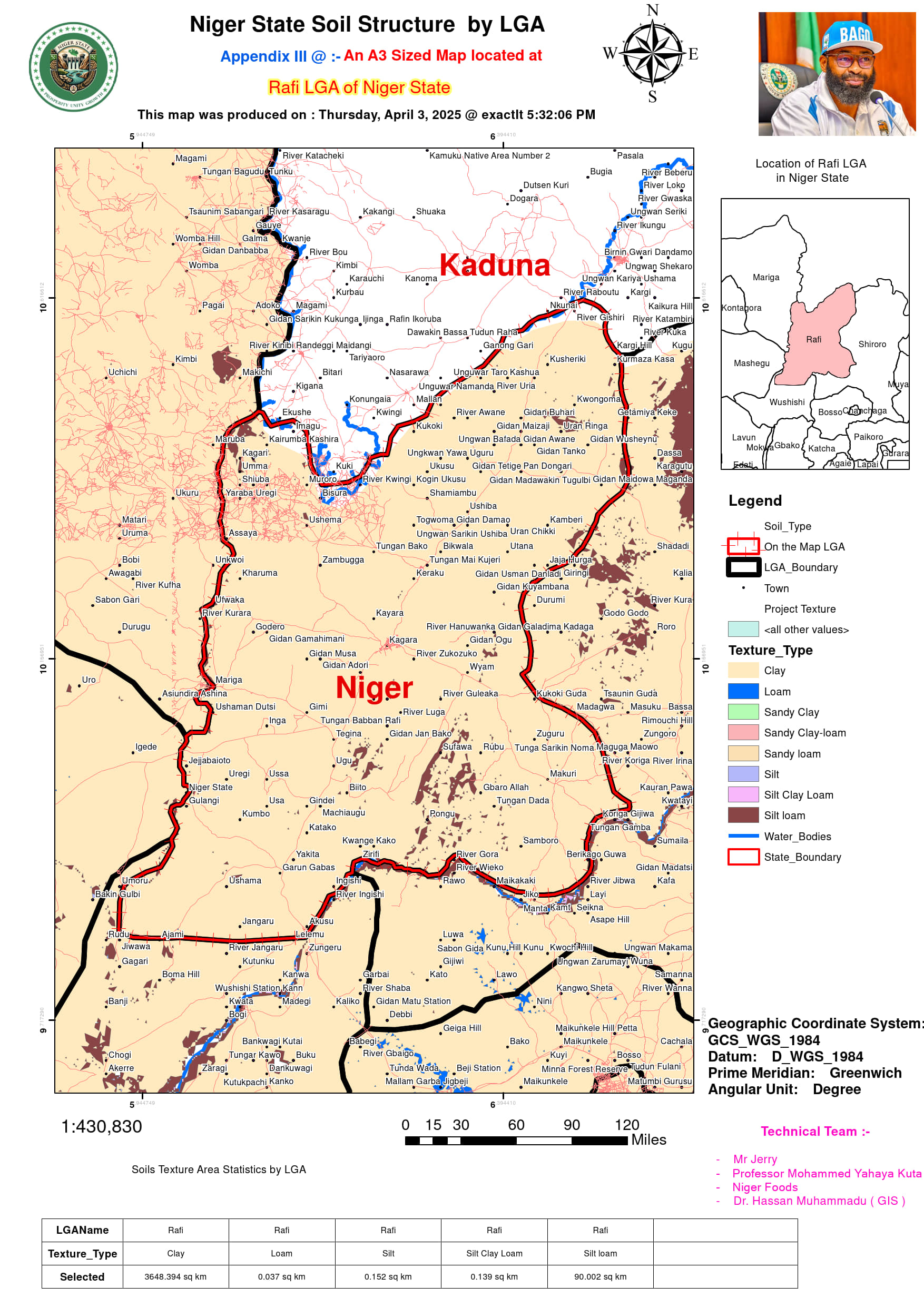
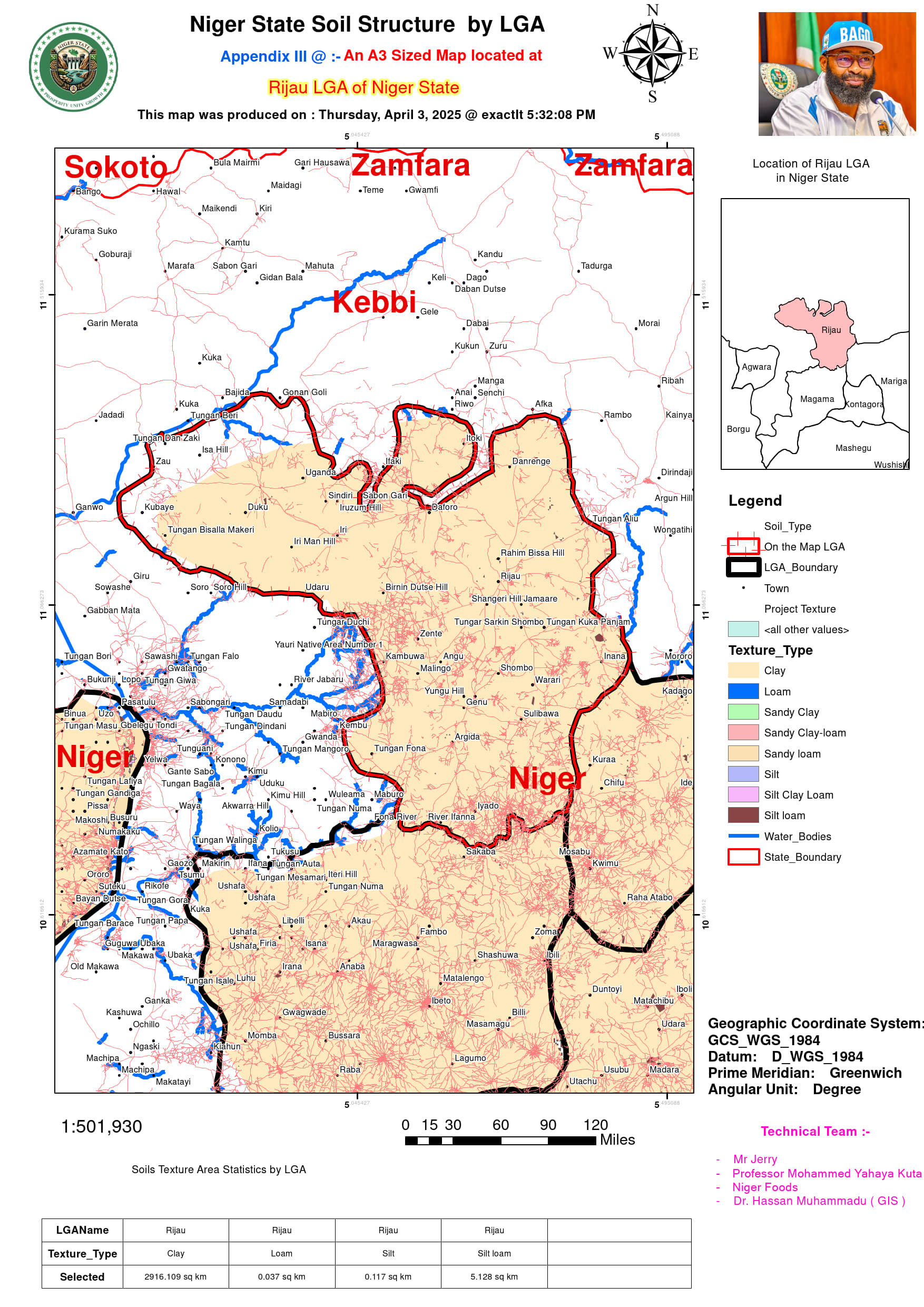

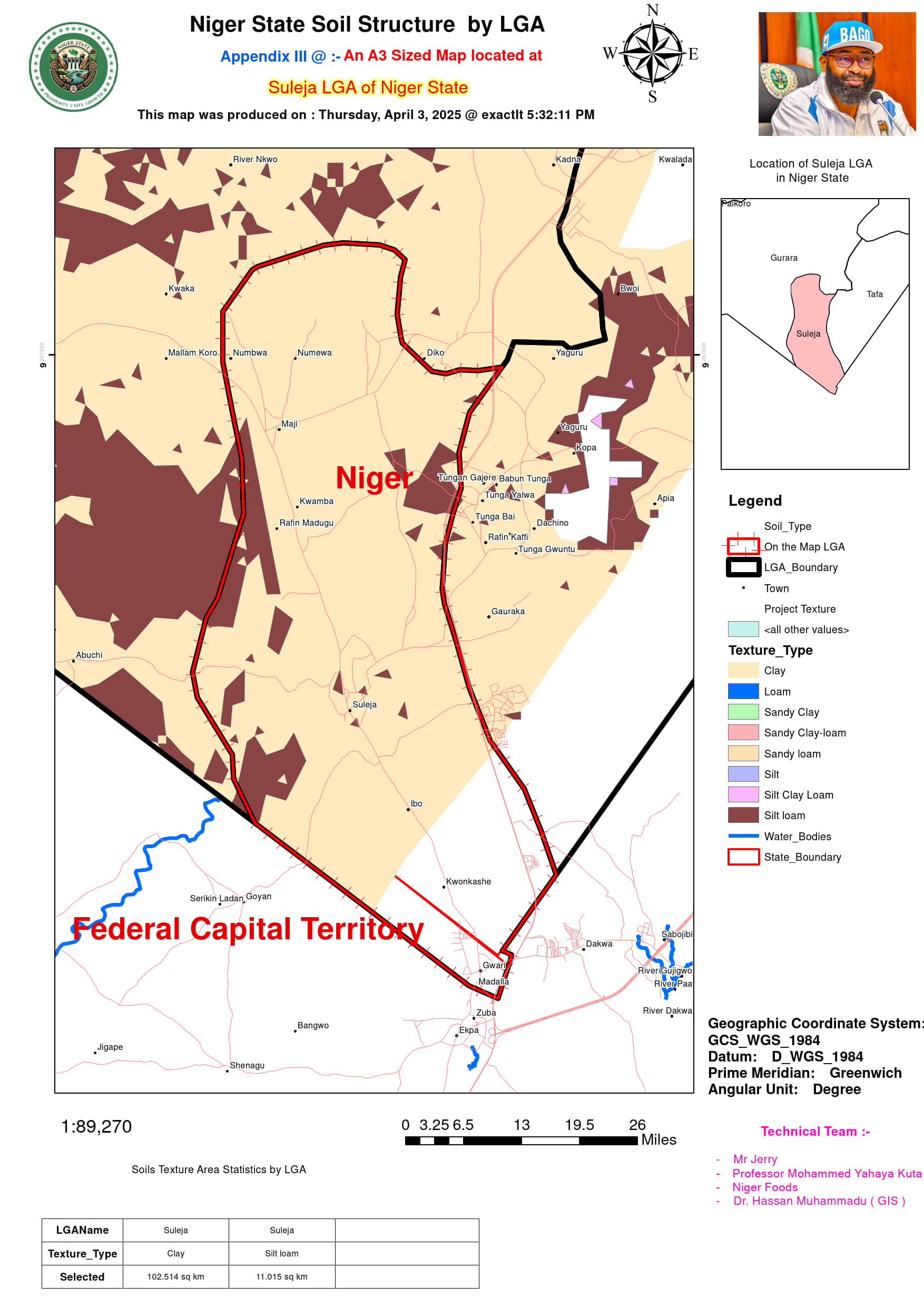
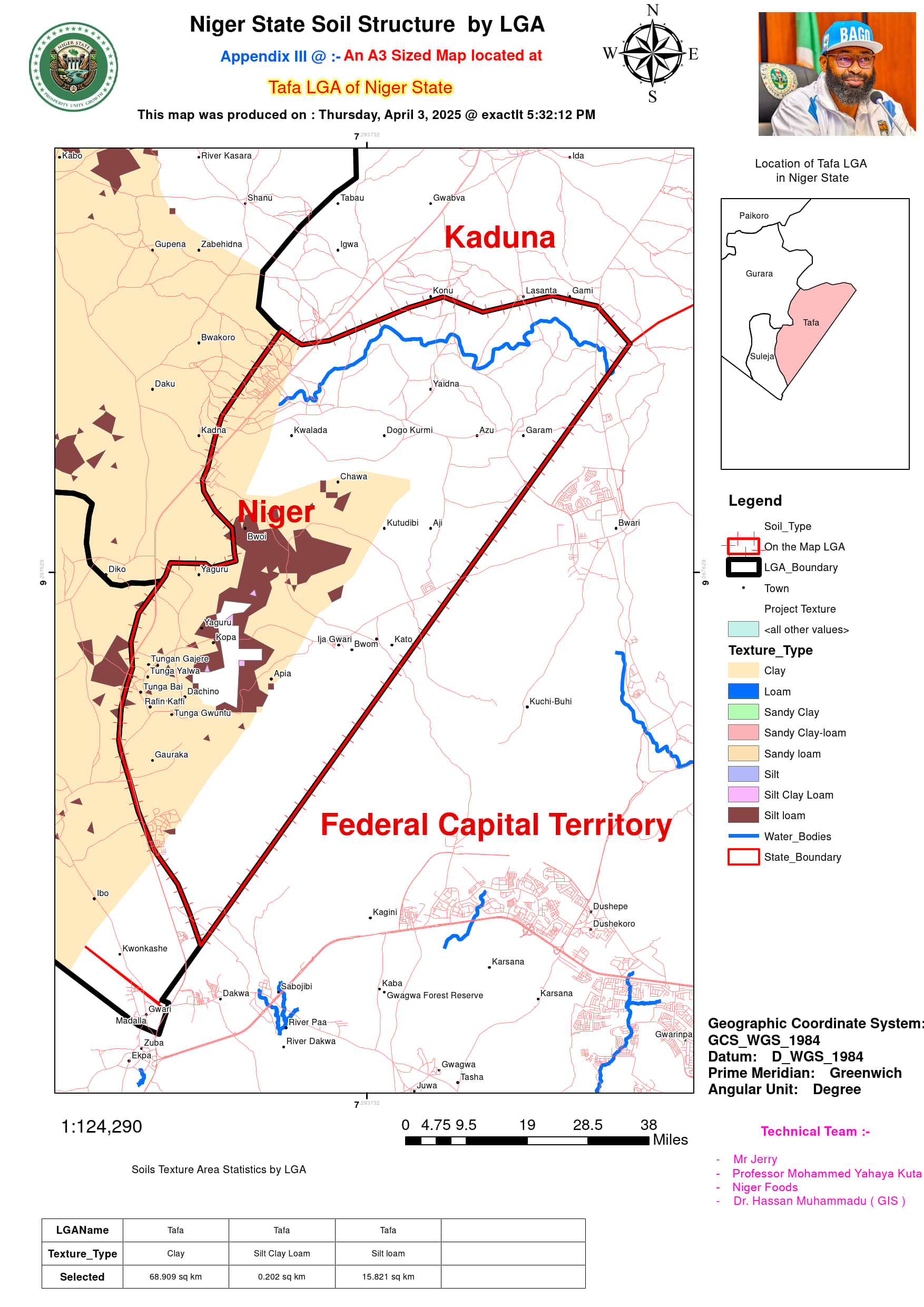

Soil Drainage:
Niger State exhibits diverse soil drainage patterns influenced by its varying geography and climate. In riverine and low-lying LGAs like Agwara, Katcha, and Mokwa, soils tend to be poorly drained due to clay-rich alluvial deposits and frequent flooding, leading to waterlogging. Urbanized areas such as Chanchaga (Minna) and Suleja experience moderate but often altered drainage from human activity, while transitional savanna zones like Edati, Lapai, and Paikoro typically have moderately drained loamy soils, balancing moisture retention and permeability. **Arid and semi-arid northern LGAs—including Borgu, Kontagora, Magama, Rijau, and Wushishi—feature well to excessively drained sandy or rocky soils, causing rapid water infiltration and drought susceptibility. Hilly terrains like Bosso, Gurara, Muya, and Shiroro promote well-drained conditions through natural runoff, whereas floodplain regions (e.g., Bida, Mokwa) struggle with prolonged water retention. Hot, dry savanna LGAs (Agaie, Lavun, Mariga, Mashegu) lean toward faster drainage, with sandy or lateritic soils dominating. Meanwhile, suburban and agriculturally active zones (Gbako, Tafa) maintain moderate drainage, though farming practices can modify natural soil behavior. Overall, drainage efficiency in Niger State ranges from waterlogged river basins to parched, fast-draining arid lands, with significant implications for agriculture, construction, and flood management.
